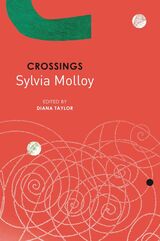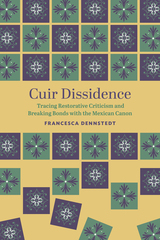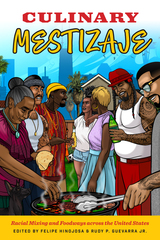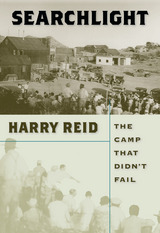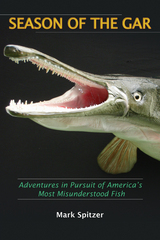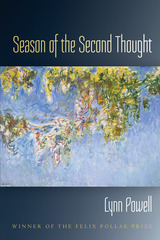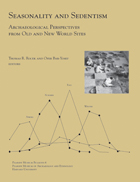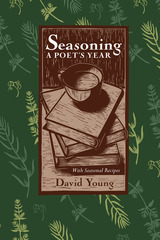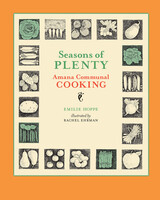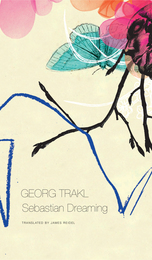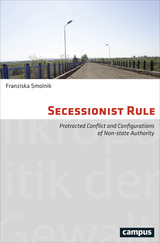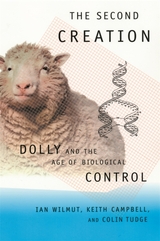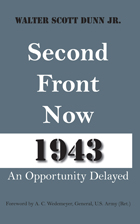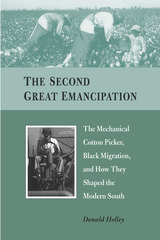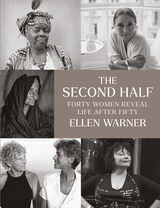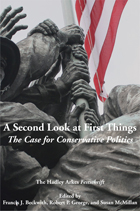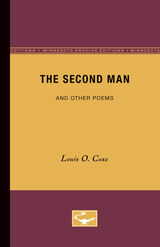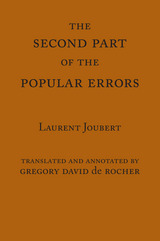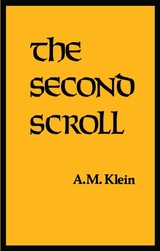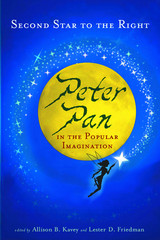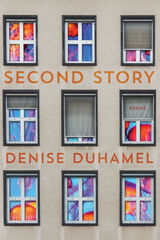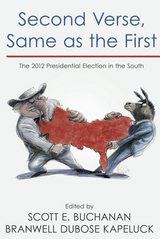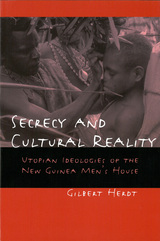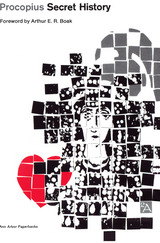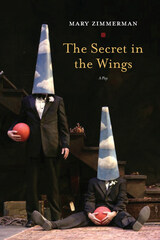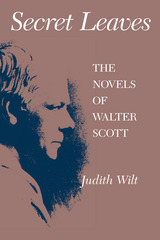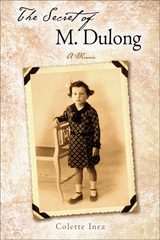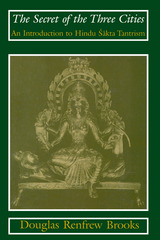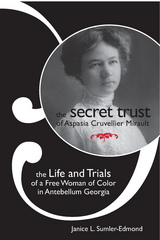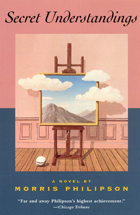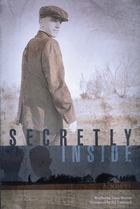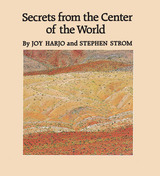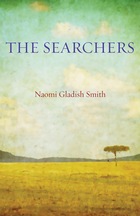 The Searchers
NAOMI GLADISH SMITH
Swedenborg Foundation Publishers, 2011
The third book in Naomi Gladish Smith’s acclaimed series about souls in the afterlife follows a new group of seekers on their journey to heaven—or hell.
Kate Douglas, who spent a lifetime on earth teaching young students, in death finds herself at the Academy, a school for new arrivals in the afterlife. Barely accustomed to her new existence, she’s confronted with the soul of her troubled nephew Dan, who took his own life. Dan struggles to find his path in this new world, encountering the innocent Birgit, who in life was an abused girl, and the beautiful Pegeen, who draws him into the dangerous territory bordering hell. But even as Kate teams up with her friend Frank and budding angel Percy to try to help Dan face his inner demons, Kate must deal with her own issues: her helplessness at watching her husband Howard, still on earth and dying of a degenerative disease; her attraction to Frank; and an assignment to guide a particularly difficult new arrival named Janet. Their fates intertwine as each searches within to discover whether they ultimately bound for heaven or hell.
Inspired by Emanuel Swedenborg’s descriptions of the afterlife, Smith paints a vivid picture of the world of spirits, a spiritual realm between heaven and hell where inner truths are revealed and the distance between any two people is no more than a thought.
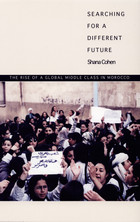 Searching for a Different Future: The Rise of a Global Middle Class in Morocco
Shana Cohen
Duke University Press, 2004 By examining how neoliberal economic reform policies have affected educated young adults in contemporary Morocco, Searching for a Different Future posits a new socioeconomic formation: the global middle class. During Morocco’s postcolonial period, from the 1950s through the 1970s, development policy and nationalist ideology supported the formation of a middle class based on the pursuit of education, employment, and material security. Neoliberal reforms adopted by Morocco since the early 1980s have significantly eroded the capacity of the state to nurture the middle class, and unemployment and temporary employment among educated adults has grown. There is no longer an obvious correlation between the best interests of the state and those of the middle-class worker. As Shana Cohen demonstrates, educated young adults in Morocco do not look toward the state for economic security and fulfillment but toward the diffuse, amorphous global market. Cohen delves into the rupture that has occurred between the middle class, the individual, and the nation in Morocco and elsewhere around the world. Combining institutional economic analysis with cultural theory and ethnographic observation including interviews with seventy young adults in Casablanca and Rabat, she reveals how young, urban, educated Moroccans conceive of their material, social, and political conditions. She finds that, for the most part, they perceive improvement in their economic and social welfare apart from the types of civic participation commonly connected with nationalism and national identity. In answering classic sociological questions about how the evolution of capitalism influences identity, Cohen sheds new light on the measurable social and economic consequences of globalization and on its less tangible effects on individuals’ perception of their place in society and prospects in life.
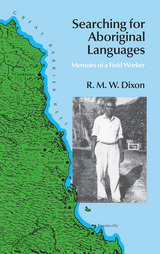 Searching for Aboriginal Languages: Memoirs of a Field Worker
R. M. W. Dixon
University of Chicago Press, 1989 In 1963 R. M. W. (Bob) Dixon set off for Australia, where he was to record, chart, and preserve several of the complex and nearly extinct Aboriginal languages. Beginning with his introduction to these languages while a graduate student at the University of Edinburgh and his difficulties in getting to the Australian bush, Dixon's fourteen-year tale is one of frustration and enlightenment, of setbacks and discoveries.
As he made his way through northern Australia, Dixon was dependent on rumors of Aboriginal speakers, the unreliable advice of white Australians, and the faulty memories of many of the remaining speakers of the languages. Suggestions of informants led him on a circuitous trail through the bush, to speakers such as the singer Willie Kelly in Ravenshoe, who wanted his recordings sent to the south, "where white people would pay big money to hear a genuine Aborigine sing" and Chloe Grant in Murray Upper, who told tales in four dialects of digging wild yams, of the blue-tongue lizard Banggara, and of the arrival of Captain Cook. Dixon tells of obtaining the trust of possible informants, of learning the customs and terrain of the country, and of growing understanding of the culture and tradition of his subjects. And he explains his surprise at his most unexpected discovery: that the rich oral tradition of the "primitive" Aborigines could yield a history of a people, as told by that people, that dates to almost ten millenia before.
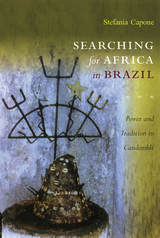 Searching for Africa in Brazil: Power and Tradition in Candomblé
Stefania Capone
Duke University Press, 2010 Searching for Africa in Brazil is a learned exploration of tradition and change in Afro-Brazilian religions. Focusing on the convergence of anthropologists’ and religious leaders’ exegeses, Stefania Capone argues that twentieth-century anthropological research contributed to the construction of an ideal Afro-Brazilian religious orthodoxy identified with the Nagô (Yoruba) cult in the northeastern state of Bahia. In contrast to other researchers, Capone foregrounds the agency of Candomblé leaders. She demonstrates that they successfully imposed their vision of Candomblé on anthropologists, reshaping in their own interest narratives of Afro-Brazilian religious practice. The anthropological narratives were then taken as official accounts of religious orthodoxy by many practitioners of Afro-Brazilian religions in Brazil. Capone draws on ten years of ethnographic fieldwork in Salvador de Bahia and Rio de Janeiro as she demonstrates that there is no pure or orthodox Afro-Brazilian religion. Challenging the usual interpretations of Afro-Brazilian religions as fixed entities, completely independent of one another, Capone reveals these practices as parts of a unique religious continuum. She does so through an analysis of ritual variations as well as discursive practices. To illuminate the continuum of Afro-Brazilian religious practice and the tensions between exegetic discourses and ritual practices, Capone focuses on the figure of Exu, the sacred African trickster who allows communication between gods and men. Following Exu and his avatars, she discloses the centrality of notions of prestige and power—mystical and religious—in Afro-Brazilian religions. To explain how religious identity is constantly negotiated among social actors, Capone emphasizes the agency of practitioners and their political agendas in the “return to roots,” or re-Africanization, movement, an attempt to recover the original purity of a mythical and legitimizing Africa.
 Searching for America's Heart: RFK and the Renewal of Hope
Peter Edelman
Georgetown University Press The New York Times Book Review said that Peter Edelman adheres "to a high-minded worldview"—and he does not hesitate to emphasize that in the Preface to this new paperback edition of Searching for America's Heart by declaring, "I have one voice, but for my part, I will continue to speak what I believe to be the truth." The truth is—from the time Edelman was a close aide to RFK, to when he resigned from the Clinton Administration in protest over the latter's welfare bill (which ended a sixty year federal commitment to poor children)—poverty continues to be a source of shame to the richest nation on earth. Fueled by a vision of economic justice he shared with Robert Kennedy, related here, he advocates an active federal government in correcting inequities in American life. Based partly on initiatives begun by Kennedy, he advocates government support for school reform and more community-based economic development initiatives. Peter Edelman is one of those rare beings in public and political life: a man not only with a conscience, but also with a vision, and the eloquence to speak out for the poor—and the children in poverty—among us.
Searching for Art's New Publics
Edited by Jeni Walwin
Intellect Books, 2010 Drawing on contributions from practicing artists, writers, curators, and academics, Searching for Art’s New Publics explores the ways in which artists seek to involve, create and engage with new and diverse audiences—from passers-by encountering and participating in the work unexpectedly, to professionals from other disciplines and members of particular communities who bring their own agendas to the work. Bridging the gap between practice and theory, this exciting book touches on issues of relational aesthetics, but also offers an illustrated artist-based approach. Searching for Art’s New Publics will appeal to students studying fine art (especially those with an interest in cross-disciplinary work and public art) and those studying curating.
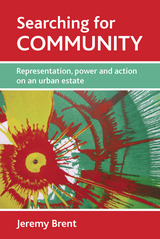 Searching for community: Representation, power and action on an urban estate
Jeremy Brent
Bristol University Press, 2009 At a time when politicians place increasing importance on the role of 'community' in overcoming social problems, 'Searching for community' asks the vital question 'what is community, anyway?'. Is it an answer to social problems or an illusion to be dismissed? This insightful book is written from the perspective of the late Jeremy Brent's thirty year involvement as a youth worker in Southmead, a housing estate in Bristol and a place where discourses of community run strong. "Searching for community" presents a variety of perspectives to challenge the ways in which areas of poverty and disrepute are represented. It examines ways to understand and engage with the troublesome concept of 'community', vividly describing the collective actions of young people and adults to show the way community is enacted as a combination of dreams, actions and materiality.Providing a unique mix of practical knowledge and a sophisticated analysis of popular, professional and theoretical ideas of community, "Searching for community" makes uneasy reading for those looking for simplistic solutions to issues including youth crime, social marginalisation and community empowerment. This accessible book is a must-read for students and practitioners in the fields of community development, sociology and youth work who wish to get beyond the rhetoric and engage with the complexities of discourses of community.
 Searching for Emma: Gustave Flaubert and Madame Bovary
Dacia Maraini
University of Chicago Press, 1997 Although many writers blend autobiography and fiction, few have been so forthright in admitting it as Gustave Flaubert. In reference to his legendary novel and protagonist, he wrote: "Madame Bovary, c'est moi." Madame Bovary has become an icon for casual readers and feminists alike, but, as Dacia Maraini argues, she is one of the most problematic, though fascinating, female protagonists in modern literature. In this lively, learned, and very personal study, Maraini explores the profound and contradictory relationship between the writer Flaubert and the character his readers have grown to love.
Maraini argues that in their desire to claim Emma Bovary as a standard-bearer of revolt, women have often overlooked the bitter, pitiless way in which Flaubert evokes Emma's insignificance and vulgarity. Searching for Emma guides the reader through Flaubert's novel and many of his letters, seeking out the sources of his obsessive cruelty toward Emma. Maraini relates Flaubert's contempt for Emma to his relationship with his mistress, Louise Colet, to his general terror of women, and to his own self-loathing. It was entirely in spite of himself, Maraini writes, that Flaubert created the female Don Quixote so admired for her restlessness and determination.
Searching for Emma offers a novelist's insight into the complex relationship between author and character, and into the deepest motivations of fiction.
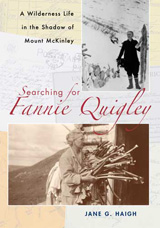 Searching for Fannie Quigley: A Wilderness Life in the Shadow of Mount McKinley
Jane G. Haigh
Ohio University Press, 2007 2008 WILLA Literary Awards finalist
At the age of 27, Fannie Sedlacek left her Bohemian homestead in Nebraska to join the gold rush to the Klondike. From the Klondike to the Tanana, Fannie continued north, finally settling in Katishna near Mount McKinley. This woman, later known as Fannie Quigley, became a prospector who staked her own claims and a cook who ran a roadhouse. She hunted and trapped and thrived for nearly forty years in an environment that others found unbearable.
Her wilderness lifestyle inspired many of those who met her to record their impressions of this self-sufficient woman, who died in 1944. To many of the 700,000 annual visitors to Denali National Park she is a symbol of the enduring spirit of the original pioneers.
Searching for Fannie Quigley: A Wilderness Life in the Shadow of Mount McKinley goes beyond the mere biographical facts of this unique woman’s journey. It also tells historian Jane G. Haigh’s own story of tracking and tracing the many paths that Fannie Quigley’s intriguing life took. Uncovering remote clues, digging through archives, and listening to oral accounts from a wide array of sources, Haigh has fashioned this rich lode into a compelling narrative.
In Searching for Fannie Quigley, Haigh separates fact from fiction to reveal the true story of this highly mythologized pioneer woman.
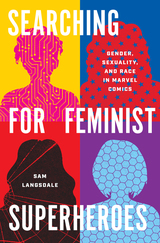 Searching for Feminist Superheroes: Gender, Sexuality, and Race in Marvel Comics
Sam Langsdale
University of Texas Press, 2024 How superhero narratives in the margins of the mainstream tell innovative, feminist stories. It’s no secret that superhero comics and their related media perpetuate a model of a straight, white, male hero at the expense of representing women and other minorities, but other narratives exist. Searching for Feminist Superheroes recognizes that female-led superhero comics, with diverse casts of characters and inclusive storytelling, exist on the margins of the mainstream superhero genre. But rather than focusing on these stories as marginalized, Sam Langsdale’s work on heroes such as Spider-Woman, America Chavez, and Ironheart locates the margins as a site of innovation and productivity, which have enabled the creation of feminist superhero texts. Employing feminist and intersectional philosophies in an analysis of these comics, Langsdale suggests that feminist superheroes have the potential to contribute to a social imagination that is crucial in working toward a more just world. At a time when US popular culture continues to manifest as a battleground between oppressive and progressive social norms, Searching for Feminist Superheroes demonstrates that a fight for a better world is worthwhile.
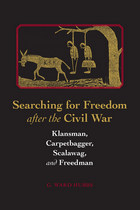 Searching for Freedom after the Civil War: Klansman, Carpetbagger, Scalawag, and Freedman
G. Ward Hubbs
University of Alabama Press, 2015 Winner of the Gulf South Historical Association's Michael Thomas Book Award.
Examines the life stories and perspectives about freedom in relation to the figures depicted in an infamous Reconstruction-era political cartoon
The cartoon first appeared in the Tuskaloosa Independent Monitor, published by local Ku Klux Klan boss Ryland Randolph, as a swaggering threat aimed at three individuals. Hanged from an oak branch clutching a carpetbag marked “OHIO” is the Reverend Arad S. Lakin, the Northern-born incoming president of the University of Alabama. Swinging from another noose is Dr. Noah B. Cloud—agricultural reformer, superintendent of education, and deemed by Randolph a “scalawag” for joining Alabama’s reformed state government. The accompanying caption, penned in purple prose, similarly threatens Shandy Jones, a politically active local man of color.
Using a dynamic and unprecedented approach that interprets the same events through four points of view, Hubbs artfully unpacks numerous layers of meaning behind this brutal two-dimensional image.
The four men associated with the cartoon—Randolph, Lakin, Cloud, and Jones—were archetypes of those who were seeking to rebuild a South shattered by war. Hubbs explores these broad archetypes but also delves deeply into the four men’s life stories, writings, speeches, and decisions in order to recreate each one’s complex worldview and quest to live freely. Their lives, but especially their four very different understandings of freedom, help to explain many of the conflicts of the 1860s. The result is an intellectual tour de force.
General readers of this highly accessible volume will discover fascinating new insights about life during and after America’s greatest crisis, as will scholars of the Civil War, Reconstruction, and southern history.
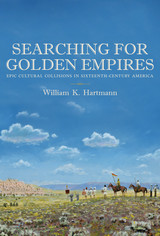 Searching for Golden Empires: Epic Cultural Collisions in Sixteenth-Century America
William K. Hartmann
University of Arizona Press, 2014 This lively book recounts the explorations of the first generations of Spanish conquistadors and their Native allies. Author William K. Hartmann brings readers along as the explorers probe from Cuba to the Aztec capital of Mexico City, and then northward through the borderlands to New Mexico, the Grand Canyon, southern California, and as far as Kansas. Characters include Hernan Cortés, the conqueror; the Aztec ruler Motezuma; Francisco Vázquez de Coronado, a famous expedition leader; fray Marcos de Niza, an explorer-priest doomed to disgrace; and Viceroy Antonio Mendoza, the king’s representative who tried to keep the explorers under control.
Recounting eyewitness experiences that the Spaniards recorded in letters and memoirs, Hartmann describes ancient lifeways from Mexico to the western United States; Aztec accounts of the conquest; discussions between Aztec priests and Spanish priests about the nature of the universe; Cortés’s lifelong relationship with his famous Native mistress, Malinche (not to mention the mysterious fate of his wife); lost explorers who wandered from Florida to Arizona; and Marcos de Niza’s controversial reports of the “Seven Cities of Cíbola.”
Searching for Golden Empires describes how, even after the conquest of Mexico, Cortés remained a “wildcat” competitor with Coronado in a race to see who could find the “next golden empire,” believed to lie in the north. It is an exciting history of the shared story of the United States and Mexico, unveiling episodes both tragic and uplifting.
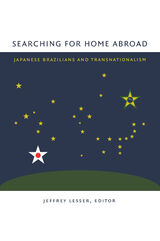 Searching for Home Abroad: Japanese Brazilians and Transnationalism
Jeffrey Lesser, ed.
Duke University Press, 2003 During the first half of the twentieth century, Japanese immigrants entered Brazil by the tens of thousands. In more recent decades that flow has been reversed: more than 200,000 Japanese-Brazilians and their families have relocated to Japan. Examining these significant but rarely studied transnational movements and the experiences of Japanese-Brazilians, the essays in Searching for Home Abroad rethink complex issues of ethnicity and national identity. The contributors—who represent a number of nationalities and disciplines themselves—analyze how the original Japanese immigrants, their descendants in Brazil, and the Japanese-Brazilians in Japan sought to fit into the culture of each country while confronting both prejudice and discrimination. The concepts of home and diaspora are engaged and debated throughout the volume. Drawing on numerous sources—oral histories, interviews, private papers, films, myths, and music—the contributors highlight the role ethnic minorities have played in constructing Brazilian and Japanese national identities. The essayists consider the economic and emotional motivations for migration as well as a range of fascinating cultural outgrowths such as Japanese secret societies in Brazil. They explore intriguing paradoxes, including the feeling among many Japanese-Brazilians who have migrated to Japan that they are more "Brazilian" there than they were in Brazil. Searching for Home Abroad will be of great interest to scholars of immigration and ethnicity in the Americas and Asia. Contributors. Shuhei Hosokawa, Angelo Ishi, Jeffrey Lesser, Daniel T. Linger, Koichi Mori, Joshua Hotaka Roth, Takeyuki (Gaku) Tsuda, Keiko Yamanaka, Karen Tei Yamashita
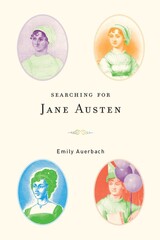 Searching for Jane Austen
Emily Auerbach
University of Wisconsin Press, 2004 Searching for Jane Austen demolishes with wit and vivacity the often-held view of "Jane," a decorous maiden aunt writing her small drawing-room stories of teas and balls. Emily Auerbach presents a different Jane Austen—a brilliant writer who, despite the obstacles facing women of her time, worked seriously on improving her craft and became one of the world’s greatest novelists, a master of wit, irony, and character development.
In this beautifully illustrated and lively work, Auerbach surveys two centuries of editing, censoring, and distorting Austen’s life and writings. Auerbach samples Austen’s flamboyant, risqué adolescent works featuring heroines who get drunk, lie, steal, raise armies, and throw rivals out of windows. She demonstrates that Austen constantly tested and improved her skills by setting herself a new challenge in each of her six novels.
In addition, Auerbach considers Austen’s final irreverent writings, discusses her tragic death at the age of forty-one, and ferrets out ridiculous modern adaptations and illustrations, including ads, cartoons, book jackets, newspaper articles, plays, and films from our own time. An appendix reprints a ground-breaking article that introduced Mark Twain’s "Jane Austen," an unfinished and unforgettable essay in which Twain and Austen enter into mortal combat.
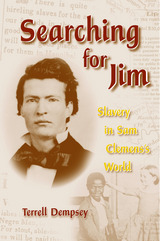 Searching for Jim: Slavery in Sam Clemens's World
Terrell Dempsey
University of Missouri Press, 2005 Searching for Jim is the untold story of Sam Clemens and the world of slavery that produced him. Despite Clemens’s remarks to the contrary in his autobiography, slavery was very much a part of his life. Dempsey has uncovered a wealth of newspaper accounts and archival material revealing that Clemens’s life, from the ages of twelve to seventeen, was intertwined with the lives of the slaves around him. During Sam’s earliest years, his father, John Marshall Clemens, had significant interaction with slaves. Newly discovered court records show the senior Clemens in his role as justice of the peace in Hannibal enforcing the slave ordinances. With the death of his father, young Sam was apprenticed to learn the printing and newspaper trade. It was in the newspaper that slaves were bought and sold, masters sought runaways, and life insurance was sold on slaves. Stories the young apprentice typeset helped Clemens learn to write in black dialect, a skill he would use throughout his writing, most notably in Huckleberry Finn. Missourians at that time feared abolitionists across the border in Illinois and Iowa. Slave owners suspected every traveling salesman, itinerant preacher, or immigrant of being an abolition agent sent to steal slaves. This was the world in which Sam Clemens grew up. Dempsey also discusses the stories of Hannibal’s slaves: their treatment, condition, and escapes. He uncovers new information about the Underground Railroad, particularly about the role free blacks played in northeast Missouri.
Carefully reconstructed from letters, newspaper articles, sermons, speeches, books, and court records, Searching for Jim offers a new perspective on Clemens’s writings, especially regarding his use of race in the portrayal of individual characters, their attitudes, and worldviews. This fascinating volume will be valuable to anyone trying to measure the extent to which Clemens transcended the slave culture he lived in during his formative years and the struggles he later faced in dealing with race and guilt. It will forever alter the way we view Sam Clemens, Hannibal, and Mark Twain.
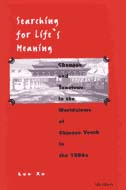 Searching for Life's Meaning: Changes and Tensions in the Worldviews of Chinese Youth in the 1980s
Luo Xu
University of Michigan Press, 2002 How did a self-centered "me generation" engage in a student movement that developed into the largest urban protest in modern Chinese history? Searching for Life's Meaning explores the profound changes in the beliefs and values of Chinese youth that occurred during the 1980s and that ultimately led to the confrontation in Tiananmen Square in 1989.
Drawing on his own experience as a teacher at Capital Normal University in Beijing, China during the 1980s, as well as exhaustive research, Luo Xu investigates the social and political climate of 1980s China in order to help better define the culture that ultimately drove the events at Tiananmen. Supporting his arguments with solid primary source documents, Xu contends that the contemplation of the meaning of life, along with other philosophical questions, were integral components of the general social crisis leading up to the movement of 1989.
Elegantly written and accessible to a general readership, this study will also be useful to specialists. Searching for Life's Meaning is a concise but detailed introduction to the mentalities of the Chinese generation presently assuming leadership in China. It should be valuable reading in courses on Chinese history and politics, and will be of interest to scholars in the related fields of Asian studies, anthropology, cultural studies, and youth studies. The book will also appeal to business- people and other professionals concerned with managing relations with the world's fastest growing polity.
Luo Xu is Assistant Professor of History, State University of New York College at Cortland.
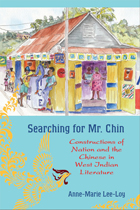 Searching for Mr. Chin: Constructions of Nation and the Chinese in West Indian Literature
Authored by Anne-Marie Lee-Loy
Temple University Press, 2010 What do twentieth-century fictional images of the Chinese reveal about the construction of nationhood in the former West Indian colonies? In her groundbreaking interdisciplinary work, Searching for Mr. Chin, Anne-Marie Lee-Loy seeks to map and understand a cultural process of identity formation: “Chineseness” in the West Indies. Reading behind the stereotypical image of the Chinese in the West Indies, she compares fictional representations of Chinese characters in Jamaica, Trinidad, and Guyana to reveal the social and racial hierarchies present in literature by popular authors such as V.S. Naipaul and Samuel Selvon, as well as lesser known writers and hard to access literary texts. Using historical, discursive, and theoretical frameworks for her literary analysis, Lee-Loy shows how the unstable and ambiguous “belonging” afforded to this “middleman minority” speaks to the ways in which narrative boundaries of the nation are established. In addition to looking at how Chinese have been viewed as “others,” Lee-Loy examines self-representations of “Chineseness” and how they complicate national narratives of belonging.
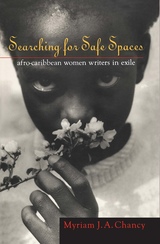 Searching for Safe Spaces: Afro-Caribbean Women Writers in Exile
Myriam Chancy
Temple University Press, 1997 Home. Exile. Return. Words heavy with meaning and passion. For Myriam Chancy, these three themes animate the lives and writings of dispossessed Afro-Caribbean women.
Understanding exile as flight from political persecution or types of oppression that single out women, Chancy concentrates on diasporic writers and filmmakers who depict the vulnerability of women to poverty and exploitation in their homelands and their search for safe refuge. These Afro-Caribbean feminists probe the complex issues of race, nationality, gender, sexuality, and class that limit women's lives. They portray the harsh conditions that all too commonly drive women into exile, depriving them of security and a sense of belonging in their adopted countries -- the United States, Canada, or England.
As they rework traditional literary forms, artists such as Joan Riley, Beryl Gilroy, M. Noubese Philip, Dionne Brand, Makeda Silvera, Audre Lorde, Rosa Guy, Michelle Cliff, and Mari Chauvet give voice to Åfro-Caribbean women's alienation and longing to return home. Whether their return is realized geographically or metaphorically, the poems, fiction, and film considered in this book speak boldly of self-definition and transformation.
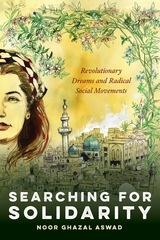 Searching for Solidarity: Revolutionary Dreams and Radical Social Movements
Noor Ghazal Aswad
Ohio State University Press, 2025 In Searching for Solidarity, Noor Ghazal Aswad explores how the emancipatory qualities of transnational revolutionary struggle are often denied, misunderstood, and erased. Drawing on the stories of those in struggle, Searching for Solidarity reimagines solidarity as an affective, ethical, and political capacity that can thrive amid today’s volatile “political economy of emotion”—an environment marked by mistrust, fake news, and disinformation campaigns targeting those in resistance. At the heart of this book is the “radical subject,” which refers to those revolting against repressive forces to achieve liberatory change at the risk of death, injury, or disappearance. These radical subjects offer a new foundation for critical theory—one that rejects “negative solidarity,” the tendency to acquiesce to power or distance oneself from those fighting against systemic injustice. By immersing readers in the testimony, memory, and hopes of these subjects, each chapter reveals solidarity as an affective force capable of cutting through distortive narratives and binding us in a cross-cultural, decolonizing, and nonhierarchical collectivity. Solidarity, through this lens, emerges as a transformative stance that compels us to, as Yassin al-Haj Saleh writes, become “partners in word and deed to change power.”
 Searching for Soul: A Survivor's Guide
Bobbe Tyler
Ohio University Press, 2009 Winner of a da Vinci Eye Medal for Superior Cover Design
Shortlisted for the 2010 Eric Hoffer Award’s Montaigne Medal
To dive deep into your inner life. To explore what matters most: wisdom, happiness, the pain of loss, self–accountability, aging, and more. Searching for Soul: A Survivor’s Guide is a breathtakingly honest case study: a self-examination resulting in the discovery of a meaningful life.
Bobbe Tyler blends her story with in-depth commentary, framing each chapter as a response to one of a set of questions, appended to the book, entitled The Harvesting Wisdom Interview. In her search for fulfillment, Tyler asks and answers the most difficult questions about the trauma of mental illness, divorce, financial and emotional despair. The rewards of this hard–won wisdom belong not to her alone but by way of her unflinching examination of life’s many paths, dead ends, and circuitous routes — to anyone who has faced a life–choice gone wrong — or known the indescribable recovery from addiction or abuse, or longed for the peace that seems just out of reach. This searing self–appraisal provides hope and fellowship for those who seek to know themselves better.
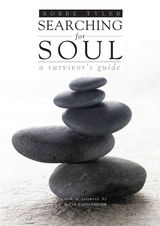 Searching for Soul: A Survivor’s Guide
Bobbe Tyler
Ohio University Press, 2009 To dive deep into your inner life. To navigate its complexity and explore your story in depth. To discover who you are exactly—the courage you have when life breaks apart, how conscious you become in that process, and how rich you feel learning the meaning of your life. On a search for wholeness, Bobbe Tyler delves deep to find and tell her story—the trauma of familial mental illness, marriage and divorce, spiritual despair, accountability, addiction and the joy of recovery, surviving loss, and finally that which matters most: love in all its ways. The rewards of her wisdom belong not to her alone but, by way of her unflinching examination of life’s many paths, to all who have a story of their own to tell—who have faced a life-choice gone wrong, or met the peace that had always seemed just out of reach. This searing self-appraisal provides a model for those who seek to know themselves better and are willing to sound their depths to find their story in full.
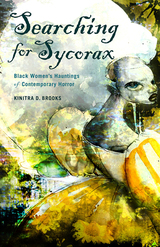 Searching for Sycorax: Black Women's Hauntings of Contemporary Horror
Brooks, Kinitra D
Rutgers University Press, 2018 Searching for Sycorax highlights the unique position of Black women in horror as both characters and creators. Kinitra D. Brooks creates a racially gendered critical analysis of African diasporic women, challenging the horror genre’s historic themes and interrogating forms of literature that have often been ignored by Black feminist theory. Brooks examines the works of women across the African diaspora, from Haiti, Trinidad, and Jamaica, to England and the United States, looking at new and canonized horror texts by Nalo Hopkinson, NK Jemisin, Gloria Naylor, and Chesya Burke. These Black women fiction writers take advantage of horror’s ability to highlight U.S. white dominant cultural anxieties by using Africana folklore to revise horror’s semiotics within their own imaginary. Ultimately, Brooks compares the legacy of Shakespeare’s Sycorax (of The Tempest) to Black women writers themselves, who, deprived of mainstream access to self-articulation, nevertheless influence the trajectory of horror criticism by forcing the genre to de-centralize whiteness and maleness.
 Searching for the Invisible Man: Slaves and Plantation Life in Jamaica
Michael Craton
Harvard University Press, 1978 Though centered on a single Jamaican sugar estate, Worthy Park, and dealing largely with the period of formal slavery, this book is firmly placed in far wider contexts of place and time. The "Invisible Man" of the title is found, in the end, to be not just the formal slave but the ordinary black worker throughout the history of the plantation system.
Michael Craton uses computer techniques in the first of three main parts of his study to provide a dynamic analysis of the demographic, health, and socioeconomic characteristics of the Worthy Park slaves as a whole. The surprising diversity and complex interrelation of the population are underlined in Part Two, consisting of detailed biographies of more than 40 individual members of the plantation's society, including whites and mulattoes as well as black slaves. This is the most ambitious attempt yet made to overcome the stereotyping ignorance of contemporary white writers and the muteness of the slaves themselves.
Part Three is perhaps the most original section of the book. After tracing the fate of the population between the emancipation of 1838 and the present day through genealogies and oral interviews, Craton concludes that the predominant feature of plantation life has not been change but continuity, and that the accepted definitions of slavery need considerable modification.
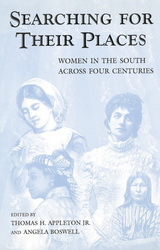 Searching for Their Places: Women in the South across Four Centuries
Edited by Thomas H. Appleton, Jr. & Angela Boswell
University of Missouri Press, 2003
Searching for Their Places is a collection inspired by the Fifth Southern Conference on Women’s History. The essays in this volume are particularly astute in assessing how southern women, in the course of “searching for their places,” have individually or collectively sought to empower themselves. The essays, written by outstanding historians in this field, represent some of the freshest and most exciting scholarship about women in the South. They convincingly illustrate how the national experience looks different when southern women become the focus.
The essayists use extensive analyses of primary source materials to examine a variety of issues that have confronted women in the South from the days of English colonization through the civil rights struggles of the post–World War II era. The collection is well balanced in its periodization, with one essay on the seventeenth century, four on the antebellum years, one on the Civil War, three on the immediate postbellum era, and four based in the twentieth century.
Studying women of different colors, backgrounds, and stations across the region and across four centuries, Searching for Their Places will appeal to historians, the general reader, and anyone interested in women’s studies.
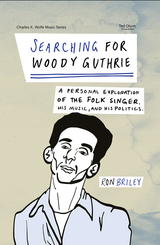 Searching for Woody Guthrie: A Personal Exploration of the Folk Singer, His Music, and His Politics
Ron Briley
University of Tennessee Press, 2019 Born in the summer of 1912, Woody Guthrie remains one of the most significant figures in American folk music to this day. While most Americans know his iconic anthem “This Land Is Your Land,” surprisingly few understand Guthrie’s place in the greater context of American radicalism and protest in the 1930s and beyond.
In Searching for Woody Guthrie, Ron Briley embarks on a chronological exploration of Guthrie’s music in the vein of American radicalism and civil rights. Briley begins this journey with an overview of five key periods in Guthrie’s life and, in the chapters that follow, analyzes his political ideas through primary and secondary source materials.
While numerous biographies on Woody Guthrie exist—including Guthrie’s own 1943 autobiography—this book takes a different approach. Less biographical and more thematic in nature, Searching for Woody Guthrie centers around Guthrie’s faith in the common working people of America, bringing together People’s Daily World “Woody Sez” newspaper columns, Guthrie centennial secondary source texts, research in the Woody Guthrie Archives, and Briley’s own personal reflections to present a narrative that is at once personal to the author and relatable to America’s rural working class.
Interlacing Guthrie’s music with his own geographic and economic background, Briley presents an original and eloquent chronology of Guthrie’s life and work in what amounts to a compelling new case for why that work, more than fifty years after Guthrie’s death, continues to leave its mark.
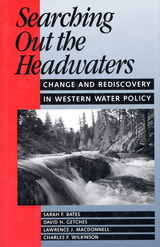 Searching Out the Headwaters: Change And Rediscovery In Western Water Policy
Sarah F. Bates, David H. Getches, Lawrence J. MacDonnell, and Charles F. Wilkinson; Natural Resources Law Center
Island Press, 1993 To the uninitiated, water policy seems a complicated, hypertechnical, and incomprehensible subject: a tangle of engineering jargon and legalese surrounding a complex, delicate, and interrelated structure. Decisions concerning the public's waters involve scant public participation, and in such a context, reform seems risky at best. Searching Out the Headwaters addresses that precarious situation by providing a thorough and straightforward analysis of western water use and the outmoded rules that govern it. The authors begin by tracing the history and evolution of the uses of western water. They describe the demographic and economic changes now occurring in the region, and identify the many communities of interest involved in all water-use issues. After an examination of the central precepts of current water policy, along with their original rationale and subsequent evolution, they consider the reform movement that has recently begun to emerge. In the end, the authors articulate the foundations for a water policy that can meet the needs of the new West and discuss the various means for effectively implementing such a policy, including market economics, regulation, the broad-based use of scientific knowledge, and open and full public participation.
Searchlight: The Camp That Didn't Fail
Harry Reid
University of Nevada Press, 2007 Deep in the desolate Mojave Desert in Nevada’s extreme southern tip lies a small mining town called Searchlight. This meticulously researched book by Searchlight’s most distinguished native son recounts the colorful history of the town and the lives of the hardy people who built it and sustained a community in one of the least hospitable environments in the United States. Its story encompasses both Nevada’s early twentieth-century mining boom and the phenomenal growth of southern Nevada after World War II. Searchlight is a valuable contribution to the history of Nevada and a lively account of life in the forbidding depths of the Mojave Desert.<br> <br>
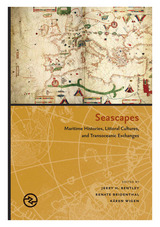 Seascapes: Maritime Histories, Littoral Cultures, and Transoceanic Exchanges
edited by Jerry H. Bentley, Renate Bridenthal, and Kären Wigen
University of Hawaii Press, 2007 Historians have only recently begun to chart the experiences of maritime regions in rich detail and penetrate the historical processes at work there. Seascapes makes a major contribution to these efforts by bringing together original scholarship on historical issues arising from maritime regions around the world.
The essays presented here take a variety of approaches. One group examines the material, cultural, and intellectual constructs that inform and explain historical experiences of maritime regions. Another set discusses efforts—some more successful than others—to impose political and military control over maritime regions. A third group focuses on issues of social history such as labor organization, information flows, and the development of political consciousness among subaltern populations. The final essays deal with pirates and efforts to control them in Mediterranean, Japanese, and Atlantic waters.
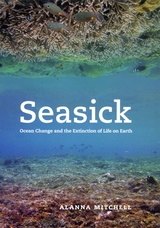 Seasick: Ocean Change and the Extinction of Life on Earth
Alanna Mitchell
University of Chicago Press, 2009 We have long lorded over the ocean. But only recently have we become aware of the myriad life-forms beneath its waves. We now know that this delicate ecosystem is our life-support system; it regulates the earth’s temperatures and climate and comprises 99 percent of living space on earth. So when we change the chemistry of the whole ocean system, as we are now, life as we know it is threatened.
In Seasick, veteran science journalist Alanna Mitchell dives beneath the surface of the world’s oceans to give readers a sense of how this watery realm can be managed and preserved, and with it life on earth. Each chapter features a different group of researchers who introduce readers to the importance of ocean currents, the building of coral structures, or the effects of acidification. With Mitchell at the helm, readers submerge 3,000 feet to gather sea sponges that may contribute to cancer care, see firsthand the lava lamp–like dead zone covering 17,000 square kilometers in the Gulf of Mexico, and witness the simultaneous spawning of corals under a full moon in Panama.
The first book to look at the planetary environmental crisis through the lens of the global ocean, Seasick takes the reader on an emotional journey through a hidden realm of the planet and urges conservation and reverence for the fount from which all life on earth sprang.
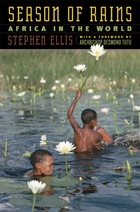 Season of Rains: Africa in the World
Stephen Ellis
University of Chicago Press, 2012 Africa is playing a more important role in world affairs than ever before. Yet the most common images of Africa in the American mind are ones of poverty, starvation, and violent conflict. But while these problems are real, that does not mean that Africa is a lost cause. Instead, as Stephen Ellis explains in Season of Rains, we need to rethink Africa’s place in time if we are to understand it in all its complexity—it is a region where growth and prosperity coexist with failed states. This engaging, accessible book by one of the world’s foremost researchers on Africa captures the broad spectrum of political, economic, and social foundations that make Africa what it is today. Ellis is careful not to position himself in the futile debate between Afro-optimists and Afro-pessimists. The forty-nine diverse nations that make up sub-Saharan Africa are neither doomed to fail nor destined to succeed. As he assesses the challenges of African sovereignties, Ellis is not under the illusion that governments will suddenly become more benevolent and less corrupt. Yet, he sees great dynamism in recent technological and economic developments. The proliferation of mobile phones alone has helped to overcome previous gaps in infrastructure, African retail markets are becoming integrated, and banking is expanding. Businesses from China and emerging powers from the West are investing more than ever before in the still land-rich region, and globalization is offering possibilities of enormous economic change for the growing population of one billion Africans, actively engaged in charting the future of their continent. This highly readable survey of the continent today offers an indispensable guide to how money, power, and development are shaping Africa’s future.
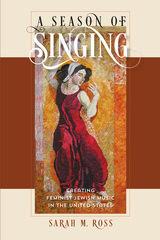 A Season of Singing: Creating Feminist Jewish Music in the United States
Sarah M. Ross
Brandeis University Press, 2016 In the 1960s, Jewish music in America began to evolve. Traditional liturgical tunes developed into a blend of secular and sacred sound that became known in the 1980s as “American Nusach.” Chief among these developments was the growth of feminist Jewish songwriting. In this lively study, Sarah M. Ross brings together scholarship on Jewish liturgy, U.S. history, and musical ethnology to describe the multiple roots and development of feminist Jewish music in the last quarter of the twentieth century. Focusing on the work of prolific songwriters such as Debbie Friedman, Rabbi Geela Rayzel Raphael, Rabbi Hanna Tiferet Siegel, and Linda Hirschhorn, this volume illuminates the biographies and oeuvres of innovators in the field, and shows how this new musical form arose from the rich contexts of feminism, identity politics, folk music, and Judaism. In addition to providing deep content analysis of individual songs, Ross examines the feminist Jewish music scene across the United States, the reception of this music, challenges to disseminating the music beyond informal settings, and the state of Jewish music publishing. Rounding out the picture of the transformation of Jewish music, the volume contains appendixes of songs and songwriters a selection of musical transcriptions of feminist Jewish songs, and a comprehensive discography. This book will interest scholars and students in the fields of American Jewish history, women’s studies, feminism, ethnomusicology, and contemporary popular and folk music.
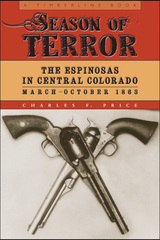 Season of Terror: The Espinosas in Central Colorado, March–October 1863
Charles F. Price
University Press of Colorado, 2013 Season of Terror is the first book-length treatment of the little-known true story of the Espinosas—serial murderers with a mission to kill every Anglo in Civil War–era Colorado Territory—and the men who brought them down.
For eight months during the spring and fall of 1863, brothers Felipe Nerio and José Vivián Espinosa and their young nephew, José Vincente, New Mexico–born Hispanos, killed and mutilated an estimated thirty-two victims before their rampage came to a bloody end. Their motives were obscure, although they were members of the Penitentes, a lay Catholic brotherhood devoted to self-torture in emulation of the sufferings of Christ, and some suppose they believed themselves inspired by the Virgin Mary to commit their slaughters.
Until now, the story of their rampage has been recounted as lurid melodrama or ignored by academic historians. Featuring a fascinating array of frontier characters, Season of Terror exposes this neglected truth about Colorado’s past and examines the ethnic, religious, political, military, and moral complexity of the controversy that began as a regional incident but eventually demanded the attention of President Lincoln.
Season of the Gar: Adventures in Pursuit of America's Most Misunderstood Fish
Mark Spitzer
University of Arkansas Press, 2010 Season of the Gar is a fang-infested, monster-headed, armor-plated romp through the prehistoric swamps and murky rivers of America’s most feared and demonized fish. Follow Mark Spitzer on his lengthy and often frustrating quest from Texas and Louisiana, Missouri, and Arkansas to catch his own gar. Read about his sometimes bizarre angling adventures in search of this air-breathing freshwater giant (up to ten feet in length and well over three hundred pounds) as he separates fact from fiction. Spitzer draws on folklore, science, history, his own pet gar, and even gar recipes to tell this unique and exciting literary eco-tale about a fish that has inspired imaginations for centuries, a fish many have hated, a fish many have thrown on the shore to die.
Season of the Second Thought
Lynn Powell
University of Wisconsin Press, 2017 Winner of the Felix Pollak Prize in Poetry, selected by Robert Wrigley
Season of the Second Thought begins in a deep blue mood, longing to find words for what feels beyond saying. Lynn Powell's poems journey through the seasons, quarreling with the muse, reckoning with loss, questioning the heart and its "pedigree of Pentecost," and seeking out paintings in order to see inside the self. With their crisp observations and iridescent language, these poems accumulate the bounty of an examined life. These lines emerge from darkness into a shimmering equilibrium—witty, lush, and hard-won.
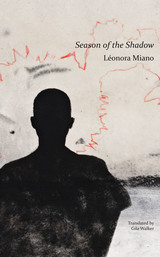 Season of the Shadow
Léonora Miano
Seagull Books, 2018 Now in paperback, a brutal and dreamlike story about the first victims of the transatlantic slave trade.
This powerful novel presents the early days of the transatlantic slave trade from a new perspective: that of the sub-Saharan population that became its first victims. Cameroonian novelist Léonora Miano presents a world on the brink of disappearing—a pre-colonial civilization with roots that stretch back for centuries. One day, a group of villagers finds twelve of their people missing. Where have they gone? Who is responsible? A collective dream, troubling a group of mothers in a communal dwelling, may have some of the answers, as the women’s missing sons call to them in terror; at the same time, a thick shadow settles over the huts, blocking out the light of day. It is the shadow of slavery, which will soon grow to blight the whole world.
Miano renders this brutal story in deliberately strange, dreamlike prose, befitting a situation that is, on its face, all but impossible for the villagers to believe.
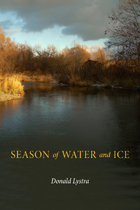 Season of Water and Ice
Donald Lystra
Northern Illinois University Press, 2009
Set in 1957 in rural northern Michigan, Season of Water and Ice is the story of a pivotal few months in the life of young teen Danny DeWitt, who lives alone with his father following the sudden departure of his mother. Bookish and relatively friendless, Danny becomes acquainted with Amber, a pregnant teenager abandoned by her boyfriend and rejected by her family. Both outsiders—one because of disposition, the other because of social stigma—Danny and Amber form an unusual, openhearted alliance that helps each deal with their separate challenges.
Their friendship is tested when Amber’s abusive boyfriend returns and Danny’s mother withdraws more permanently from her family, leading eventually to a crisis that threatens Amber and her unborn child, as well as Danny’s concept of love and manhood.
Danny struggles to understand himself and the confusing and, at times, frightening world in which he lives. His analytically oriented mind attempts to make sense of the rigid stereotypes of the 1950s, revealing startling truths about the abiding issues of love and family and the dangers to which these ideals are continually exposed.
Danny straddles the uncertain gap between childhood and adulthood in this novel that is underscored by themes of independence and obligation, love and sexuality, courage and surrender. This realistic work will appeal to both adult and young adult readers.
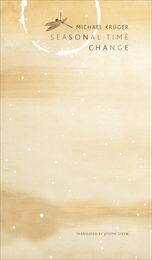 Seasonal Time Change: Selected Poems
Michael Krüger
Seagull Books, 2015 Our twice-yearly daylight savings holiday, in which we faithfully, collectively adjust our clocks, is purely human tampering with the calendar. Yet, it is a practice that is embedded in nature’s principles, even as we exact more sunlight for ourselves in an over-organized, technological world. Mirroring this dichotomy, Michael Krüger brings us The Seasonal Time Change, a collection of poems where an exacting eye is cast on nature. The poet’s perspective is observant, stringent, and very human, bringing both intellect and emotion to the page. Translated by Joseph Given, the verses are in turn scrutinizing, wistful of the brutality of nature, and rejoicing in the simple wonder of life.
Bearing witness to Krüger’s interactions with renowned poets and artists through his time as director of Hanser publishing house, proximity and relationships are ongoing themes in this volume. Together, the poems remind us of our own mortality and of the finiteness of nature, but also our need for celebration even—perhaps especially—in times of darkness.
Seasonality and Sedentism: Archaeological Perspectives from Old and New World Sites
Thomas R. Rocek
Harvard University Press, 1998 The papers in this volume explore the issues and techniques of archaeological site seasonality and settlement analysis. Through a series of case studies and theoretical discussions, the papers examine a range of data from Europe (Spain, Bosnia-Herzegovina), Southwest Asia (Israel), East Asia (Japan), North America (Southwest and Southeast United States), and South America (Colombia and Peru). These examples introduce a broad range of specific analytical techniques of seasonality assessment and show variability and similarity in settlement patterns worldwide. In the process, they demonstrate the range of regional traditions of archaeological settlement analysis, and the complementarity of the approaches developed in the different regions.
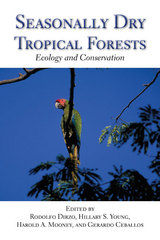 Seasonally Dry Tropical Forests: Ecology and Conservation
Edited by Rodolfo Dirzo, Hillary S. Young, Harold A. Mooney, and Gerardo Ceballos
Island Press, 2010 Though seasonally dry tropical forests are equally as important to global biodiversity as tropical rainforests, and are one of the most representative and highly endangered ecosystems in Latin America, knowledge about them remains limited because of the relative paucity of attention paid to them by scientists and researchers and a lack of published information on the subject.
Seasonally Dry Tropical Forests seeks to address this shortcoming by bringing together a range of experts in diverse fields including biology, ecology, biogeography, and biogeochemistry, to review, synthesize, and explain the current state of our collective knowledge on the ecology and conservation of seasonally dry tropical forests.
The book offers a synthetic and cross-disciplinary review of recent work with an expansive scope, including sections on distribution, diversity, ecosystem function, and human impacts. Throughout, contributors emphasize conservation issues, particularly emerging threats and promising solutions, with key chapters on climate change, fragmentation, restoration, ecosystem services, and sustainable use.
Seasonally dry tropical forests are extremely rich in biodiversity, and are seriously threatened. They represent scientific terrain that is poorly explored, and there is an urgent need for increased understanding of the system's basic ecology. Seasonally Dry Tropical Forests represents an important step in bringing together the most current scientific information about this vital ecosystem and disseminating it to the scientific and conservation communities.
Seasoned Authors for a New Season: The Search for Standards in Popular Writing
Edited by Louis Filler
University of Wisconsin Press, 1980 This collection of essays probes the values in a variety of authors who have had in common the fact of popularity and erstwhile reputation. Why were they esteemed? Who esteemed them? And what has become of their reputations, to readers, to the critic himself? No writer here has been asked to justify the work of his subject, and reports and conclusions about this wide variety of creative writers vary, sometimes emphasizing what the critic believes to be enduring qualities in the subject, in several cases finding limitations in what that writer has to offer us today.
SEASONING: A Poet’s Year, with Seasonal Recipes
David Young
Ohio State University Press, 1999 David Young combines autobiography, poetry, nature writing, and food writing in a remarkable book that celebrates life without denying its losses and mysteries. Organized by the months of the year, Seasoning traces the passing of time and the cycles of loss and renewal, meditating on the human place in the natural world.
Set in northeastern Ohio, where the author has lived and worked for close to forty years, Seasoning demonstrates that an “unremarkable” place—no grand scenery, no special claims to beauty—can be the perfect setting in which to learn about animals, plants, food, geology, history, weather, and time. Coming to terms with place and time, and connecting them, the author suggests, may be our true task in life.
Among the many distinctive features of this lovely book are the recipes, arranged seasonally and revealing Young’s preference for natural foods prepared with care.
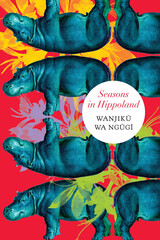 Seasons in Hippoland
Wanjiku Wa Ngugi
Seagull Books, 2021 An enchanting novel of magical realism from a new voice, Kenyan author Wanjikũ Wa Ngũgĩ.
Victoriana is a country ruled by an Emperor-for-Life who is dying from an illness not officially acknowledged in a land where truth and facts are decided by the Emperor. The elite goes along with the charade. Their children are conditioned to conform. It is a land of truthful lies, where reality has uncertain meaning.
Mumbi, a rebellious child from the capital of Westville, and her brother are sent to live in rural Hippoland. But what was meant to be a punishment turns out to be a glorious discovery of the magic of the land, best captured in the stories their eccentric aunt Sara tells them. Most captivating to the children is the tale of a porcelain bowl supposed to possess healing powers. Returning to Westville as an adult, Mumbi spreads the story throughout the city and to the entire country. Exhausted by years of endless bleak lies, the people are fascinated by the mystery of the porcelain bowl. When word of its healing powers reaches the Emperor himself, he commands Mumbi to find it for him—with dramatic consequences for everyone in Victoriana.
Captivating and enchanting, Seasons in Hippoland plays with the tradition of magic realism. Every image in this novel is a story, and every story is a call for resistance to anyone who tries to confine our imagination or corrupt our humanity.
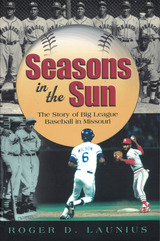 Seasons in the Sun: The Story of Big League Baseball in Missouri
Roger D. Launius
University of Missouri Press, 2002 The heart of professional baseball, if not its roots, may be found in the American Midwest, especially in Missouri. In Seasons in the Sun, Roger D. Launius offers an excellent overview of the teams, pennant races, trials, and triumphs of the different major-league teams that have resided in the state over the years. Since 1876, when St. Louis became a charter member of the newly formed National League, there have also been other major-league franchises from less well known leagues in St. Louis. The St. Louis major-league baseball experience is not limited to the extraordinary success and fame of the Cardinals, who have won more World Series championships than any other National League team. St. Louis also claims the excellent but short-lived Brown Stockings, the city’s first entry into the National League; the American League’s Browns, who spent most of their existence in the first half of the twentieth century at the bottom of the standings; the virtually forgotten Terriers of the Federal League in 1914-1915; and the Maroons of the pre-twentieth-century National League. On the other side of the state, Kansas City was home to one of the premier franchises of the Negro Leagues, the Kansas City Monarchs. The Monarchs were members of the Negro National League between 1920 and 1931, and won the Negro World Series in 1924 plus a host of league championships thereafter. Independent barnstormers between 1932 and 1936, they were part of the Negro American League from 1937 to1959. In addition, Kansas City hosted the American League’s Athletics for thirteen seasons between the team’s glory years in Philadelphia and Oakland. The A’s departed in 1967, but in 1969 the Royals replaced them as Kansas City’s American League entry. The Royals contended for the pennant within three years of their creation, then won a string of division championships in the late 1970s, the American League pennant in 1980, and the World Series against the cross-state Cardinals in 1985. Major-league baseball has a long and significant history in the state of Missouri, and Launius has done a superb job of telling its story through words and pictures. As the first work to encapsulate this rich history of statewide major-league activities, Seasons in the Sun will be welcomed by baseball fans everywhere.
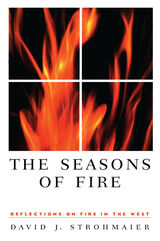 The Seasons Of Fire: Reflections On Fire In The West
David J. Strohmaier
University of Nevada Press, 2001
Fire is a fearsome constant in the America West. As the author David J. Strohmaier notes, "Whether we have tended a campfire along Oregon's Deschutes River in March, engaged the advancing front of a Great Basin wildfire in the torrid heat of August, or watched fire settle into the subdued, smoldering leaf piles of October, all of our lives, to one degree or another, are bracketed by fire." In The Seasons of Fire, Strohmaier effectively blends nature writing, personal essay, and philosophical analysis as he deliberately crosses disciplinary boundaries. He discusses the "moral" dimensions of fire—not only whether fires are good, bad, or indifferent phenomena, but also how fire, more generally understood, shapes meaning for human life. The consequences of discussing the moral side of fire speak directly to the contours of the human soul, and to our sense of our place on the land. Strohmaier, a long-term firefighter himself, includes accurate and sometimes gut-wrenching descriptions of the firefighter's experience.
 Seasons of Hunger: Fighting Cycles of Starvation Among the World's Rural Poor
Stephen Devereux, Samuel Hauenstein Swan, and Bapu Vaitla
Pluto Press, 2008 Every year, millions of the rural poor suffer from predictable and preventable seasonal hunger. This hunger is less dramatic but no less damaging than the starvation associated with famines, wars and natural disasters. Seasons of Hunger explores why the world does not react to a crisis that we know will continue year after year.
Seasonal hunger is caused by annual cycles of shrinking food stocks, rising prices, and lack of income. This hidden hunger pushes millions of children to the brink of starvation every year, permanently stunting their physical and cognitive development, weakening their immune systems and opening the door for killer diseases. Action Against Hunger argue that ending seasonal hunger could save millions of young lives and is key to achieving the Millennium Development Goals. This book documents seasonal hunger in four countries - India, Malawi, Mali and Myanmar - including personal stories and country-wide data which shows the magnitude of the problem.
The authors also find encouraging examples of interventions designed to address seasonality - initiatives led by governments, donors and NGOs, and poor people themselves - and propose a package of advocacy messages that could contribute to the global eradication of seasonal hunger. This book will be a valuable resource for journalists, policy makers, NGO members and students of development studies.
Seasons of Plenty: Amana Communal Cooking
Emilie Hoppe
University of Iowa Press, 2008 Seasons of Plenty provides colorful descriptions, folk stories, appealing photgraphs and illustrations, excerpts from journals and ledgers, recipes for good food like savory dumpling soup, mashed potatoes with browned bread crumbs, Sauerbraten, and feather light apple fritters.
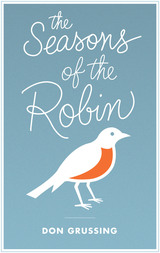 The Seasons of the Robin
By Don Grussing
University of Texas Press, 2009 In a small nest in a large oak tree, the drama begins. A young American Robin breaks open his shell and emerges into a world that will provide the warmth of sunny days and the life-threatening chill of cold, rainy nights; the satisfaction of a full stomach and the danger of sudden predator attacks; and the chance to mature into an adult robin who'll begin the cycle of life all over again come next spring. In The Seasons of the Robin, Don Grussing tells the uncommon life story of one of the most common birds, the North American Robin. Written as fiction to capture the high drama that goes on unnoticed right outside our windows, the book follows a young male robin through the first year of life. From his perspective, we experience many common episodes of a bird's life—struggling to get out of the egg; awkwardly attempting to master flight; learning to avoid predators; migrating for the first time; returning home; establishing a territory; finding a mate; and beginning the cycle again. This creative approach of presenting natural history through a fictional, yet factually based, story allows us to experience the spine-tingling, nerve-wracking, adrenaline-flowing excitement that is so much a part of the life of every wild thing. As Don Grussing concludes in his preface, "Once you experience the world through a robin's eyes, I hope you'll look at every wild thing with new appreciation and respect for what they accomplish by living."
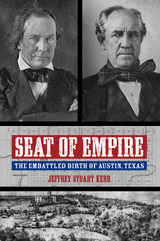 Seat of Empire: The Embattled Birth of Austin, Texas
Jeffrey Stuart Kerr
Texas Tech University Press, 2013
In 1838 Texas vice president Mirabeau B. Lamar, flush from the excitement of a successful buffalo hunt, gazed from a hilltop toward the paradise at his feet and saw the future. His poetic eye admired the stunning vista before him, with its wavering prairie grasses gradually yielding to clusters of trees, then whole forests bordering the glistening Colorado River in the distance. Lamar’s equally awestruck companions, no strangers to beautiful landscapes, shuffled speechlessly nearby. But where these men saw only nature’s handiwork, Lamar visualized a glorious manmade transformation--trees into buildings, prairie into streets, and the river itself into a bustling waterway. And he knew that with the presidency of the Republic of Texas in his grasp, he would soon be in position to achieve this vision.
The founding of Austin sparked one of the Republic’s first great political battles, pitting against each other two Texas titans: Lamar, who in less than a year had risen to vice president from army private, and Sam Houston, the hero of San Jacinto and a man both loved and hated throughout the Republic.
The shy, soft-spoken, self-righteous Lamar dreamed of a great imperial capital in the wilderness, but to achieve it faced the hardships of the frontier, the mighty Comanche nation, the Mexican army, and the formidable Houston’s political might.
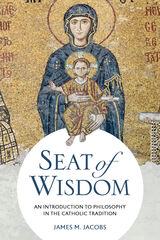 Seat of Wisdom: An Introduction to Philosophy in the Catholic Tradition
James M. Jacobs
Catholic University of America Press, 2021 The Catholic Church has always recognized that philosophy is necessary both to understand the faith as well as to defend it. The need for a philosophically informed faith has become more acute with the rise of secularism. Seat of Wisdom demonstrates that the philosophical principles developed in the Catholic tradition, especially as articulated in Thomism, provide the intellectual foundation for belief in God and are also the only reliable basis for a fully coherent vision of man’s place in the world.
Seat of Wisdom begins with an exploration of the relationship between faith and reason. Philosophy’s essential role is to discover the rational principles underlying the intelligible order of reality. These principles act as a bridge connecting science and religious faith, enabling the believer to integrate all facets of human experience.
Each of those first principles, as expressed in the transcendental properties, are then analyzed as the basis of the major philosophical disciplines. Starting with metaphysics’ study of being, the argument proceeds to consider the true, the good, and the beautiful in terms of epistemology, anthropology, ethics, aesthetics, and political philosophy. Lastly, these principles are shown to point to God as creator.
The strength of the Catholic philosophical tradition is evident when contrasted with reductive theories which fail to account for the breadth of human experience. Consequently, each chapter will introduce influential philosophers whose inadequate theories inform contemporary assumptions. Against this, the Thomistic argument is elucidated as being inclusive of the insights of the reductive position. It will be seen that this “both/and” approach is the only way to do justice to the glory of God and the gift of creation.
Religion is prey to skepticism when it is isolated from the rest of knowledge. This integrative argument, uniting discussions of nature, politics, and theology according to common principles, enables the reader to grasp the unity of wisdom. Moreover, by engaging alternative positions, it provides the reader with tools to defend the Catholic worldview against those reductive philosophies which only deprive life of its full meaning.
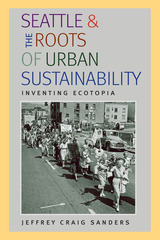 Seattle and the Roots of Urban Sustainability: Inventing Ecotopia
Jeffrey Craig Sanders
University of Pittsburgh Press, 2010
Seattle, often called the “Emerald City,” did not achieve its green, clean, and sustainable environment easily. This thriving ecotopia is the byproduct of continuing efforts by residents, businesses, and civic leaders alike. In Seattle and the Roots of Urban Sustainability, Jeffrey Craig Sanders examines the rise of environmental activism in Seattle amidst the “urban crisis” of the 1960s and its aftermath.
Like much activism during this period, the environmental movement began at the grassroots level—in local neighborhoods over local issues. Sanders links the rise of local environmentalism to larger movements for economic, racial, and gender equality and to a counterculture that changed the social and political landscape. He examines emblematic battles that erupted over the planned demolition of Pike Place Market, a local landmark, and environmental organizing in the Central District during the War on Poverty. Sanders also relates the story of Fort Lawton, a decommissioned army base, where Audubon Society members and Native American activists feuded over future land use.
The rise and popularity of environmental consciousness among Seattle’s residents came to influence everything from industry to politics, planning, and global environmental movements. Yet, as Sanders reveals, it was in the small, local struggles that urban environmental activism began.
 Seattle Sports: Play, Identity, and Pursuit in the Emerald City
Terry Anne Scott
University of Arkansas Press, 2020 Seattle Sports: Play, Identity, and Pursuit in the Emerald City, edited by Terry Anne Scott, explores the vast and varied history of sports in this city where diversity and social progress are reflected in and reinforced by play. The work gathered here covers Seattle’s professional sports culture as well as many of the city’s lesser-known figures and sports milestones. Fresh, nuanced takes on the Seattle Mariners, Supersonics, and Seahawks are joined by essays on gay softball leagues, city court basketball, athletics in local Japanese American communities during the interwar years, ultimate, the fierce women of roller derby, and much more. Together, these essays create a vivid portrait of Seattle fans, who, in supporting their teams—often in rain, sometimes in the midst of seismic activity—check the country’s implicit racial bias by rallying behind outspoken local sporting heroes.
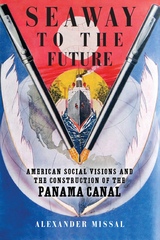 Seaway to the Future: American Social Visions and the Construction of the Panama Canal
Alexander Missal
University of Wisconsin Press, 2008 Realizing the century-old dream of a passage to India, the building of the Panama Canal was an engineering feat of colossal dimensions, a construction site filled not only with mud and water but with interpretations, meanings, and social visions. Alexander Missal’s Seaway to the Future unfolds a cultural history of the Panama Canal project, revealed in the texts and images of the era’s policymakers and commentators. Observing its creation, journalists, travel writers, and officials interpreted the Canal and its environs as a perfect society under an efficient, authoritarian management featuring innovations in technology, work, health, and consumption. For their middle-class audience in the United States, the writers depicted a foreign yet familiar place, a showcase for the future—images reinforced in the exhibits of the 1915 Panama-Pacific International Exposition that celebrated the Canal’s completion. Through these depictions, the building of the Panama Canal became a powerful symbol in a broader search for order as Americans looked to the modern age with both anxiety and anticipation. Like most utopian visions, this one aspired to perfection at the price of exclusion. Overlooking the West Indian laborers who built the Canal, its admirers praised the white elite that supervised and administered it. Inspired by the masculine ideal personified by President Theodore Roosevelt, writers depicted the Canal Zone as an emphatically male enterprise and Chief Engineer George W. Goethals as the emblem of a new type of social leader, the engineer-soldier, the benevolent despot. Examining these and other images of the Panama Canal project, Seaway to the Future shows how they reflected popular attitudes toward an evolving modern world and, no less important, helped shape those perceptions.
Best Books for Regional Special Interests, selected by the American Association of School Librarians, and Best Books for General Audiences, selected by the Public Library Association
“Provide[s] a useful vantage on the world bequeathed to us by the forces that set out to put America astride the globe nearly a century ago.”—Chris Rasmussen, Bookforum
 Seaways and Gatekeepers: Trade and State in the Eastern Archipelagos of Southeast Asia, c.1600–c.1906
Heather Sutherland
National University of Singapore Press, 2020 The eastern archipelagos of Southeast Asia stretch from Mindanao and Sulu in the north to Bali in the southwest and New Guinea in the southeast. Many of the inhabitants of this area are often described as “people without history,” in part because colonial borders long ago cut across shared underlying patterns of relations. Yet many of these societies were linked to transoceanic trading systems for millennia. Indeed, some of the world’s most prized commodities once came from territories which were either “stateless” or under the tenuous control of loosely structured polities in this region.
In this book, trade provides the integrating framework for local and regional histories that cover more than three hundred years, from the late sixteenth century to the beginning of the twentieth, when new technologies and changing markets helped lead to Western dominance. This book presents theories from the social sciences and economics that can help liberate scholars from dependence on states as narrative frameworks. It will also appeal to those working on wider themes such as global history, state formation, the evolution of markets, and anthropology.
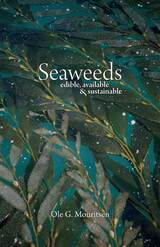 Seaweeds: Edible, Available, and Sustainable
Ole G. Mouritsen
University of Chicago Press, 2013 Until recently, seaweed for most Americans was nothing but a nuisance, clinging to us as we swim in the ocean and stinking up the beach as it rots in the sun. With the ever-growing popularity of sushi restaurants across the country, however, seaweed is becoming a substantial part of our total food intake. And even as we dine with delight on maki, miso soup, and seaweed salads, very few of us have any idea of the nutritional value of seaweed. Here celebrated scientist Ole G. Mouritsen, drawing on his fascination with and enthusiasm for Japanese cuisine, champions seaweed as a staple food while simultaneously explaining its biology, ecology, cultural history, and gastronomy. Mouritsen takes readers on a comprehensive tour of seaweed, describing what seaweeds actually are (algae, not plants) and how people of different cultures have utilized them since prehistoric times for a whole array of purposes—as food and fodder, for the production of salt, in medicine and cosmetics, as fertilizer, in construction, and for a number of industrial end uses, to name just a few. He reveals the vast abundance of minerals, trace elements, proteins, vitamins, dietary fiber, and precious polyunsaturated fatty acids found in seaweeds, and provides instructions and recipes on how to prepare a variety of dishes that incorporate raw and processed seaweeds. Approaching the subject from not only a gastronomic but also a scientific point of view, Mouritsen sets out to examine the past and present uses of this sustainable resource, keeping in mind how it could be exploited for the future. Because seaweeds can be cultivated in large quantities in the ocean in highly sustainable ways, they are ideal for battling hunger and obesity alike. With hundreds of delectable illustrations depicting the wealth of species, colors, and shapes of seaweed, Seaweeds: Edible, Available, and Sustainable makes a strong case for granting these “vegetables from the sea” a prominent place in our kitchens.
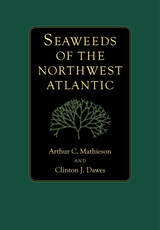 Seaweeds of the Northwest Atlantic
Arthur C. Mathieson
University of Massachusetts Press, 2017 In this book, Arthur C. Mathieson and Clinton J. Dawes offer a complete and current treatment of the seaweeds of the Northwest Atlantic, including taxonomic descriptions, keys, and 108 plates of detailed line drawings of this rich assemblage of marine algal species found between the Canadian Arctic and Maryland. It is designed to serve as an up-to-date reference work, classroom text, and field manual for botanists, marine biologists, naturalists, and students learning about the highly diverse marine algal flora of the Northwest Atlantic Ocean.
The introductory chapter provides a historical review of seaweed studies as well as a description of 15 geographical sites designated in the text. Three chapters on the green, brown, and red alga include more than 256 genera, 510 species, 10 subspecies, 21 varieties, and 14 forms. New taxonomic combinations and descriptions of several previously undescribed taxa are also included in the text. The modern classification reviews molecular as well as reproductive, morphological, and biological data. The work represents more than forty years of research on Northwest Atlantic seaweeds and will aid researchers throughout the Northeast and Southwest Atlantic coasts. The authors detail the taxonomy, morphology, cytology, and name derivation of various taxonomic entities, as well as the ecology and distribution patterns of over 555 taxa. The text includes keys to genera and species, a glossary, and sources of further information.
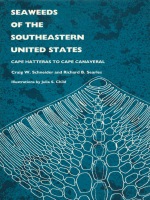 Seaweeds of the Southeastern United States: Cape Hatteras to Cape Canaveral
Craig W. Schneider and Richard B. Searles
Duke University Press, 1991 Seaweeds of the Southeastern United States offers a definitive manual for the identification of the seaweeds that inhabit the deep offshore waters as well as the near shoreline and shallow sounds from North Carolina to Florida. The volume provides a natural key to the class, order, family, and genera with detailed descriptions, 560 illustrations, and an artificial key listing simple characteristics for quick identification of the green, brown, and red benthic marine algae (or “bottom growers”) that inhabit the region.
The southeastern Atlantic coast is home to 334 species of seaweed flora. The greatest diversity occurs along the North Carolina coast between Cape Lookout and Cape Fear. With the exception of a few additional species south of Cape Fear, there is not a marked change in the flora until the more tropical waters and seaweeds of southern Florida. The barrier island system of the region and the enclosed shallow water sounds extend the miles of shoreline available for study.
This book, the product of a twenty-year collaboration, is the first comprehensive guide to appear in over seventy years and includes the addition of nearly one hundred species to the region, including twenty-five described by the authors.
Sebastian Dreaming
Georg Trakl
Seagull Books, 2016 The second book in Seagull’s ambitious series of Georg Trakl’s works, Sebastian Dreaming was the second, and final, collection prepared for publication by Trakl himself. Published after his death, it was perhaps even tied to it: forced into a military hospital by the psychological trauma of his World War I experiences, the Austrian poet requested that his publisher send him proofs of the book. He waited a week, and then overdosed on cocaine.
A century later, the book appears for the first time in English. While a number of its poems have been included in other collections, translator James Reidel argues that this particular book deserves to stand on its own and be read as one piece, as Trakl intended. Only by doing this can we begin to see Trakl in his proper time and place, as an early modern poet whose words nonetheless continue to exert a powerful hold on us while we make our way through a new, uncharted century.
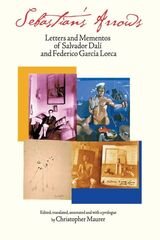 Sebastian's Arrows: Letters and Mementos of Salvador Dali and Federico Garcia Lorca
Salvador Dali and Federico Garcia Lorca
Swan Isle Press, 2005 “Let us agree,” Federico Garcia Lorca wrote, “that one of man’s most beautiful postures is that of St. Sebastian.”
“In my ‘Saint Sebastian’ I remember you,” Salvador Dali replied to Garcia Lorca, referring to the essay on aesthetics that Dali had just written, “. . . and sometimes I think he is you. Let’s see whether Saint Sebastian turns out to be you.”
This exchange is but a glimpse into the complex relationship between two renowned and highly influential twentieth-century artists. On the centennial of Dali's birth, Sebastian’s Arrows presents a never-before-published collection of their letters, lectures, and mementos.
Written between 1925 and 1936, the letters and lectures bring to life a passionate friendship marked by a thoughtful dialogue on aesthetics and the constant interaction between poetry and painting. From their student days in Madrid's Residencia de Estudiantes, where the two waged war against cultural “putrefaction” and mocked the sacred cows of Spanish art, Dali and Garcia Lorca exchanged thoughts on the act of creation, modernity, and the meaning of their art. The volume chronicles how in their poetic skirmishes they sharpened and shaped each other’s work—Garcia Lorca defending his verses of absence and elegy and his love of tradition while Dali argued for his theories of “Clarity” and “Holy Objectivity” and the unsettling logic of Surrealism.
Christopher Maurer’s masterful prologue and selection of letters, texts, and images (many generously provided by the Fundacion Gala-Salvador Dali and Fundacion Federico Garcia Lorca), offer compelling and intimate insights into the lives and work of two iconic artists. The two men had a “tragic, passionate relationship,” Dali once wrote—a friendship pierced by the arrows of Saint Sebastian.
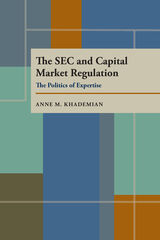 The SEC and Capital Market Regulation: The Politics of Expertise
Anne M Khademian
University of Pittsburgh Press, 1992
Anne M. Khademian addresses the significance of the SEC for securities policy and uses the agency as a model for the study of bureaucracy and bureaucratic theory. She examines the interaction of bureaucrats, politicians and the White House, and connects early debates in the field of public administration with the contemporary arguments of rational choice scholars concerning independence.
The classic tension within U.S. federal agencies is between the need to hold bureaucrats politically accountable to elected officials and the need to delegate complex decision making to officials with “independent” expertise. In the SEC this tension is especially pronounced because of the agency's dependence on attorneys and economists. Khademian traces the development of a regulatory strategy from the creation of the SEC by FDR in 1934 to the present, examines the roles of SEC experts and their political overseers in Congress as they create policy, and evaluates the stability of that policy. Her study reveals how the tug-of-war between demands for accountability and giving freedom to expertise has affected the agency's evolution and its regulatory activities.
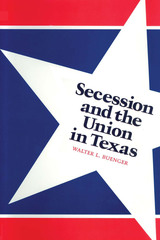 Secession and the Union in Texas
By Walter L. Buenger
University of Texas Press, 1984 In 1845 Texans voted overwhelmingly to join the Union. They voted just as overwhelmingly to secede in 1861. The story of why and how that happened is filled with colorful characters, such as the aged Sam Houston, and with the southwestern flavor of raiding Comanches, German opponents of slavery, and a border with Mexico. Texas was unique among the seceding states because of its ambivalence toward secession. Yet for all its uniqueness the story of the secession of Texas has broad implications for the secession movement in general. Despite the local color and the southwestern nature of the state, Texas was more southern than western in 1860. Texans supported the Union or insisted upon secession for reasons common to the South and to the whole nation. Most Texans in 1860 were recent immigrants from southern and border states. They still thought and acted like citizens of their former states. The newness of Texas then makes it a particularly appropriate place from which to draw conclusions about the entire secession movement. Secession and the Union in Texas is both a narrative of secession in Texas and a case study of the causes of secession in a southern state. Politics play a key role in this history, but politics broadly defined to include the influence of culture, partisanship, ideology, and self-interest. As any study of a mass movement carried out in tense circumstances must be, this is social history as well as political history. It is a study of public hysteria, the pressure for consensus, and the vanishing of a political process in which rational debate about secession and the Union could take place. Although relying primarily on traditional sources such as manuscript collections and newspapers, a particularly rich source for this study, the author also uses election returns, population shifts over the course of the 1850s, and the breakdown of population within Texas counties to provide a balanced approach. These sources indicate that Texans were not simply secessionists or unionists. At the end of 1860 Texans ranged from ardent secessionists to equally passionate supporters of the Union. But the majority fell in between these two extremes, creating an atmosphere of ambivalence toward secession which was not erased even by the war.
Secessionist Rule: Protracted Conflict and Configurations of Non-State Authority
Franziska Smolnik
Campus Verlag, 2016 In this timely investigation of secessionist entities in post-Soviet territories, Smolnik explores how political authority is organized, produced, and reproduced in conditions of violent conflict. Drawing on case studies of unrecognized or only partially recognized states in the South Caucasus, she shows that so-called low-level violent conflicts may significantly influence the form and functioning of political rule and thereby have a considerable impact on the empowerment and disempowerment of local actors. Offering fresh insight into the connections between violence and political power, Secessionist Rule not only contributes to the political sociology of violent conflict, but also adds to our knowledge of the largely understudied internal dynamics of de facto states.
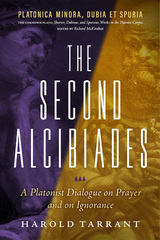 The Second Alcibiades: A Platonist Dialogue on Prayer and on Ignorance
Harold Tarrant
Parmenides Publishing, 2023 Providing a challenging new interpretation of the Second Alcibiades from the Platonic corpus, this treatment sees the dialogue not only as a work of philosophic ethics, but also as one steeped in ancient literature, particularly Euripidean tragedy. The dialogue’s philosophy is underpinned by an epistemology paying special attention to one’s personal viewpoint, as its language shows. Dramatically, it presents a Socrates who falls into a similar trap from the one he steers Alcibiades away from, facing the dangers of a tragic character thanks to their mutual attraction. Understood in this way the dialogue, here retranslated to bring out such features, is revealed as the work of an author with linguistic and literary gifts who is deeply conscious of the human condition. While reminiscent of the Academic Skeptic picture of Plato, it is the work of somebody still moving cautiously in that direction.
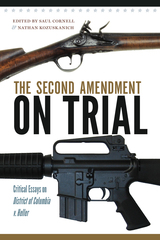 The Second Amendment on Trial: Critical Essays on District of Columbia v. Heller
Saul A. Cornell
University of Massachusetts Press, 2013 On the final day of its 2008 term, a sharply divided U.S. Supreme Court issued a 5-to-4 decision striking down the District of Columbia's stringent gun control laws as a violation of the Second Amendment. Reversing almost seventy years of settled precedent, the high court reinterpreted the meaning of the "right of the people to keep and bear arms" to affirm an individual right to own a gun in the home for purposes of self-defense. The landmark ruling not only opened a new chapter in the contentious history of gun rights and gun control but also revealed both the strengths and problems of originalist constitutional theory and jurisprudence.
This volume brings together some of the best scholarship on the Heller case, with essays by legal scholars and historians representing a range of ideological viewpoints and applying different interpretive frameworks. Following the editors' introduction, which describes the issues involved and the arguments on each side, the essays are organized into four sections. The first includes two of the most important historical briefs filed in the case, while the second offers different views of the role of originalist theory. Section three presents opposing interpretations of the ruling and its relationship to modern constitutional doctrine. The final section explores historical research post-Heller, including new findings on patterns of gun ownership in colonial and Revolutionary America.
In addition to the editors, contributors include Nelson Lund, Joyce Lee Malcolm, Jack Rakove, Reva B. Siegel, Cass R. Sunstein, Kevin M. Sweeney, and J. Harvie Wilkinson III.
 The Second Battle for Africa: Garveyism, the US Heartland, and Global Black Freedom
Erik S. McDuffie
Duke University Press, 2024 In The Second Battle for Africa, Erik S. McDuffie establishes the importance of the US Midwest to twentieth-century global Black history, internationalism, and radicalism. McDuffie shows how cities like Chicago, Detroit, and Cleveland, as well as rural areas in the heartland, became central and enduring incubators of Marcus Garvey’s Black nationalist Universal Negro Improvement Association (UNIA) and its offshoots. Throughout the region, Black thinkers, activists, and cultural workers, like the Grenada-born activist Louise Little, championed Black freedom. McDuffie explores Garveyism and its changing facets from the 1920s onward, including the role of Black midwesterners during the emergence of fascism in the 1930s, the postwar US Black Freedom Movement and African decolonization, the rise of the Nation of Islam and Malcolm X in the 1950s and 1960s, and the continuing legacy of Garvey in today’s Black Midwest. Throughout, McDuffie evaluates the possibilities, limitations, and gendered contours of Black nationalism, radicalism, and internationalism in the UNIA and Garvey-inspired movements. In so doing, he unveils new histories of Black liberation and Global Africa.
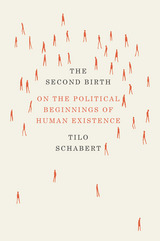 The Second Birth: On the Political Beginnings of Human Existence
Tilo Schabert
University of Chicago Press, 2015 Most scholars link the origin of politics to the formation of human societies, but in this innovative work, Tilo Schabert takes it even further back: to our very births. Drawing on mythical, philosophical, religious, and political thought from around the globe—including America, Europe, the Middle East, and China—The Second Birth proposes a transhistorical and transcultural theory of politics rooted in political cosmology. With impressive erudition, Schabert explores the physical fundamentals of political life, unveiling a profound new insight: our bodies actually teach us politics.
Schabert traces different figurations of power inherent to our singular existence, things such as numbers, time, thought, and desire, showing how they render our lives political ones—and, thus, how politics exists in us individually, long before it plays a role in the establishment of societies and institutions. Through these figurations of power, Schabert argues, we learn how to institute our own government within the political forces that already surround us—to create our own world within the one into which we have been born. In a stunning vision of human agency, this book ultimately sketches a political cosmos in which we are all builders, in which we can be at once political and free.
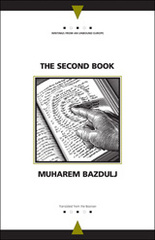 The Second Book
Muharem Bazdulj
Northwestern University Press, 2005 The protagonists of The Second Book, are connected vertically and horizontally by their struggles. Nietzsche, on the edge of madness, spends a number of mornings contemplating his sweeping ideas and the tiny details of life through hazes left by "the gluey fingers of sleep." In "The Hot Sun's Golden Circle," the pharaoh Amenhotep IV, discoverer of monotheism, embarks on a search for the only true god of Egypt. Bazdulj's charming and funny "The Story of Two Brothers" examines the lives of William and Henry James from the shadows of the Old Testament and the age-old archetype of conflict between an eldest brother and the "maladjusted impracticality" of the younger.
Muharem Bazdulj has broken from the pack of new Eastern European writers influenced by innovators such as Danilo Kiš, Milan Kundera, and Jorge Luis Borges. Employing a light touch, a daring anti-nationalist tone, and the kind of ambition that inspires nothing less than a rewriting of Bosnian and Yugoslavian history, Bazdulj weaves the imagined realities of history into fiction and fiction into history. To quote one critic, for Bazdulj history "is the sum of interpretations while imagination is the sum of facts."
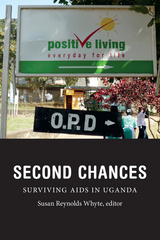 Second Chances: Surviving AIDS in Uganda
Susan Reynolds Whyte, editor
Duke University Press, 2014 During the first decade of this millennium, many thousands of people in Uganda who otherwise would have died from AIDS got second chances at life. A massive global health intervention, the scaling up of antiretroviral therapy (ART), saved them and created a generation of people who learned to live with treatment. As clients they joined programs that offered free antiretroviral medicine and encouraged "positive living." Because ART is not a cure but a lifelong treatment regime, its consequences are far-reaching for society, families, and individuals. Drawing on personal accounts and a broad knowledge of Ugandan culture and history, the essays in this collection explore ART from the perspective of those who received second chances. Their concerns about treatment, partners, children, work, food, and bodies reveal the essential sociality of Ugandan life. The collection is based on research undertaken by a team of social scientists including both Western and African scholars.
Contributors. Phoebe Kajubi, David Kyaddondo, Lotte Meinert, Hanne O. Mogensen, Godfrey Etyang Siu, Jenipher Twebaze, Michael A. Whyte, Susan Reynolds Whyte
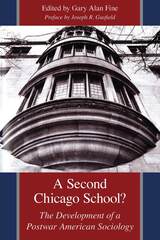 A Second Chicago School?: The Development of a Postwar American Sociology
Edited by Gary Alan Fine
University of Chicago Press, 1995 From 1945 to about 1960, the University of Chicago was home to a group of faculty and graduate students whose work has come to define what many call a second "Chicago School" of sociology.
Like its predecessor earlier in the century, the postwar department was again the center for qualitative social research—on everything from mapping the nuances of human behavior in small groups to seeking solutions to problems of race, crime, and poverty. Howard Becker, Joseph Gusfield, Herbert Blumer, David Riesman, Erving Goffman, and others created a large, enduring body of work.
In this book, leading sociologists critically confront this legacy. The eight original chapters survey the issues that defined the department's agenda: the focus on deviance, race and ethnic relations, urban life, and collective behavior; the renewal of participant observation as a method and the refinement of symbolic interaction as a guiding theory; and the professional and institutional factors that shaped this generation, including the leadership of Louis Wirth and Everett C. Hughes; the role of women; and the competition for national influence Chicago sociology faced from survey research at Columbia and grand theory at Harvard. The contributors also discuss the internal conflicts that call into question the very idea of a unified "school."
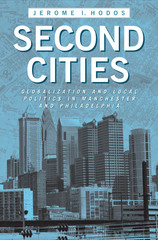 Second Cities: Globalization and Local Politics in Manchester and Philadelphia
Authored by Jerome I. Hodos
Temple University Press, 2013 Manchester, England, and Philadelphia, Pennsylvania, are what sociologist Jerome Hodos calls second cities—viable alternatives to well-known global cities such as London and New York. In Second Cities, Hodos considers how Manchester and Philadelphia have confronted problems of globalization over the past two centuries. This thought-provoking, comparative look at these cities examines their histories, economies, migration patterns, cultural innovations, transportation planning, and self-identities. Hodos demonstrates not just how the two cities are positioned in global flows of capital, goods, people, and ideas but also how each has used what he calls “municipal foreign policy” to preserve and rejuvenate its position over time. The second city offers an illustrative lens through which to view other urban centers, from Atlanta to Bangalore, Seattle, and Turin. Hodos’s description and analysis of urban development over a broad time frame offer lessons for policy makers, scholars, and community leaders concerned with the impact of globalization on their own cities.
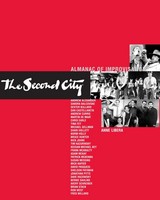 The Second City Almanac of Improvisation
Anne Libera and Second City, Inc.
Northwestern University Press, 2004 It all began in a converted Chinese laundry on Chicago's north side on a cold December night in 1959. No one could have known that by the next century, The Second City would have established itself as the premier comedy institution in the world. Taking its act north, The Second City would build a second permanent home in Toronto where it would create the Emmy-Award winning television series "SCTV." Pioneering the use of improvisation in developing talent and creating satiric revue comedy, The Second City has become - in the words of the New York Times - "A Comedy Empire."
The Second City Almanac of Improvisation - like the theatre itself - is a collection of diverse ideas, viewpoints, and memories, written by a vast array of teachers, actors, and directors who all got their start at the legendary comedy theatre. Fred Willard recalls his introduction to The Second City style in the mid-Sixties; Tim Kazurinsky gives a hilarious visual demonstration on the art of object work; "Saturday Night Live" star Tina Fey talks about re-improvising material as a mode of writing revue comedy; noted director Mick Napier takes on the thorny debate between long-form improvisation and short-form improvisation. Anne Libera guides the reader through each essay by providing a road map for understanding how The Second City method of improv-based comedy has become the industry standard.
Mike Nichols, Elaine May, Alan Arkin, Joan Rivers, Robert Klein, Peter Boyle, Harold Ramis, John Belushi, Dan Aykroyd, Bill Murray, John Candy, Martin Short, Gilda Radner, George Wendt, Jim Belushi, Bonnie Hunt, Mike Myers, Ryan Stiles, Rachel Dratch, Nia Vardalos - no other theatre can boast an alumni list of this magnitude. The Second City Almanac of Improvisation provides practical instruction, personal details, and inspiration to both improvisers and their fans.
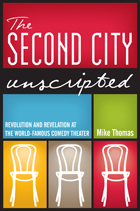 The Second City Unscripted: Revolution and Revelation at the World-Famous Comedy Theater
Mike Thomas
Northwestern University Press, 2012 Since its modest beginning in 1959, The Second City in Chicago has become a world-renowned bastion of hilarity. A training ground for many of today’s top comedic talents—including Alan Arkin, Dan Aykroyd, Stephen Colbert, Tina Fey, Bill Murray, and Amy Sedaris— it was an early blueprint for improv-based sketch revues in North America and abroad. Its immeasurable influence also extends to television, film, and the Broadway stage. Mike Thomas interviewed scores of key figures who have contributed to Second City’s vast legacy —its stars as well as those who worked and continue to work behind the scenes—to create this entertaining and informative oral history. The story is equal parts legendary highlights, gossip, and insight into how the theater’s brand of comedy was and is created. Unprecedented in scope and rife with colorful tales well told, The Second City Unscripted is an essential account of this iconic show business institution.
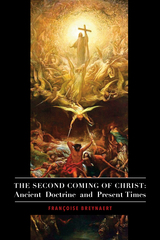 The Second Coming of Christ: Ancient Doctrine and Present Times
Françoise Breynaert
St. Augustine's Press, 2022 Compelling theological questions converge with contemporary concerns in Françoise Breynaert's exposition of the doctrine surrounding Christ's second coming. Why must Christ come again? What will become of this earth as the dominion of man is more and more power concentrated in the hands of the few? Ideologies associated with the pursuit of power promise salvation––of the world, the planet, of humanity itself––through politics, technology, and science. But Breynaert draws answers to both questions instead from Scripture and with this book prepares us for what lies ahead. She points to the spiritual journey that is humanity's true destiny, along which man will encounter the temptation to accept the claims of power and its promises of fulfillment in this life, and the traps laid for the man who does not wish to be challenged for the victory of his soul. Breynaert's account of the second coming and the false promises of today's world also remind us of the assurances given in Scripture for mercy and triumph, an optimism that offers much needed strength of spirit.
The great mystery of Christ's second coming is part of the core of Christian faith. And at long last, here is a book that explains what this truly means. And in doing so, we come to know the revealed meaning of history, which has nourished the hope of Christians through the ages.
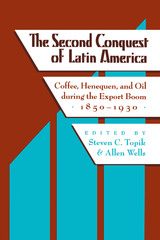 The Second Conquest of Latin America: Coffee, Henequen, and Oil during the Export Boom, 1850-1930
Edited by Steven C. Topik and Allen Wells
University of Texas Press, 1997 Between 1850 and 1930, Latin America's integration into the world economy through the export of raw materials transformed the region. This encounter was nearly as dramatic as the conquistadors' epic confrontation with Native American civilizations centuries before. An emphasis on foreign markets and capital replaced protectionism and self-sufficiency as the hemisphere's guiding principles. In many ways, the means employed during this period to tie Latin America more closely to western Europe and North America resemble strategies currently in vogue. Much can be learned from analyzing the first time that Latin Americans embraced export-led growth. This book focuses on the impact of three key export commodities: coffee, henequen, and petroleum. The authors concentrate on these rather than on national economies because they illustrate more concretely the interaction between the environment, natural and human resources, and the world economy. By analyzing how different products spun complex webs of relationships with their respective markets, the essays in this book illuminate the tensions and contradictions found in the often conflictive relationship between the local and the global, between agency and the not-so-invisible hand. Ultimately, the contributors argue that the results of the "second conquest" were not one-sided as Latin Americans and foreigners together forged a new economic order—one riddled with contradictions that Latin America is still attempting to resolve today.
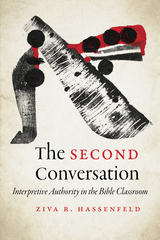 The Second Conversation: Interpretive Authority in the Bible Classroom
Ziva R. Hassenfeld
Brandeis University Press, 2024 A teacher reflects on her teaching practice, bringing literacy scholarship into the arena of Jewish education.
In The Second Conversation, university professor Ziva R. Hassenfeld returns to the middle school classroom to study her own seventh grade Bible class. The book explores dilemmas of practice she encountered around interpretive authority in the classroom. She analyzes the questions that came up in her teaching within the context of the most influential religious education scholarship, literacy scholarship, sociocultural theory and literary theory. She highlights the importance of two conversations about interpretive rules within the classroom, the first about the text’s meaning, and the second about competing conventions for determining its meaning. Instructors of any type of literature will benefit from Hassenfeld’s study, which offers rich ideas about when and how teachers enforce a classroom’s way of reading or follow a student’s line of inquiry toward more flexible interpretation.
The Second Creation: Dolly and the Age of Biological Control
Ian Wilmut, Keith Campbell, and Colin Tudge
Harvard University Press The cloning of Dolly in 1996 from the cell of an adult sheep was a pivotal moment in history. For the first time, a team of scientists, led by Ian Wilmut and Keith Campbell, was able to clone a whole mammal using a single cultured adult body cell, a breakthrough that revolutionized three technologies--genetic engineering, genomics, and cloning by nuclear transfer from adult cells—and brought science ever closer to the possibility of human cloning. In this definitive account, the scientists who accomplished this stunning feat explain their hypotheses and experiments, their conclusions, and the ethical and scientific ramifications of their work. Written with award-winning science writer Colin Tudge, The Second Creation is a landmark work that details the most exciting and challenging scientific discovery of the twentieth century.
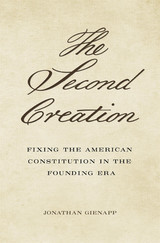 The Second Creation: Fixing the American Constitution in the Founding Era
Jonathan Gienapp
Harvard University Press, 2018 A stunning revision of our founding document’s evolving history that forces us to confront anew the question that animated the founders so long ago: What is our Constitution?
Americans widely believe that the United States Constitution was created when it was drafted in 1787 and ratified in 1788. But in a shrewd rereading of the Founding era, Jonathan Gienapp upends this long-held assumption, recovering the unknown story of American constitutional creation in the decade after its adoption—a story with explosive implications for current debates over constitutional originalism and interpretation.
When the Constitution first appeared, it was shrouded in uncertainty. Not only was its meaning unclear, but so too was its essential nature. Was the American Constitution a written text, or something else? Was it a legal text? Was it finished or unfinished? What rules would guide its interpretation? Who would adjudicate competing readings? As political leaders put the Constitution to work, none of these questions had answers. Through vigorous debates they confronted the document’s uncertainty, and—over time—how these leaders imagined the Constitution radically changed. They had begun trying to fix, or resolve, an imperfect document, but they ended up fixing, or cementing, a very particular notion of the Constitution as a distinctively textual and historical artifact circumscribed in space and time. This means that some of the Constitution’s most definitive characteristics, ones which are often treated as innate, were only added later and were thus contingent and optional.
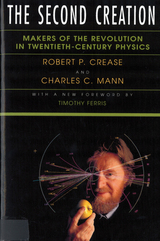 The Second Creation: Makers of the Revolution in Twentieth-Century Physics
Crease, Robert P
Rutgers University Press, 1996 The Second Creation is a dramatic--and human--chronicle of scientific investigators at the last frontier of knowledge. Robert Crease and Charles Mann take the reader on a fascinating journey in search of "unification" (a description of how matter behaves that can apply equally to everything) with brilliant scientists such as Niels Bohr, Max Planck, Albert Einstein, Erwin Schrödinger, Richard Feynman, Murray Gell-Mann, Sheldon Glashow, Steven Weinberg, and many others. They provide the definitive and highly entertaining story of the development of modern physics, and the human story of the physicists who set out to find the "theory of everything."
The Second Creation tells the story of some of the most talented and idiosyncratic people in the world--many times in their own words. Crease and Mann conducted hundreds of interviews to capture the thinking and the personalities as well as the science. The authors make this complex subject matter clear and absorbing.
 Second Economy In Tanzania: Eastern African Studies
T. L. Maliyamkono
Ohio University Press, 1990 Every country has its second, underground, unofficial, irregular or parallel economy. By their nature they are hidden and defy accurate and formal measurement. They provoke conceptual and definitional arguments among analysts. There has recently been a surge of interest; anecdote, newspaper reports and ‘educated guesses’ have increasingly been replaced by serious analysis. However, most of the new generation of studies are of developed economies. This book examines the effect on a developing economy. It explores the causes, identifies the key sectoral manifestations and reveals the various groups of actors. It attempts to establish the size of the second economy of Tanzania. Various factors drove the official economy into distress. Tanzanian peasants, wage earners and firms resorted to legitimate and illegitimate activities to overcome state control and shortage of basic necessities. This pioneering study will be invaluable for policy makers, international funding bodies and for students who are faced with trying to understand the realities of life behind the formal facade of economic theory and official statistics.
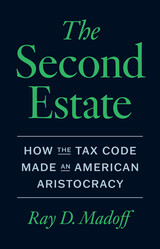 The Second Estate: How the Tax Code Made an American Aristocracy
Ray D. Madoff
University of Chicago Press, 2025 A revelatory book that lifts the curtain on America’s most consequential public deception: how the rich get richer using tools the government gave them.
Amid conflicting narratives about the drivers of wealth and inequality in the United States, one constant hovers in the background: the US tax code. No political force has been more consequential—or more utterly opaque—than the 7,000-page document that details who pays what in American society and government. Most of us have a sense that it’s an unfair system. But does anyone know exactly how it’s unfair?
Legal scholar Ray D. Madoff knows. In The Second Estate, she offers an unprecedented look behind the scenes of America’s byzantine system of taxation, laying bare not only its capacity to consolidate wealth but also the mechanisms by which it has created two fundamentally separate American societies: the working Americans who pay and the ultra-rich who benefit.
This is not a story of offshore accounts or secret tax havens. In The Second Estate, Madoff shows that the US system itself has, over time, been stripped and reconstituted such that it now offers a series of secret paths, hidden in plain sight, for wealthy people in the know to avoid taxation altogether. Through the strategic avoidance of traditional income, leveraging of investments and debt, and exploitation of rules designed to promote charitable giving, America’s wealthy do more than just pay less than their share; they remove themselves from the tax system entirely. Wealth becomes its own sovereign state, and the living is surprisingly—and maddeningly—cheap.
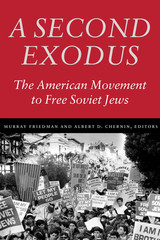 A Second Exodus: The American Movement to Free Soviet Jews
Edited by Murray Friedman and Albert D. Chernin
Brandeis University Press, 1999 Since the early 1960s, some 1.3 million Jews from the Soviet Union and its successor states have immigrated to the West, primarily to Israel and the US. Largely due to the imaginative and skillful mobilization efforts of Jews and their friends throughout the world, this great exodus had important ramifications for US relations with the Soviet Union/Russia and Israel. In addition, the success of American Jews in mounting and sustaining this lobbying effort represented a coming of age for the community, which only a few decades before had been unable to extricate millions of Jews from Europe and the Nazis. This book, part history, part celebration, combines essays by scholars with memoirs and first-hand accounts to chronicle this extraordinary rescue mission. CONTRIBUTORS: Zvi Gitelman, Marshall I. Goldman, Douglas Kahn, William Korey, Nehemiah Levanon, Micah H. Naftalin, Walter Ruby, Richard Schifter, Myrna Shinbaum, Steven F. Windmueller, and the editors
Second Front Now--1943: An Opportunity Delayed
Walter Scott Dunn
University of Alabama Press, 2009 Addresses head-on the central issue of invasion timing in the Allied European strategy of World War II
Second Front Now—1943 addresses head-on the central issue of invasion timing in the Allied European strategy of World War II. The author reconstructs and compares the actual military situations of the several combatants in a detailed and ambitious manner. Drawing on a vast and growing body of American, British, and German memoirs and secondary sources, as well as on newly available archival materials in Washington and London, the author constructs a persuasive case for the feasibility of invasion in 1943.
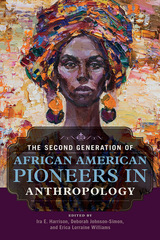 The Second Generation of African American Pioneers in Anthropology
Ira E. Harrison, Deborah Johnson-Simon, Erica Lorraine Williams
University of Illinois Press, 2018 After the pioneers, the second generation of African American anthropologists trained in the late 1950s and 1960s. Expected to study their own or similar cultures, these scholars often focused on the African diaspora but in some cases they also ranged further afield both geographically and intellectually. Yet their work remains largely unknown to colleagues and students. This volume collects intellectual biographies of fifteen accomplished African American anthropologists of the era. The authors explore the scholars' diverse backgrounds and interests and look at their groundbreaking methodologies, ethnographies, and theories. They also place their subjects within their tumultuous times, when antiracism and anticolonialism transformed the field and the emergence of ideas around racial vindication brought forth new worldviews. Scholars profiled: George Clement Bond, Johnnetta B. Cole, James Lowell Gibbs Jr., Vera Mae Green, John Langston Gwaltney, Ira E. Harrison, Delmos Jones, Diane K. Lewis, Claudia Mitchell-Kernan, Oliver Osborne, Anselme Remy, William Alfred Shack, Audrey Smedley, Niara Sudarkasa, and Charles Preston Warren II
The Second Great Emancipation: The Mechanical Cotton Picker, Black Migration, and How They Shaped the Modern South
Donald Holley
University of Arkansas Press, 2000 In The Second Great Emancipation, Donald Holley uses statistical and narrative analysis to demonstrate that farm mechanization occurred in the Delta region of Arkansas, Louisiana, and Mississippi after the region’s population of farm laborers moved away for new opportunities. Rather than pushing labor off the land, Holley argues, the mechanical cotton picker enabled the continuation of cotton cultivation in the post-plantation era, opening the door for the civil rights movement, while ushering a period of prosperity into the South.
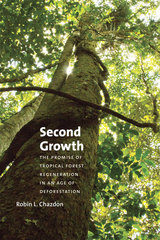 Second Growth: The Promise of Tropical Forest Regeneration in an Age of Deforestation
Robin L. Chazdon
University of Chicago Press, 2014 For decades, conservation and research initiatives in tropical forests have focused almost exclusively on old-growth forests because scientists believed that these “pristine” ecosystems housed superior levels of biodiversity. With Second Growth, Robin L. Chazdon reveals those assumptions to be largely false, bringing to the fore the previously overlooked counterpart to old-growth forest: second growth.
Even as human activities result in extensive fragmentation and deforestation, tropical forests demonstrate a great capacity for natural and human-aided regeneration. Although these damaged landscapes can take centuries to regain the characteristics of old growth, Chazdon shows here that regenerating—or second-growth—forests are vital, dynamic reservoirs of biodiversity and environmental services. What is more, they always have been.
With chapters on the roles these forests play in carbon and nutrient cycling, sustaining biodiversity, providing timber and non-timber products, and integrated agriculture, Second Growth not only offers a thorough and wide-ranging overview of successional and restoration pathways, but also underscores the need to conserve, and further study, regenerating tropical forests in an attempt to inspire a new age of local and global stewardship.
The Second Half: Forty Women Reveal Life After Fifty
Ellen Warner
Brandeis University Press, 2022 A frank, honest, and insightful look into the lives of women over fifty.
The Second Half explores, in photographic portraits and interviews, how the second half of life is experienced by women from many different cultures. From a French actress to a British novelist, from an Algerian nomad to a Saudi Arabian doctor, and an American politician, Ellen Warner traveled all over the world to interview women about their lives. She asked them what they learned in the first half that was helpful in the second, and what advice they would give to younger women. Their revealing and inspiring stories are enlightening for all readers, and are illustrated by Warner’s stunning portraits which tell their own story.
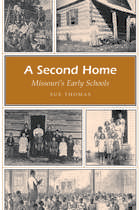 A Second Home: Missouri's Early Schools
Sue Thomas
University of Missouri Press, 2006 The one-room schoolhouse may be a thing of the past, but it is the foundation on which modern education rests. Sue Thomas now traces the progress of early education in Missouri, demonstrating how important early schools were in taming the frontier. A Second Home offers an in-depth and entertaining look at education in the days when pioneers had to postpone schooling for their children until they could provide shelter for their families and clear their fields for crops, while well-to-do families employed tutors or sent their children back east. Thomas tells of the earliest known English school at the Ramsay settlement near Cape Girardeau, then of the opening of a handful of schools around the time of the Louisiana Purchase—such as Benjamin Johnson’s school on Sandy Creek, Christopher Schewe’s school for boys when St. Louis was still a village, and the Ste. Genevieve Academy, where poor and Indian children were taught free of charge. She describes how, as communities grew, additional private schools opened—including “dame schools,” denominational schools, and subscription schools—until public education came into its own in the 1850s. Drawing on oral histories collected throughout the state, as well as private diaries and archival research, the book is full of firsthand accounts of what education once was like—including descriptions of the furnishings, teaching methods, and school-day activities in one-room log schools. It also includes the experiences of former slaves and free blacks following the Civil War when they were newly entitled to public education, with discussions of the contributions of John Berry Meachum, James Milton Turner, and other African American leaders. With its remembrances of simpler times, A Second Home tells of community gatherings in country schools and events such as taffy pulls and spelling bees, and offers tales of stern teachers, student pranks, and schoolyard games. Accompanying illustrations illuminate family and school life in the colonial, territorial, early statehood, and post-Civil War periods. For readers who recall older family members’ accounts or who are simply fascinated by the past, this is a book that will conjure images of a bygone time while opening a new window on Missouri history.
 Second Home: Orphan Asylums and Poor Families in America
Timothy A. Hacsi
Harvard University Press, 1997 As orphan asylums ceased to exist in the late twentieth century, interest in them dwindled as well. Yet, from the Civil War to the Great Depression, America's dependent children--children whose families were unable to care for them--received more aid from orphan asylums than from any other means. This important omission in the growing literature on poverty in America is addressed in Second Home.
As Timothy Hacsi shows, most children in nineteenth-century orphan asylums were "half-orphans," children with one living parent who was unable to provide for them. The asylums spread widely and endured because different groups--churches, ethnic communities, charitable organizations, fraternal societies, and local and state governments--could adapt them to their own purposes.
In the 1890s, critics began to argue that asylums were overcrowded and impersonal. By 1909, advocates called for aid to destitute mothers, and argued that asylums should be a last resort, for short-term care only. Yet orphanages continued to care for most dependent children until the depression strained asylum budgets and federally-funded home care became more widely available. Yet some, Catholic asylums in particular, cared for poor children into the 1950s and 1960s.
At a time when the American welfare state has failed to provide for all needy children, understanding our history in this area could be an important step toward correcting that failure.
 Second in Command: Reevaluating the Role of Vice Presidents and Running Mates in Modern American Politics
Edited by Karine Prémont and Christopher J. Devine
University of Michigan Press, 2026 In recent years, the office of the vice president has become a focal point of presidential politics and governance. From the emergence of the modern vice presidency under Walter Mondale to Mike Pence’s and Kamala Harris’s dramatic influence on the outcome of the 2020 election, Second in Command explores how vice presidents and vice-presidential candidates have shaped the direction of the country and changed American politics. The frenzy of speculation surrounding the “veepstakes” every four years and extensive media coverage of the vice-presidential debate may seem odd, given the vice presidency’s limited constitutional powers and dismal public reputation.
Dispelling the myth that the vice presidency is a powerless or merely ceremonial role, Second in Command draws on the multidisciplinary expertise of more than a dozen leading vice-presidential scholars to reveal the complex, consequential, and often misunderstood nature of the office. With accessible language and vivid examples, it traces the transformation of vice-presidential power over the past half-century, the evolving electoral significance of vice-presidential running mates, and highlights the need for a deeper public understanding of these pivotal figures. Chapters employ a range of qualitative and quantitative methodologies, including elite interviews, archival research, case studies, and advanced statistical modeling to cover topics such as gender and media effects in running mate selection and the representation of vice presidents in popular culture. This book offers a fresh, engaging, and essential perspective on a vital institution at the heart of American democracy.
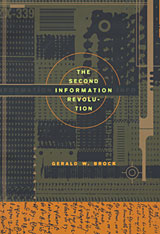 The Second Information Revolution
Gerald W. Brock
Harvard University Press, 2003 Thanks to inexpensive computers and data communications, the speed and volume of human communication are exponentially greater than they were even a quarter-century ago. Not since the advent of the telephone and telegraph in the nineteenth century has information technology changed daily life so radically. We are in the midst of what Gerald Brock calls a second information revolution.
Brock traces the complex history of this revolution, from its roots in World War II through the bursting bubble of the Internet economy. As he explains, the revolution sprang from an interdependent series of technological advances, entrepreneurial innovations, and changes to public policy. Innovations in radar, computers, and electronic components for defense projects translated into rapid expansion in the private sector, but some opportunities were blocked by regulatory policies. The contentious political effort to accommodate new technology while protecting beneficiaries of the earlier regulated monopoly eventually resulted in a regulatory structure that facilitated the explosive growth in data communications. Brock synthesizes these complex factors into a readable economic history of the wholesale transformation of the way we exchange and process information.
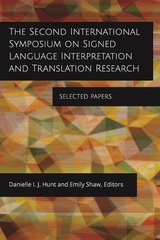 The Second International Symposium on Signed Language Interpretation and Translation Research: Selected Papers
Danielle I. J. Hunt
Gallaudet University Press, 2020 The Second International Symposium on Signed Language Interpretation and Translation Research was a rare opportunity for hearing and Deaf students, researchers, educators, and practitioners to come together and learn about current research in Interpretation and Translation Studies. These selected papers are comprised of research conducted in places such as Australia, Flanders, France, and Ghana, creating a volume that is international in scope. Editors Danielle I. J. Hunt and Emily Shaw have collected papers that represent the advances in the depth and diversity of knowledge in the field of signed language interpretation and translation research. Chapter topics include the use of haptic signals when interpreting for Deafblind people, the role of French Deaf translators during the 2015 Paris terror attacks, and Deaf employees’ perspectives on interpreting in the workplace.
Signed chapter summaries will be available on the Gallaudet University Press YouTube channel upon publication.
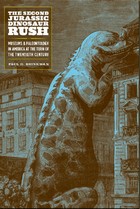 The Second Jurassic Dinosaur Rush: Museums and Paleontology in America at the Turn of the Twentieth Century
Paul D. Brinkman
University of Chicago Press, 2010 The so-called “Bone Wars” of the 1880s, which pitted Edward Drinker Cope against Othniel Charles Marsh in a frenzy of fossil collection and discovery, may have marked the introduction of dinosaurs to the American public, but the second Jurassic dinosaur rush, which took place around the turn of the twentieth century, brought the prehistoric beasts back to life. These later expeditions—which involved new competitors hailing from leading natural history museums in New York, Chicago, and Pittsburgh—yielded specimens that would be reconstructed into the colossal skeletons that thrill visitors today in museum halls across the country. Reconsidering the fossil speculation, the museum displays, and the media frenzy that ushered dinosaurs into the American public consciousness, Paul Brinkman takes us back to the birth of dinomania, the modern obsession with all things Jurassic. Featuring engaging and colorful personalities and motivations both altruistic and ignoble, The Second Jurassic Dinosaur Rush shows that these later expeditions were just as foundational—if not more so—to the establishment of paleontology and the budding collections of museums than the more famous Cope and Marsh treks. With adventure, intrigue, and rivalry, this is science at its most swashbuckling.
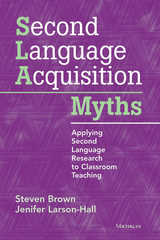 Second Language Acquisition Myths: Applying Second Language Research to Classroom Teaching
Steven Brown and Jenifer Larson-Hall
University of Michigan Press, 2012 This volume was conceived as a first book in SLA for advanced undergraduate or introductory master’s courses that include education majors, foreign language education majors, and English majors. It’s also an excellent resource for practicing teachers. Both the research and pedagogy in this book are based on the newest research in the field of second language acquisition. It is not the goal of this book to address every SLA theory or teach research methodology. It does however address the myths and questions that non-specialist teacher candidates have about language learning. Steven Brown is the co-author of the introductory applied linguistics textbook Understanding Language Structure, Interaction, and Variation textbook (and workbook). The myths challenged in this book are:
§ Children learn languages quickly and easily while adults are ineffective in comparison. § A true bilingual is someone who speaks two languages perfectly. § You can acquire a language simply through listening or reading. § Practice makes perfect. § Language students learn (and retain) what they are taught. § Language learners always benefit from correction. § Individual differences are a major, perhaps the major, factor in SLA. § Language acquisition is the individual acquisition of grammar.
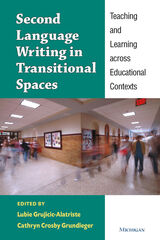 Second Language Writing in Transitional Spaces: Teaching and Learning across Educational Contexts
Lubie Grujicic-Alatriste and Cathryn Crosby Grundleger
University of Michigan Press, 2020 This collection has been written to address the fact that there seems to be little concerted, systematic effort to understand what type of writing is taught across elementary, secondary, and college second language (L2) writing contexts and to understand how it is being taught on this long educational continuum (K–16). This book sets out to contribute to what is perceived as a lack of the full picture on the teaching of L2 writing from K–16. The impetus to look across educational settings, particularly at the places of transitions, stemmed in part from the recent state-wide educational reforms. Given the gap in the L2 research that straddles all educational settings, this volume addresses the need for a closer teacher collaboration and deeper, clearer understanding of writing goals in each of the educational settings and across them on the K–16 continuum.
The chapters examine the writing that English learners are producing because of the Common Core and the writing they are required to do once they reach the college or university, and then consider where the intersections exist—that is, what do educators think English learners ought to be writing across educational levels?
Each chapter describes the educational setting where the researchers were engaged, examines specific issues related to transitions, and offers—where relevant—recommendations for classroom practices, teaching strategies, and instructional materials that may be useful for practicing teachers and all others professionally engaged in educating writers across K–16.
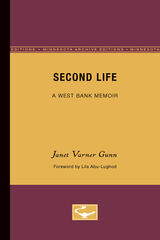 Second Life: A West Bank Memoir
Janet Gunn
University of Minnesota Press, 1995
Second Life was first published in 1995.“Having sat out the U.S. civil rights movement and the Vietnam war protest during the sixties, I joined my first cause in the late eighties, a middle-aged academic on the other side of the world.” So writes Janet Varner Gunn, who from 1988 to 1990 took time out from university teaching to do human rights work on the West Bank. During that time she became involved with the case of Mohammad Abu Aker, a Palestinian teenager who was critically shot during a stone-throwing demonstration. The years following Mohammad’s injury, during which he was deemed a “living martyr” of the Intifada and which ended with his eventual death at nineteen in 1990, are recounted in this deeply personal book. Gunn interweaves her account of Mohammad’s medical struggles and the politics surrounding his symbolic place in the Intifada with her own story of loss and recovery. As a human rights worker for whom Mohammad initially represented a “case,” Gunn was involved in getting him the medical care he needed to survive. As a scholar, she became fascinated by the way Mohammad’s injury and subsequent “second life” took on a larger significance because of its timing, which coincided with the declaration of an independent Palestine. The book contains rich accounts of the “small news” of daily life in Deheishe, the refugee camp where Mohammad lived with his family. Gunn describes the laughter with which residents of the camp have learned to meet the violent disruption of their daily lives, hoping that her readers will “be moved not by the victimization of an oppressive occupation but by the examples of hope and steadfastness I discovered in Deheishe’s holding on for dear life.” Janet Varner Gunn has taught in the Department of English at Rhodes University, Grahamstown, South Africa, after completing a Senior Fulbright Lectureship. She is the author of Autobiography: Toward a Poetics of Experience (1982).
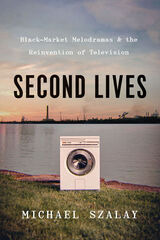 Second Lives: Black-Market Melodramas and the Reinvention of Television
Michael Szalay
University of Chicago Press, 2023 A history of prestige television through the rise of the “black-market melodrama.”
In Second Lives, Michael Szalay defines a new television genre that has driven the breathtaking ascent of TV as a cultural force over the last two decades: the black-market melodrama. Exemplified by the likes of The Sopranos and Breaking Bad, the genre moves between a family’s everyday life and its secret second life, which may involve illegal business, espionage, or even an alternate reality. Second lives allow characters (and audiences) to escape what feels like endless work into a revanchist vision of the white middle class family. But there is for this grimly resigned genre no meaningful way back to the Fordist family wage for which it longs. In fact, Szalay argues, black-market melodramas lament the very economic transformations that untethered TV viewing from the daily rhythms of the nine-to-five job and led, ultimately, to prestige TV.
The Second Man and Other Poems
Louis Coxe
University of Minnesota Press, 1955
The Second Man and Other Poems was first published in 1955.The forty poems which make up this second volume of Mr. Coxe’s poetry display an impressive range of subject and technique. He writes of love and religion, of men at sea, of historical moments of violence decision, and of the face of nature. But the predominant themes are those which Mr. Coxe treats with especial authority: the living meaning of his native New England, of its past, and of the people who make it.Mr. Coxe writes many kinds of poetry. There are lyrics, songs, reflective poems, and dramatic monologues. Although he experiments with meter and explores the riches of language, his poetry is traditional in the best sense.Among the poems in this volume are some that have been published previously in such magazines as The New Yorker, Partisan Review, Western Review, Furioso, Hudson Review, Poetry, and Paris Review.
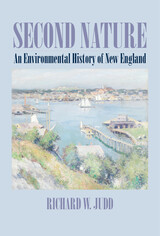 Second Nature: An Environmental History of New England
Richard W. Judd
University of Massachusetts Press, 2014 Winner of the 2014 New England Historical Association's John P. Hanlan Book Award
Bounded by the St. Lawrence Valley to the north, Lake Champlain to the west, and the Gulf of Maine to the east, New England may be the most cohesive region in the United States, with a long and richly recorded history. In this book, Richard W. Judd explores the mix of ecological process and human activity that shaped that history over the past 12,000 years. He traces a succession of cultures through New England's changing postglacial environment down to the 1600s, when the arrival of Europeans interrupted this coevolution of nature and culture.
A long period of tension and warfare, inflected by a variety of environmental problems, opened the way for frontier expansion. This in turn culminated in a unique landscape of forest, farm, and village that has become the embodiment of what Judd calls "second nature"— culturally modified landscapes that have superseded a more pristine "first nature."
In the early 1800s changes in farm production and industrial process transformed central New England, while burgeoning markets at the geographical margins brought rapid expansion in fishing and logging activities. Although industrialization and urbanization severed connections to the natural world, the dominant cultural expression of the age, Romanticism, provided new ways of appreciating nature in the White Mountains and Maine woods. Spurred by these Romantic images and by a long tradition of local resource management, New England gained an early start in rural and urban conservation.
In the 1970s environmentalists, inspired by a widespread appreciation for regional second-nature landscapes, moved quickly from battling pollution and preserving wild lands to sheltering farms, villages, and woodlands from intrusive development. These campaigns, uniquely suited to the region's land-use history, ecology, and culture, were a fitting capstone to the environmental history of New England.
The Second Palestinian Intifada: A Chronicle of a People's Struggle
Ramzy Baroud
Pluto Press, 2006 Ramzy Baroud is a veteran journalist and former producer for Al-Jazeera TV. This is his comprehensive account of the momentous events of the last five years which shaped the political landscape not only of Palestine and Israel but of the entire Middle East region.
Addressing the most controversial issues, including the alarming escalation in suicide bombings, and the construction of the Separation Wall, he reports on the huge rate of unemployment and hunger in the Occupied Territories -- statistics so critical that NGOs compare their magnitude to African nations such as the Congo. From the brutality of the Israeli army to the ever-compromising nature of the Palestinian Authority, few are spared Baroud’s thoughtful critique.
The book is clear and concise, with one chapter dedicated to the major events of each year, and includes a comprehensive timeline.
The Second Part of the Popular Errors
Laurent Joubert
University of Alabama Press, 1995 English translation of the second volume of Laurent Joubert’s 1578 French work Erreurs Populaires
Joubert proposed to dispel folk remedies and folklore still relied on by doctors and care-givers in France. It also challenged medical theories and advice from classical Greek and Latin writers that French doctors followed uncritically. Gregory de Rocher’s skill as a translator brings this highly readable and very funny book to life. Many topics central to Joubert’s thesis in the 1500s remain contemporary themes in the popular and scholarly literature of the 1980s.
Second Scroll
A.M. Klein
Northwestern University Press, 1985 Written soon after the founding of the state of Israel, The Second Scroll is A.M. Klein’s most innovative and visionary work. The five “books” of the novel are a modern testament of Jewish experience to which are appended “glosses” or commentaries in the form of drama, epistle, poetry, and psalm. The action centres on a young writer from Montreal, whose search for his legendary Uncle Melech becomes a journey of revelation through Italy, Morocco, and the Holy Land. Dissident and exile, reformer and scholar, Melech is a messianic figure who enacts the destiny of his people and embodies the spiritual yearnings of everyman.
The Second Scroll, Klein’s only novel, combines the lyric genius of his poetic works with compelling reportage to create one of the most eloquent and original works in Canadian fiction.
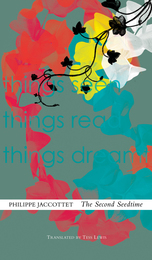 The Second Seedtime: Notebooks, 1980–94
Philippe Jaccottet
Seagull Books, 2017 The second volume of notes and reflections from one of Switzerland’s most prominent and prolific men of letters.
One of Europe’s finest contemporary poets, Jaccottet is a writer of exacting attention. Through keen observations of the natural world, art, literature, and music, and reflections on the human condition, Jaccottet opens his readers’ eyes to the transcendent in everyday life. The Second Seedtime is a collection of “things seen, things read, and things dreamed.” The volume continues the project Jaccottet began three decades earlier in his first volume of notebooks, Seedtime. Here, again, he gathers flashes of beauty dispersed around him like seeds that may blossom into poems or moments of inspiration. He returns, insistently, to such literary touchstones as Dante, Montaigne, Góngora, Goethe, Kierkegaard, Hölderlin, Michaux, Hopkins, Brontë, and Dickinson, as well as musical greats including Bach, Monteverdi, Purcell, and Schubert. The Second Seedtime is the vivid chronicle of one man’s passionate engagement with the life of the mind, the spirit, and the natural world.
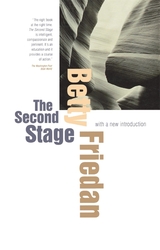 The Second Stage: With a New Introduction
Betty Friedan
Harvard University Press, 1998 First published in 1981, The Second Stage is eerily prescient and timely, a reminder that much of what is called new thinking in feminism has been eloquently observed and argued before. Warning the women's movement against dissolving into factionalism, male-bashing, and preoccupation with sexual and identity politics rather than bottom-line political and economic inequalities, Friedan argues that once past the initial phases of describing and working against political and economic injustices, the women's movement should focus on working with men to remake private and public arrangements that work against full lives with children for women and men both. Friedan's agenda to preserve families is far more radical than it appears, for she argues that a truly equitable preservation of marriage and family may require a reorganization of many aspects of conventional middle-class life, from the greater use of flex time and job-sharing, to company-sponsored daycare, to new home designs to permit communal housekeeping and cooking arrangements.
Called "utopian" fifteen years ago, when it seemed unbelievable that women had enough power in the workplace to make effective demands, or that men would join them, some of these visions are slowly but steadily coming to pass even now. The problem Friedan identifies is as real now as it was years ago: "how to live the equality we fought for," and continue to fight for, with "the family as new feminist frontier." She writes not only for women's liberation but for human liberation.
Second Star to the Right: Peter Pan in the Popular Imagination
Friedman, Lester D
Rutgers University Press, 2008 Over a century after its first stage performance, Peter Pan has become deeply embedded in Western popular culture, as an enduring part of childhood memories, in every part of popular media, and in commercial enterprises. Since 2003 the characters from this story have had a highly visible presence in nearly every genre of popular culture: two major films, a literary sequel to the original adventures, a graphic novel featuring a grown-up Wendy Darling, and an Argentinean novel about a children's book writer inspired by J. M. Barrie. Simultaneously, Barrie surfaced as the subject of two major biographies and a feature film. The engaging essays in Second Star to the Right approach Pan from literary, dramatic, film, television, and sociological perspectives and, in the process, analyze his emergence and preservation in the cultural imagination.
Second Story: Poems
Denise Duhamel
University of Pittsburgh Press, 2021 When her Florida apartment is damaged by the ferocity of Hurricane Irma, Duhamel turns to Dante and terza rima, reconstructing the form into the long poem “Terza Irma.” Throughout the book she investigates our near-catastrophic ecological and political moment, hyperaware of her own complicity, resistance, and agency. She writes odes to her favorite uncle—who was “green” before it was a hashtag—and Mother Nature via a retro margarine commercial. She writes letters to her failing memory as well as to America’s amnesia. With fear of the water below and a burglar who enters through her second story window, she bravely faces the story under the story, the second story we often neglect to tell.
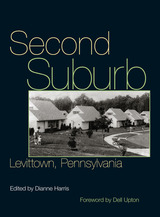 Second Suburb: Levittown, Pennsylvania
Dianne Harris
University of Pittsburgh Press, 2010 Carved from eight square miles of Bucks County farmland northeast of Philadelphia, Levittown, Pennsylvania, is a symbol of postwar suburbia and the fulfillment of the American dream. Begun in 1952, after the completion of an identically named community on Long Island, the second Levittown soon eclipsed its New York counterpart in scale and ambition, yet it continues to live in the shadow of its better-known sister and has received limited scholarly attention. Second Suburb uncovers the unique story of Levittown, Pennsylvania, and its significance to American social, architectural, environmental, and political history.
The volume offers a fascinating profile of this planned community in two parts. The first examines Levittown from the inside, including oral histories of residents recalling how Levittown shaped their lives. One such reminiscence is by Daisy Myers, whose family were the first African Americans to move to the community, only to become the targets of a race riot that would receive international publicity. The book also includes selections from the syndicated comic strip Zippy the Pinhead, in which Bill Griffith reflects on the angst-ridden trials of growing up in a Levittown, and an extensive photo essay of neighborhood homes, schools, churches, parks, and swimming pools, collected by Dianne Harris.
The second part of the book views Levittown from the outside. Contributors consider the community’s place in planning and architectural history and the Levitts’ strategies for the mass production of housing. Other chapters address the class stratification of neighborhood sections through price structuring; individual attempts to personalize a home’s form and space as a representation of class and identity; the builders’ focus on the kitchen as the centerpiece of the home and its greatest selling point; the community’s environmental and ecological legacy; racist and exclusionary sales policies; resident activism during the gas riots of 1979; and “America’s lost Eden."
Bringing together some of the top scholars in architectural history, American studies, and landscape studies, Second Suburb explores the surprisingly rich interplay of design, technology, and social response that marks the emergence and maturation of an exceptionally potent rendition of the American Dream.
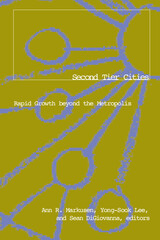 Second Tier Cities: Rapid Growth beyond the Metropolis
Ann Markusen
University of Minnesota Press, 1999 Analyzes and compares the rapid growth of medium-sized cities. Over the past thirty years, transnational investment, trade, and government policies have encouraged the decentralization of national economies, disrupting traditional patterns of urban and regional growth. Many smaller cities-such as Seattle, Washington; Campinas, Brazil; Oita, Japan; and Kumi, Korea-have grown markedly faster than the largest metropolitan regions. These “second tier cities” are home to specialized industrial complexes that have taken root, provided significant job growth, and attracted mobile capital and labor. The culmination of an ambitious five-year, fourteen-city research project conducted by an international team of economists and geographers, Second Tier Cities examines the potential of these new regions to balance uneven regional development, create good, stable jobs, and moderate hyper-urbanization. Comparing across national borders, the contributors describe four types of second tier cities: Marshallian industrial districts, hub-and-spoke cities, satellite platforms, and government-anchored complexes. They find that both industrial and regional policies have been important contributors to the rise of second tier cities, though the former often trump the latter. Lessons for local, national, and international policymakers are drawn. The authors are critical of devolution and argue that it must be accompanied by strong labor and environmental standards and mechanisms to overcome differential regional resource endowments.Contributors: Clelio Campolina Diniz, U Federal de Minas Gerais, Brazil; Masatomi Funaba, Kobe U of Commerce, Japan; Elyse Golob, NYC Economic Development Goup; Mia Gray, Cambridge U; Jun Ho Jeong, Oxford U; Sam Ock Park, Seoul National U; Mohammad Razavi; Fabiana Borges T. Santos, U Federal de Minas Gerais, Brazil; and Masayuki Sasaki, Kanzawa U, Japan.
Second Verse, Same as the First: The 2012 Presidential Election in the South
Scott E. Buchanan
University of Arkansas Press, 2014 Second Verse, Same as the First is a volume of essays covering the 2012 election as it played out in the eleven former states of the Confederacy. The essays are organized by state and emphasize the presidential campaign, but each state chapter also includes analysis on notable congressional races and important patterns at the state level. Interesting patterns in the South and their implications for the balance of power between the two major parties are analyzed. Additional chapters cover the issues that dominated voter decision making and the nomination process. Second Verse, Same as the First is a necessity for academics, journalists, and political enthusiasts seeking a deeper understanding of contemporary changes in southern electoral politics.
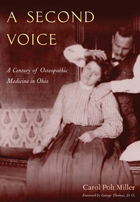 A Second Voice: A Century of Osteopathic Medicine in Ohio
Carol Poh Miller
Ohio University Press, 2004 Doctors of osteopathy today practice side by side with medical doctors, employing the same diagnostic and curative tools of scientific—with a difference. A Second Voice: A Century of Osteopathic Medicine in Ohio is the story of that difference. Focusing on the historical experience of a pivotal midwestern state, historian Carol Poh Miller illuminates struggles common to osteopathic medicine nationwide as it fought to secure its place in American health care. First promulgated by Dr. Andrew Taylor Still in 1874, osteopathy was a reaction against the primitive medical practices of the period. Believing that the body had its own natural curative powers, Still manipulated vertebrae to free circulation and to remove pathology. Early osteopaths endured discrimination, as orthodox medicine and its allies sought to prevent the establishment of Still’s new healing method. Written in conjunction with the one-hundredth anniversary of the Ohio Osteopathic Association, A Second Voice traces the origins and growth of the profession in Ohio. It recounts the early legal battles, the establishment of separate osteopathic hospitals, and the hard-fought campaigns to win equal practice rights and to build a state college of osteopathic medicine. Finally, it reconsiders the notorious murder trial of Cleveland osteopathic physician Sam Sheppard in the context of his family’s contributions to the osteopathic profession and a prosecution that, evidence has shown, fingered the wrong man. A Second Voice is a valuable addition to the history of medicine in Ohio and the nation.
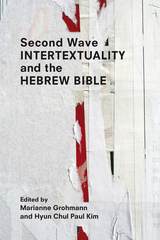 Second Wave Intertextuality and the Hebrew Bible
Marianne Grohmann
SBL Press, 2019 An innovative collection of inner-biblical, intertextual, and intercontextual dialogues
Essays from a diverse group of scholars offer new approaches to biblical intertextuality that examine the relationship between the Hebrew Bible, art, literature, sociology, and postcolonialism. Eight essays in part 1 cover inner-biblical intertextuality, including studies of Genesis, Judges, and Qoheleth, among others. The eight postbiblical intertextuality essays in part 2 explore Bakhtinian and dialogical approaches, intertextuality in the Dead Sea Scrolls, canonical critisicm, reception history, and #BlackLivesMatter. These essays on various genres and portions of the Hebrew Bible showcase how, why, and what intertextuality has been and presents possible potential directions for future research and application.
Features:
- Diverse methods and cases of intertextuality
- Rich examples of hermeneutical theory and interpretive applications
- Readings of biblical texts as mutual dialogues, among the authors, traditions, themes, contexts, and lived worlds
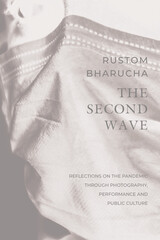 The Second Wave: Reflections on the Pandemic through Photography, Performance and Public Culture
Rustom Bharucha
Seagull Books, 2022 Lessons in resilience in the second wave of the Covid-19 pandemic in India.
Focusing on the second wave of the Covid-19 pandemic in India between April and December 2021, Rustom Bharucha’s timely essay reflects on four interconnected realities that haunted this ongoing crisis—death, grief, mourning, and extinction. How do we cope with multiple deaths and the dislocation of rituals when the act of mourning is either postponed or denied? What roles do political surveillance, censorship, the regulation of lockdowns, and the sheer indifference to the lives of people play in the containment of civil liberties? Through vivid examples of photography, theater, dance, visual arts, and the cultures of everyday life, this meditative essay illuminates both the horror of the pandemic as well as its unexpected intimacies and revelations of shared suffering. Against the destruction of nature and the disrespect for the nonhuman, The Second Wave offers lessons in resilience through its reflections on the ethos of waiting and the need to re-envision breath as a vital resource of self-renewal and resistance.
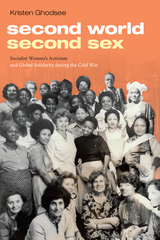 Second World, Second Sex: Socialist Women's Activism and Global Solidarity during the Cold War
Kristen Ghodsee
Duke University Press, 2019 Women from the state socialist countries in Eastern Europe—what used to be called the Second World—once dominated women’s activism at the United Nations, but their contributions have been largely forgotten or deemed insignificant in comparison with those of Western feminists. In Second World, Second Sex Kristen Ghodsee rescues some of this lost history by tracing the activism of Eastern European and African women during the 1975 United Nations International Year of Women and the subsequent Decade for Women (1976-1985). Focusing on case studies of state socialist Bulgaria and nonaligned but socialist-leaning Zambia, Ghodsee examines the feminist networks that developed between the Second and Third Worlds and shows how alliances between socialist women challenged American women’s leadership of the global women’s movement. Drawing on interviews and archival research across three continents, Ghodsee argues that international ideological competition between capitalism and socialism profoundly shaped the world women inhabit today.
The Second World War: A Marxist History
Chris Bambery
Pluto Press, 2014 The Second World War casts a long shadow, portrayed as a necessary and paradigmatic war that defeated fascism. During recent wars in Iraq, Afghanistan and elsewhere, US presidents and British prime ministers have tried to claim they were following in the footsteps of Winston Churchill by standing up to dictators.
In The Second World War Chris Bambery tests this position in a thorough account of the war and tries to understand why it still dominates TV history channels and school history books.
Bambery argues that the conflict ultimately was about a division of the world between the great powers, as well as a rising of ordinary people against fascism. He offers a complex and radical analysis, that is unique when compared to many modern and conventional histories of the war.
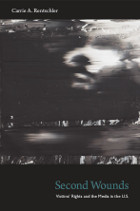 Second Wounds: Victims’ Rights and the Media in the U.S.
Carrie A. Rentschler
Duke University Press, 2011 The U.S. victims’ rights movement has transformed the way that violent crime is understood and represented in the United States. It has expanded the concept of victimhood to include family members and others close to direct victims, and it has argued that these secondary victims may be further traumatized through their encounters with insensitive journalists and the cold, impersonal nature of the criminal justice system. This concept of extended victimization has come to dominate representations of crime and the American criminal justice system. In Second Wounds, Carrie A. Rentschler examines how the victims’ rights movement brought about such a marked shift in how Americans define and portray crime. Analyzing the movement’s effective mobilization of activist networks and its implementation of media strategies, she interprets texts such as press kits, online victim memorials, and training materials for victims’ advocates and journalists. Rentschler also provides a genealogy of the victims’ rights movement from its emergence in the 1960s into the twenty-first century. She explains that while a “get tough on crime” outlook dominates the movement, the concept of secondary victimization has been invoked by activists across the political spectrum, including anti–death penalty advocates, who contend that the families of death-row inmates are also secondary victims of violent crime and the criminal justice system.
 The Second Year: The Emergence of Self-Awareness
Jerome Kagan
Harvard University Press, 1981 The second year is that daunting time when the previously docile and adorable infant inevitably develops a mind of her own. In this book, Jerome Kagan takes a provocative look at the mental developments underlying the startling transitions in the child’s second year.
It is Kagan’s premise that the roots of self-awareness emerge in the second half of the second year of life. He also suggests that the underlying cause may be more biological than social. His book develops these ideas through a series of brilliant observations on the behavior of two-year-olds.
Kagan charts, for example, the emerging sense of standards (the possibility of right and wrong) that reveals itself positively when the child suddenly begins to smile after a successful action, and negatively when the child starts to become concerned about flaws in objects and mistakes in her own behavior. When this concern with standards spreads to the child’s irresistible impulse to imitate adults, Kagan observes a remarkable phenomenon: the twenty-month-old child suddenly begins to show signs of distress before she even tries to imitate an action that is beyond her ability. Kagan argues that this distress could arise only from the child’s growing sense of what she can and can’t do—her awareness of herself.
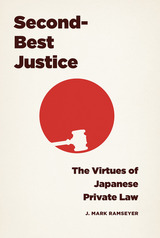 Second-Best Justice: The Virtues of Japanese Private Law
J. Mark Ramseyer
University of Chicago Press, 2015 It’s long been known that Japanese file fewer lawsuits per capita than Americans do. Yet explanations for the difference have tended to be partial and unconvincing, ranging from circular arguments about Japanese culture to suggestions that the slow-moving Japanese court system acts as a deterrent.
With Second-Best Justice, J. Mark Ramseyer offers a more compelling, better-grounded explanation: the low rate of lawsuits in Japan results not from distrust of a dysfunctional system but from trust in a system that works—that sorts and resolves disputes in such an overwhelmingly predictable pattern that opposing parties rarely find it worthwhile to push their dispute to trial. Using evidence from tort claims across many domains, Ramseyer reveals a court system designed not to find perfect justice, but to “make do”—to adopt strategies that are mostly right and that thereby resolve disputes quickly and economically.
An eye-opening study of comparative law, Second-Best Justice will force a wholesale rethinking of the differences among alternative legal systems and their broader consequences for social welfare.
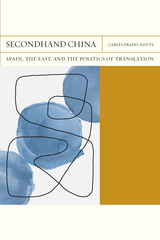 Secondhand China: Spain, the East, and the Politics of Translation
Carles Prado-Fonts
Northwestern University Press, 2022 This transcultural study of cultural production brings to light the ways Spanish literature imagined China by relying on English- and French-language sources. Carles Prado-Fonts examines how the simultaneous dependence on and obscuring of translation in these cross-cultural representations created the illusion of a homogeneous West. He argues that Orientalism became an instrument of hegemony not only between “the West and the rest” but also within the West itself, where Spanish writers used representations of China to connect themselves to Europe, hone a national voice, or forward ideas of political and cultural modernity.
Uncovering an eclectic and surprising archive, Prado-Fonts draws on diverse cultural artifacts from popular literature, journalism, and early cinema to offer a rich account of how China was seen across the West between 1880 and 1930. Enrique Gaspar, Luis de Oteyza, Vicente Blasco Ibáñez, and lesser-known authors writing in Spanish and Catalan put themselves in dialogue with Leo Tolstoy, John Dewey, W. Somerset Maugham, Bertrand Russell, Pearl Buck, and André Malraux, as well as stereotypical figures from popular culture like Fu Manchu and Charlie Chan. Throughout, Prado-Fonts exposes translation as a technology of cultural hegemony and China as an appealing object for representation. A timely contribution to our understanding of how we create and consume knowledge about the world, Secondhand China is essential reading for scholars and students of Orientalism, postcolonial studies, translation studies, comparative literature, and cultural studies.
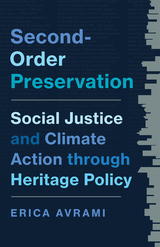 Second-Order Preservation: Social Justice and Climate Action through Heritage Policy
Erica Avrami
University of Minnesota Press, 2024 An urgent appeal to rethink the heritage enterprise
A critical reassessment of historic preservation policies in the United States, Second-Order Preservation brings needed attention to the hierarchical underpinnings and effects of established preservation frameworks. Questioning the criteria by which value is ascribed to historic buildings and neighborhoods, Erica Avrami works to elucidate and transform how—and which—claims to place become codified in and reinforced through public policy. As she eschews dominant case-study approaches that center the individual object of preservation, such as a discrete building or site, Avrami develops the concept of second-order preservation as a means of integrating broader considerations around social justice, equitable land-use planning, and environmental sustainability. Ranging from municipal to state to national and international levels of governance, her critique of the origins and evolution of heritage policy reveals how this conventional emphasis on the object has contributed to policy tensions and systemic exclusion. Stressing the need to reform current preservation practices to serve more diverse publics, Avrami encourages a turn to an approach that substantively considers contexts and implications of preservation in the scheme of climate and justice. Second-Order Preservation maintains the interrelation between theory and practice, serving as both a critical reflection and a provocation aimed at advancing a more just set of urban policy agendas.
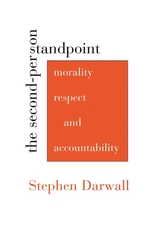 The Second-Person Standpoint: Morality, Respect, and Accountability
Stephen Darwall
Harvard University Press, 2006 Why should we avoid doing moral wrong? The inability of philosophy to answer this question in a compelling manner—along with the moral skepticism and ethical confusion that ensue—result, Stephen Darwall argues, from our failure to appreciate the essentially interpersonal character of moral obligation. After showing how attempts to vindicate morality have tended to change the subject—falling back on nonmoral values or practical, first-person considerations—Darwall elaborates the interpersonal nature of moral obligations: their inherent link to our responsibilities to one another as members of the moral community.
As Darwall defines it, the concept of moral obligation has an irreducibly second-person aspect; it presupposes our authority to make claims and demands on one another. And so too do many other central notions, including those of rights, the dignity of and respect for persons, and the very concept of person itself. The result is nothing less than a fundamental reorientation of moral theory that enables it at last to account for morality's supreme authority—an account that Darwall carries from the realm of theory to the practical world of second-person attitudes, emotions, and actions.
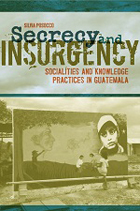 Secrecy and Insurgency: Socialities and Knowledge Practices in Guatemala
Silvia Posocco
University of Alabama Press, 2014 Secrecy and Insurgency deals with the experiences of guerrilla combatants of the Fuerzas Armadas Rebeldes (Rebel Armed Forces) in the aftermath of the peace accords signed in December 1996 between the Guatemalan government and guerrilla insurgents.
Drawing on a broad field of contemporary theory, Silvia Posocco’s Secrecy and Insurgency presents a vivid ethnographic account of secrecy as both sociality and a set of knowledge practices. Informed by multi-sited anthropological fieldwork among displaced communities with experiences of militancy in the guerrilla organization Fuerzas Armadas Rebeldes, the book traces the contours of dispersed and intermittent guerrilla social relations, unraveling the gendered dimensions of guerrilla socialities and subjectivities in a local context marked by violence and rapid social change.
The chapters chart shifting regimes of governance in the northern departamento of Petén; the inception of violence and insurgency; guerrilla practices of naming and secret relations; moral orders based on sameness and sharing; and forms of relatedness, embodiment, and subjectivity among the combatants. The volume develops new critical idioms for grappling with partiality, perspective, and incompleteness in ethnography and contributes to new thinking on the anthropology of Guatemala.
Secrecy and Insurgency will be of interest to social and cultural anthropologists, human geographers, and scholars in Latin American studies, human rights, women’s studies, and gender studies.
 Secrecy and the Arms Race: A Theory of the Accumulation of Strategic Weapons and How Secrecy Affects It
Martin C. McGuire
Harvard University Press Martin McGuire has written for the specialist and the concerned layman a highly original and valuable contribution to our understanding of the arms race, based upon economic theory in general and the theory of economic duopoly in particular. He calls attention to the fact that when two world powers face each other with massive allocations of resources for arms, and when each regards the other as the major, if not the sole, threat to its own security, the question of accurate information about the strength and intentions of the adversary arises for each side in many and various ways. As a result, this study is a pioneering, analytic effort to approach the value of keeping secrets from or of obtaining information about an enemy.
The author is concerned with such questions as: what is the loss in being only 50 percent confident rather than certain that the adversary doesn’t have more X missiles or missiles of yield W megatons or of accuracy C thousand feet? Should one insist on being 95 percent sure when bargaining for arms control? How can a side compensate for its uncertainty most efficiently? An understanding of these problems can not only increase our security; it may help as well to contain or control the entire two-sided race.
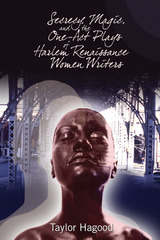 Secrecy, Magic, and the One-Act Plays of Harlem Renaissance Women Writers
Taylor Hagood
Ohio State University Press, 2010 Secrecy, Magic, and the One-Act Plays of Harlem Renaissance Women Writers seeks to rescue the plays of eight black women, Marita Bonner, Mary P. Burrill, Thelma Duncan, Shirley Graham, Zora Neale Hurston, Georgia Douglas Johnson, May Miller, and Eulalie Spence, from obscurity. This volume is the first book-length treatment to address these plays and their authors exclusively rather than as part of a discussion of other African American playwrights from different eras. It is also one of the few to carry out an extensive discussion of secrecy’s role in both literary representation and social interaction.
Exploring secrecy from the standpoints of poststructuralist language theory and game theory as well as dramatic performance, Taylor Hagood argues that the secret—a thing visible for its very invisibility—is a fundamental cog in the machinery of society, employed as a tool for both oppression and subversion. The many facets of secrecy have been particularly salient in African American culture, informing everything from the Underground Railroad to the subtle coding of Signifying. Most devastatingly, people on both sides of the color line are caught within a web of secrecy that is the result of centuries of distrust, doubt, and fear, a fact that is powerfully manifest not only in these one-act plays but in the reader’s/spectator’s interactions with them.
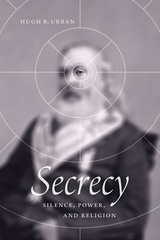 Secrecy: Silence, Power, and Religion
Hugh B. Urban
University of Chicago Press, 2021 The powers of political secrecy and social spectacle have been taken to surreal extremes recently. Witness the twin terrors of a president who refuses to disclose dealings with foreign powers while the private data of ordinary citizens is stolen and marketed in order to manipulate consumer preferences and voting outcomes. We have become accustomed to thinking about secrecy in political terms and personal privacy terms. In this bracing, new work, Hugh Urban wants us to focus these same powers of observation on the role of secrecy in religion.
With Secrecy, Urban investigates several revealing instances of the power of secrecy in religion, including nineteenth-century Scottish Rite Freemasonry, the sexual magic of a Russian-born Parisian mystic; the white supremacist BrüderSchweigen or “Silent Brotherhood” movement of the 1980s, the Five Percenters, and the Church of Scientology. An electrifying read, Secrecy is the culmination of decades of Urban’s reflections on a vexed, ever-present subject.
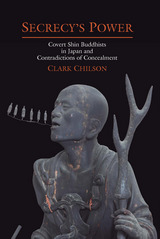 Secrecy's Power: Covert Shin Buddhists in Japan and Contradictions of Concealment
Clark Chilson
University of Hawaii Press, 2014 Shin has long been one of the most popular forms of Buddhism in Japan. As a devotional tradition that emphasizes gratitude and trust in Amida Buddha, it is thought to have little to do with secrecy. Yet for centuries, Shin Buddhists met on secluded mountains, in homes, and in the backrooms of stores to teach their hidden doctrines and hold clandestine rites. Among their adherents was D. T. Suzuki’s mother, who took her son to covert Shin meetings when he was a boy.
Even among Shin experts, covert followers were relatively unknown; historians who studied them claimed they had disappeared more than a century ago. A serendipitous encounter, however, led to author Clark Chilson’s introduction to the leader of a covert Shin Buddhist group—one of several that to this day conceal the very existence of their beliefs and practices. In Secrecy’s Power Chilson explains how and why they have remained hidden.
Drawing on historical and ethnographic sources, as well as fieldwork among covert Shin Buddhists in central Japan, Secrecy’s Power introduces the histories, doctrines, and practices of different covert Shin Buddhists. It shows how, despite assumptions to the contrary, secrecy has been a significant part of Shin’s history since the thirteenth century, when Shinran disowned his eldest son for claiming secret knowledge. The work also demonstrates how secrecy in Shin has long been both a source of conflict and a response to it. Some covert Shin Buddhists were persecuted because of their secrecy, while others used it to protect themselves from persecution under rulers hostile to Shin.
Secrecy’s Power is a groundbreaking work that makes an important contribution to our knowledge on secrecy and Shin Buddhism. Organized around the various consequences concealment has had for covert Shin Buddhists, it provides new insights into the power of secrecy to produce multiple effects—even polar opposite ones. It also sheds light on ignored corners of Shin Buddhism to reveal a much richer, more diverse, and more contested tradition than commonly is understood.
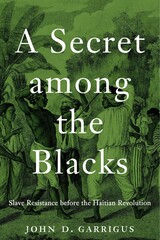 A Secret among the Blacks: Slave Resistance before the Haitian Revolution
John D. Garrigus
Harvard University Press, 2023 A bold rethinking of the Haitian Revolution reveals the roots of the only successful slave uprising in the modern world.
Unearthing the progenitors of the Haitian Revolution has been a historical project of two hundred years. In A Secret among the Blacks, John D. Garrigus introduces two dozen Black men and women and their communities whose decades of resistance to deadly environmental and political threats preceded and shaped the 1791 revolt.
In the twenty-five miles surrounding the revolt’s first fires, enslaved people of diverse origins lived in a crucible of forces that arose from the French colonial project. When a combination of drought, trade blockade, and deadly anthrax bacteria caused waves of death among the enslaved in the 1750s, poison investigations spiraled across plantations. Planters accused, tortured, and killed enslaved healers, survivors, and community leaders for deaths the French regime had caused. Facing inquisition, exploitation, starvation, and disease, enslaved people devised resistance strategies that they practiced for decades. Enslaved men and women organized labor stoppages and allied with free Blacks to force the French into negotiations. They sought enforcement of freedom promises and legal protection from abuse. Some killed their abusers.
Through remarkable archival discoveries and creative interpretations of the worlds endured by the enslaved, A Secret among the Blacks reveals the range of complex, long-term political visions pursued by enslaved people who organized across plantations located in the seedbed of the Haitian Revolution. When the call to rebellion came, these men and women were prepared to answer.
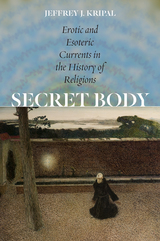 Secret Body: Erotic and Esoteric Currents in the History of Religions
Jeffrey J. Kripal
University of Chicago Press, 2017 Over the course of his twenty-five-year career, Jeffrey J. Kripal’s study of religion has had two major areas of focus: the erotic expression of mystical experience and the rise of the paranormal in American culture. This book brings these two halves together in surprising ways through a blend of memoir, manifesto, and anthology, drawing new connections between these two realms of human experience and revealing Kripal’s body of work to be a dynamic whole that has the potential to renew and reshape the study of religion.
Kripal tells his story, biographically, historically and politically contextualizing each of the six books of his Chicago corpus, from Kali’s Child to Mutants and Mystics, all the while answering his censors and critics and exploring new implications of his thought. In the process, he begins to sketch out a speculative “new comparativism” in twenty theses. The result is a new vision for the study of religion, one that takes in the best of the past, engages with outside critiques from the sciences and the humanities, and begins to blaze a new positive path forward. A major work decades in the making, Secret Body will become a landmark in the study of religion.
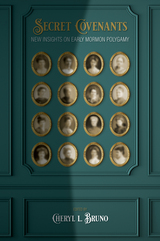 Secret Covenants: New Insights on Early Mormon Polygamy
Bruno, Cheryl L.
Signature Books, 2024 Navigating the intricate labyrinth of early Mormon plural marriage can be fascinating, frustrating, and often confusing. The essays in this volume venture into the depths of historical inquiry, presenting a diverse array of perspectives on the subject. Authored by a consortium of esteemed scholars and researchers in the field of Mormon studies, it addresses the nuanced intricacies of Joseph Smith’s involvement in plural marriage. Delving into the core of this discourse, these experts meticulously analyze foundational documents, highlighting the complexities Joseph Smith faced in practicing plural marriage and shedding light on the legal aspects of polygamy in 1840s Illinois. It navigates lesser-known details of Smith’s proposals and relationships, including the enigmatic story of Fanny Alger. Secret Covenants presents a balanced exploration. It critiques traditional portrayals, providing multiple viewpoints, such as the examination of Emma Smith’s vehement rejection of polygamy after her husband’s death, and an analysis of the societal impact on women within polygamous unions. Furthermore, the authors address evolving doctrinal debates triggered by the “Marriage Revelation” and its impact on Mormon philosophy and thought. This anthology serves as a foundational resource for academic scholars, individuals interested in religious history, and anyone seeking to understand the many layers of Mormon plural marriage.
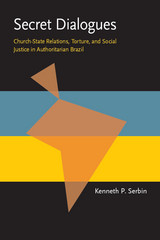 Secret Dialogues: Church-State Relations, Torture, and Social Justice in Authoritarian Brazil
Kenneth Serbin
University of Pittsburgh Press, 2000
Secret Dialogues uncovers an unexpected development in modern Latin American history: the existence of secret talks between generals and Roman Catholic bishops at the height of Brazil's military dictatorship. During the brutal term of Emílio Garrastazú Médici, the Catholic Church became famous for its progressivism. However, new archival sources demonstrate that the church also sought to retain its privileges and influence by exploring a potential alliance with the military. From 1970 to 1974 the secret Bipartite Commission worked to resolve church-state conflict and to define the boundary between social activism and subversion. As the bishops increasingly made defense of human rights their top pastoral and political goal, the Bipartite became an important forum of protest against torture and social injustice. Based on more than 60 interviews and primary sources from three continents, Secret Dialogues is a major addition to the historical narrative of the most violent yet, ironically, the least studied period of the Brazilian military regime. Its story is intertwined with the central themes of the era: revolutionary warfare, repression, censorship, the fight for democracy, and the conflict between Catholic notions of social justice and the anticommunist Doctrine of National Security.
Secret Dialogues is the first book of its kind on the contemporary Catholic Church in any Latin American country, for most work in this field is devoid of primary documentary research. Serbin questions key assumptions about church-state conflict such as the typical conservative-progressive dichotomy and the notion of church-state rupture during harsh authoritarian periods. Secret Dialogues is written for undergraduate and graduate students, professional scholars, and the general reader interested in Brazil, Latin America, military dictatorship, human rights, and the relationship between religion and politics.
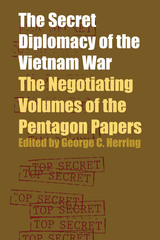 The Secret Diplomacy of the Vietnam War: The Negotiating Volumes of the Pentagon Papers
Edited by George C. Herring
University of Texas Press, 1983 In 1971 RAND consultant Daniel J. Ellsberg made national news by handing over to the New York Times a top secret Pentagon study on the Vietnam War. Publication of the Pentagon Papers rocked the American defense establishment and fanned the flames of the growing antiwar protest movement in the United States. By late that year, most of the Pentagon Papers had been released to the public. Four volumes, however, were held back, Ellsberg himself conceding their special sensitivity. These so-called negotiating volumes deal with the diplomacy of the war between 1964 and 1968. Published in book form with extensive commentary, they provide an indispensable source for the study of diplomacy during the Vietnam conflict. These documents cover thirteen major peace contacts and initiatives that took place during the presidency of Lyndon Johnson. They furnish a wealth of new information about the American bombing pauses of May 1965 and January 1966; several third-party peace initiatives; and a still virtually unknown 1965 contact, mysteriously called “xyz,” between North Vietnamese and American diplomats in Paris. They afford the most complete documentation yet available of the Polish-sponsored peace move codenamed “marigold” and the abortive peace initiative launched early in 1967 by British Prime Minister Wilson and Soviet Premier Kosygin. The utility of this important book is greatly enhanced by Herring’s extensive annotation, highly informative introductory essays, and helpful glossaries.
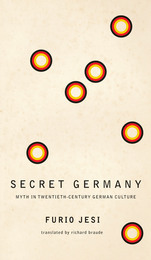 Secret Germany: Myth in Twentieth-Century German Culture
Furio Jesi
Seagull Books, 2021 An analysis of how a political myth is taken and treated as a metaphor that reflects how a country like Germany built its own destiny.
In the decades before the rise of the Third Reich, “Secret Germany” was a phrase used by the circle of writers around the poet Stefan George to describe a collective political and poetic project: the introduction of the highest values of art into everyday life, the secularization of myth and the mythologization of history. In this book, Furio Jesi takes up the term in order to trace the contours of that political, artistic, and aesthetic thread as it runs through German literary and artistic culture in the period—which, in the 1930s, became absorbed by Nazism as part of its prophecy of a triumphant future. Drawing on thinkers like Carl Jung and writers such as Thomas Mann and Rainer Maria Rilke, Jesi reveals a literary genre that was transformed, tragically, into a potent political myth.
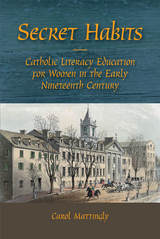 Secret Habits: Catholic Literacy Education for Women in the Early Nineteenth Century
Carol Mattingly
Southern Illinois University Press, 2016 Literacy historians have credited the Protestant mandate to read scripture, as well as Protestant schools, for advances in American literacy. This belief, however, has overshadowed other important efforts and led to an incomplete understanding of our literacy history. In Secret Habits: Catholic Literacy Education for Women in the Early Nineteenth Century, Carol Mattingly restores the work of Catholic nuns and sisters to its rightful place in literacy studies.
Mattingly shows that despite widespread fears and opposition, including attacks by vaunted northeastern Protestant pioneers of literacy, Catholic women nonetheless became important educators of women in many areas of America. They founded convents, convent academies, and schools; developed their own curricula and pedagogies; and persisted in their efforts in the face of significant prejudices. The convents faced sharp opposition from Protestant educators, who often played on anti-Catholic fears to gain support for their own schools. Using a performative rhetoric of good works that emphasized civic involvement, Catholic women were able to educate large numbers of women and expand opportunities for literacy instruction.
A needed corrective to studies that have focused solely on efforts by Protestant educators, Mattingly’s work offers new insights into early nineteenth-century women’s literacy, demonstrating that literacy education was more religiously and geographically diverse than previously recognized.
Secret History
Procopius
University of Michigan Press, 1961 Written with passion and personal malice, the Secret History of Procopius is a scathing indictment of the emperor Justinian and his sixth-century Byzantine court. Never has there been a more calculated attempt to ruin an entire reign in the eyes of posterity. Procopius writes of:
. . . How the Great General Belisarius was hoodwinked by his wife, whose lover became a monk.
. . . How Theodora, most depraved of all empresses, won Justinian's love.
. . . How she saved five hundred harlots from a life of sin, made off with her own natural son, and other curious incidents of her passion.
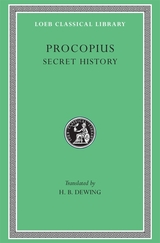 Secret History
Procopius
Harvard University Press Late antique muckraking.
Procopius, born at Caesarea in Palestine late in the fifth century, became a lawyer. In AD 527 he was made legal adviser and secretary of Belisarius, commander against the Persians, and went with Belisarius again in 533 against the Vandals and in 535 against the Ostrogoths. Sometime after 540 he returned to Constantinople. He may have been that Procopius who was prefect of Constantinople in 562, but the date of his death (after 558) is unknown.
Procopius’ History of the Wars in 8 books recounts the Persian Wars of emperors Justinus and Justinian down to 550 (2 books); the Vandalic War and after-events in Africa 532–546 (2 books); the Gothic War against the Ostrogoths in Sicily and Italy 536–552 (3 books); and a sketch of events to 554 (1 book). The whole consists largely of military history, with much information about peoples and places as well, and about special events. He was a diligent, careful, judicious narrator of facts and developments and shows good powers of description. He is just to the empire’s enemies and boldly criticizes emperor Justinian. Other works by Procopius are the Anecdota or Secret History—vehement attacks on Justinian, Theodora, and others; and the Buildings of Justinian (down to AD 558) including roads and bridges as well as churches, forts, hospitals, and so on in various parts of the empire.
The Loeb Classical Library edition of Procopius is in seven volumes.
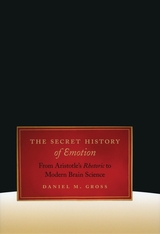 The Secret History of Emotion: From Aristotle's Rhetoric to Modern Brain Science
Daniel M. Gross
University of Chicago Press, 2006 Princess Diana’s death was a tragedy that provoked mourning across the globe; the death of a homeless person, more often than not, is met with apathy. How can we account for this uneven distribution of emotion? Can it simply be explained by the prevailing scientific understanding? Uncovering a rich tradition beginning with Aristotle, The Secret History of Emotion offers a counterpoint to the way we generally understand emotions today.
Through a radical rereading of Aristotle, Seneca, Thomas Hobbes, Sarah Fielding, and Judith Butler, among others, Daniel M. Gross reveals a persistent intellectual current that considers emotions as psychosocial phenomena. In Gross’s historical analysis of emotion, Aristotle and Hobbes’s rhetoric show that our passions do not stem from some inherent, universal nature of men and women, but rather are conditioned by power relations and social hierarchies. He follows up with consideration of how political passions are distributed to some people but not to others using the Roman Stoics as a guide. Hume and contemporary theorists like Judith Butler, meanwhile, explain to us how psyches are shaped by power. To supplement his argument, Gross also provides a history and critique of the dominant modern view of emotions, expressed in Darwinism and neurobiology, in which they are considered organic, personal feelings independent of social circumstances.
The result is a convincing work that rescues the study of the passions from science and returns it to the humanities and the art of rhetoric.
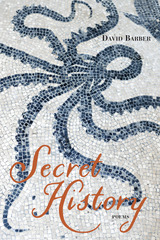 Secret History: Poems
David Barber
Northwestern University Press, 2020 In David Barber’s third collection of poetry, the past makes its presence felt from first to last. Drawing on a wealth of eclectic sources and crafted in an array of nonce forms, these poems range across vast stretches of cultural and natural history in pursuit of the forsaken, long-gone, and unsung.
Here is the stuff of lost time unearthed from all over: ballyhoo and murder ballad, the lacrimarium and the xylotheque, the Game of Robbers and the Indian Rope Trick, the obsolete o’o, the old-school word hoard, sunshowers and beaters and breaker boys. Here, to mark the twilight of print and type, are gleanings and borrowings from a mixed bag of throwback bound volumes: The Magic Moving Picture Book, Mandeville’s Travels, The Golden Bough, Franklin Arithmetic, The Millennial Laws of the Shakers, A Conjuror’s Confessions.
Here too are guiding spirits whose like will not pass this way again: Cab Calloway at the Cotton Club; Henry Walter Bates in darkest Amazon; George Catlin among the Choctaw; Little Nemo in Slumberland; Yogi Berra in all his oracular glory. Reveling in vernacular lingo of every vintage even while brooding on dark ages without end, Secret History chronicles a world of long shadows and distant echoes that bears more than a passing resemblance to our own.
The Secret in the Wings: A Play
Mary Zimmerman
Northwestern University Press, 2014 A dark and mysterious homage to lesser-known fairy tales Mary Zimmerman’s The Secret in the Wings adapts a group of lesser-known fairy tales to create a theatrical work that sets their dark mystery against her signature wit and humor. The framing story concerns a child and the frightening babysitter with whom her parents leave her. As the babysitter reads from a book, the characters in each of the tales materialize, with each tale breaking off just at its bleakest moment before giving way to the next one. The central tale is told without interruption, after which each previous tale is successively resumed, with each looming disaster averted. As in Zimmerman’s other productions, here she uses costumes, props, sets, and lighting to brilliant effect, creating images and feelings that render the fairy tales in all their elemental and enduring power.
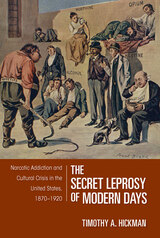 The Secret Leprosy of Modern Days: Narcotic Addiction and Cultural Crisis in the United States, 1870-1920
Timothy A. Hickman
University of Massachusetts Press, 2007 Although the topic of habitual narcotic use first surfaced in the United States during the 1820s, it was not until after the Civil War that it became a subject of widespread public attention. Beginning in the 1870s, an increasingly urgent discussion of what some described as a national epidemic of "drug addiction" could be found in both medical journals and the popular press. Today, nearly a century and a half later, the term is so commonplace we speak of people being "addicted" to just about anything. Yet as Timothy A. Hickman argues in this revealing interdisciplinary study, the meaning of addiction has always been as much cultural as scientific and never fixed. In The Secret Leprosy of Modern Days, Hickman resituates the idea of addiction within its original late nineteenth- and early twentieth-century context. Through close readings of a broad range of literary, medical, and legal texts, he shows how Americans of that era conceptualized the dangers of drug addiction in terms of other preoccupations and fears. Anxieties about the accelerating pace of technological change, the loss of personal autonomy, and the degeneration of society attributed to both foreign influences and a decline of manliness all fed into a widespread sense of cultural crisis—a crisis of which the spiraling "drug problem" was seen as both contributing cause and consequence. Not surprisingly, Hickman points out, deeply held assumptions of class, race, and gender also figured into the popular understanding of addiction. While white middle-class addicts were often depicted as helpless victims of the social and economic pressures of modern life, their less privileged and nonwhite counterparts were regarded as morally weak. Over time the distinction between "addict as patient" and "addict as criminal" came to be accepted by the emerging medical establishment and codified into law, eventually finding expression in the Harrison Narcotics Act of 1914, the first national anti-narcotic legislation in the history of the United States—and the basis for much thinking about addiction and drug policy ever since.
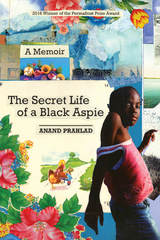 The Secret Life of a Black Aspie: A Memoir
Anand Prahlad
University of Alaska Press, 2017 Anand Prahlad was born on a former plantation in Virginia in 1954. This memoir, vividly internal, powerfully lyric, and brilliantly impressionistic, is his story.
For the first four years of his life, Prahlad didn’t speak. But his silence didn’t stop him from communicating—or communing—with the strange, numinous world he found around him. Ordinary household objects came to life; the spirits of long-dead slave children were his best friends. In his magical interior world, sensory experiences blurred, time disappeared, and memory was fluid. Ever so slowly, he emerged, learning to talk and evolving into an artist and educator. His journey takes readers across the United States during one of its most turbulent moments, and Prahlad experiences it all, from the heights of the Civil Rights Movement to West Coast hippie enclaves to a college town that continues to struggle with racism and its border state legacy.
Rooted in black folklore and cultural ambience, and offering new perspectives on autism and more, The Secret Life of a Black Aspie will inspire and delight readers and deepen our understanding of the marginal spaces of human existence.
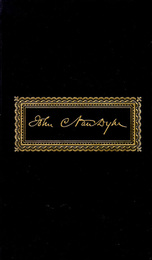 The Secret Life Of John C. Van Dyke: Selected Letters
David W. Teague
University of Nevada Press, 1997 The author of The Desert, the book that made the American landscape accessible to the mainstream mind, was much less like his fellow environmental prophets John Muir and Henry David Thoreau than he would have had us believe. Van Dyke claimed to have wandered "alone on horseback for thousands of miles through the American Southwest and northern Mexico," as readers of The Desert—now in the millions since the book was published in 1901—were told. He did not. In The Secret Life of John C. Van Dyke, Teague and Wild unmask the desert saint with Van Dyke’s own recently discovered letters. These letters depict a privileged, patrician, and pampered member of the upper-class. His incriminating correspondence reveals that he saw most of the desert from plush railroad cars and grand hotel rooms. In the introduction, the editors clear up many misconceptions scholars currently hold about Van Dyke’s ecological principles, about his outdoorsmanship, and about his trip through the desert itself. As the centennial of the publication of The Desert approaches, this lively collection of letters helps set the record straight. The John C. Van Dyke unveiled in The Secret Life is a more varied character than we had supposed—still worthy of much admiration for his remarkable accomplishments, but still mysterious, and not the man we thought him to be.
 The Secret Life of Puppets
Victoria Nelson
Harvard University Press, 2003 In one of those rare books that allows us to see the world not as we’ve never seen it before, but as we see it daily without knowing, Victoria Nelson illuminates the deep but hidden attraction the supernatural still holds for a secular mainstream culture that forced the transcendental underground and firmly displaced wonder and awe with the forces of reason, materialism, and science.
In a backward look at an era now drawing to a close, The Secret Life of Puppets describes a curious reversal in the roles of art and religion: where art and literature once took their content from religion, we came increasingly to seek religion, covertly, through art and entertainment. In a tour of Western culture that is at once exhilarating and alarming, Nelson shows us the distorted forms in which the spiritual resurfaced in high art but also, strikingly, in the mass culture of puppets, horror-fantasy literature, and cyborgs: from the works of Kleist, Poe, Musil, and Lovecraft to Philip K. Dick and virtual reality simulations. At the end of the millennium, discarding a convention of the demonized grotesque that endured three hundred years, a Demiurgic consciousness shaped in Late Antiquity is emerging anew to re-divinize the human as artists like Lars von Trier and Will Self reinvent Expressionism in forms familiar to our pre-Reformation ancestors. Here as never before, we see how pervasively but unwittingly, consuming art forms of the fantastic, we allow ourselves to believe.
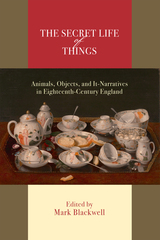 The Secret Life of Things: Animals, Objects, and It-Narratives in Eighteenth-Century England
Mark Blackwell
Bucknell University Press, 2023 Enriching and complicating the history of fiction between Richardson and Fielding at mid-century and Austen at the turn of the century, this collection focuses on it-narratives, a once popular form largely forgotten by readers and critics alike, and advances important work on consumer culture and the theory of things. The contributors bring new texts—and new ways of thinking about familiar ones—to our notice. Topics range from period debates about copyright to the complex relationships with object-riddled sentimental fictions, from anti-Semitism in Chrysal to jingoistic imperialism in The Adventures of a Rupee. Essays situate it-narratives in a variety of contexts: changing attitudes toward occult powers, the development of still-life painting, the ethical challenges of pet ownership, the cult of Sterne and the appearance of genre fiction, the emergence of moral-didactic children’s literature, and a better-known tradition of Victorian thing-narratives. Stylistically and thematically consistent, the essays in this collection approach it-narratives from various theoretical and historical vantage points, sketching the cultural biography of a neglected literary form.
Published by Bucknell University Press.
Distributed worldwide by Rutgers University Press.
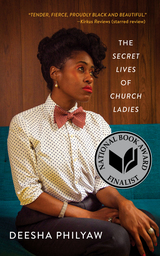 The Secret Lives of Church Ladies
Deesha Philyaw
West Virginia University Press, 2020 *FINALIST for the 2020 National Book Award for Fiction*
*WINNER of the 2021 PEN/Faulkner Award*
*WINNER of the 2020 Story Prize*
*WINNER of the 2020 L.A. Times Book Prize, Art Seidenbaum Award for First Fiction*
“Beguiling.” —The New Yorker
“Tender, fierce, proudly black and beautiful, these stories will sneak inside you and take root.” —Kirkus Reviews (starred review)
“Triumphant.” —Publishers Weekly
“Cheeky, insightful, and irresistible.” —Ms. Magazine
“This collection marks the emergence of a bona fide literary treasure.” —Minneapolis Star Tribune
“Full of lived-in humanity, warmth, and compassion.” —Pittsburgh Current
The Secret Lives of Church Ladies explores the raw and tender places where Black women and girls dare to follow their desires and pursue a momentary reprieve from being good. The nine stories in this collection feature four generations of characters grappling with who they want to be in the world, caught as they are between the church’s double standards and their own needs and passions.
There is fourteen-year-old Jael, who has a crush on the preacher’s wife. At forty-two, Lyra realizes that her discomfort with her own body stands between her and a new love. As Y2K looms, Caroletta’s “same time next year” arrangement with her childhood best friend is tenuous. A serial mistress lays down the ground rules for her married lovers. In the dark shadows of a hospice parking lot, grieving strangers find comfort in each other.
With their secret longings, new love, and forbidden affairs, these church ladies are as seductive as they want to be, as vulnerable as they need to be, as unfaithful and unrepentant as they care to be, and as free as they deserve to be.
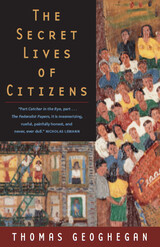 The Secret Lives of Citizens: Pursuing the Promise of American Life
Thomas Geoghegan
University of Chicago Press, 2000 In this witty combination of memoir and observation, Thomas Geoghegan addresses the widespread cynicism about our government and explores what it means to be a "national" civil servant and a "local" citizen.
"This is unlike any public-policy book I've ever read: part Catcher in the Rye, part The Road to Wigan Pier, part The Federalist Papers, it is mesmerizing, rueful, painfully honest, and never, ever dull."—Nicholas Lemann, author of The Big Test
"Extraordinary. It has the essential trait of a memorable book, in that after reading it you look at daily life in a lastingly different way." —James Fallows, author of Breaking the News
"[Geoghegan] has written a book that is not only compelling to read but that provokes us to seriously reflect on the choices we make and how we spend our time." —Jonathan Coleman, Washington Post Book World
"Geoghegan's language is playful. . . . Personal reminiscence mixing with historical anecdote, dipping into complex themes . . . shifting from wistful nostalgia to dark comedy." —Robert B. Reich, New York Times Book Review
"A truly strange and wonderful book." — William Finnegan
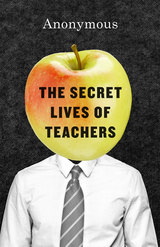 The Secret Lives of Teachers
Anonymous
University of Chicago Press, 2015 Welcome to “East Hudson,” an elite private school in New York where the students are attentive, the colleagues are supportive, and the tuition would make the average person choke on its string of zeroes. You might think a teacher here would have little in common with most other teachers in America, but as this veteran educator—writing anonymously—shows in this refreshingly honest account, all teachers are bound by a common thread. Stripped of most economic obstacles and freed up by anonymity, he is able to tell a deeper story about the universal conditions, anxieties, foibles, generosities, hopes, and complaints that comprise every teacher’s life. The results are sometimes funny, sometimes scandalous, but always recognizable to anyone who has ever walked into a classroom, closed the door, and started their day.
This is not a how-to manual. Rather, the author explores the dimensions of teaching that no one else has, those private thoughts few would dare put into a book but that form an important part of the day-to-day experience of a teacher. We see him ponder the clothes that people wear, think frankly about money (and the imbalance of its distribution), get wrangled by parents, provide on-the-fly psychotherapy, drape niceties over conversations that are actually all-out warfare, drop an f-bomb or two, and deal with students who are just plain unlikeable. We also see him envy, admire, fear, and hope; we see him in adulation and uncertainty, and in energy and exhaustion. We see him as teachers really are: human beings with a complex, rewarding, and very important job.
There has been no shortage of commentary on the teaching profession over the decades, but none quite like this. Unflinching, wry, and at times laugh-out-loud funny, it’s written for every teacher out there who has ever scrambled, smirked, or sighed—and toughed it out nonetheless.
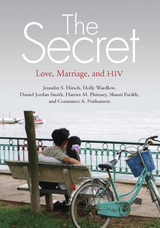 The Secret: Love, Marriage, and HIV
Jennifer S. Hirsch
Vanderbilt University Press, 2009 A CHOICE Outstanding Academic Title of 2010
For many women around the world, their greatest risk of HIV infection comes from having sex with the very person with whom they are supposed to have sex: their spouse. The Secret situates marital HIV risk within a broader exploration of marital and extramarital sexuality in five diverse settings: Mexico, Nigeria, Uganda, Vietnam, and Papua New Guinea. In these settings, the authors write, men's extramarital sex is an officially secret but actually widespread (and widely acknowledged) social practice, rather than something men do because their bodies demand it and women can't stop them.
Drawing on research conducted as part of an innovative comparative ethnographic study, and modeling a novel approach to collaborative anthropological scholarship, the authors show men's extramarital sex to be a fundamental aspect of gendered social organization. Through theoretically sophisticated yet lucid writing and vivid ethnographic description, drawing on rich data from the marital case studies conducted by research teams in each country, they trace how extramarital opportunity structures, sexual geographies, and concerns about social risk facilitate men's participation in extramarital sex. Also documented throughout is the collision between traditional ways and the new practices of romantic companionate marriage.
Secret Manoeuvres in the Dark: Corporate and Police Spying on Activists
Eveline Lubbers
Pluto Press, 2012 The exposure of undercover policeman Mark Kennedy in the eco-activist movement revealed how the state monitors and undermines political activism. This book shows the other grave threat to our political freedoms - undercover activities by corporations.
Secret Manoeuvres in the Dark documents how corporations are halting legitimate action and investigation by activists. Using exclusive access to previously confidential sources, Eveline Lubbers shows how companies such as Nestlé, Shell and McDonalds use covert methods to evade accountability. She argues that corporate intelligence gathering has shifted from being reactive to pro-active, with important implications for democracy itself.
Secret Manoeuvres in the Dark will be vital reading for activists, investigative and citizen journalists, and all who care about freedom and democracy in the 21st century.
 Secret Maps: Maps You Were Never Meant to See, from the Middle Ages to Today
Tom Harper, Nick Dykes, and Magdalena Peszko
University of Chicago Press, 2025 An illustrated story of the relationship between mapping and secrecy, charting the role maps played in concealing and revealing knowledge across centuries. Is there anything more intriguing than a secret map? One that reveals clandestine information or meanings, or a map that is itself a secret? Secret Maps features over one hundred examples of these kinds of maps, connected by their varied relationships to secrecy, and ranging from the twelfth to the twenty-first centuries and across the globe. They include views into state secrecy and power—such as maps used for domestic and military purposes, imperial expansion, espionage, and surveillance as well as those with private or commercial uses, such as charts of private land, trade routes, or the flights of private jets. The maps span widely in their scope and cover issues of broad interest, from old-fashioned spying to contemporary concerns about technology and privacy. As illuminating as it is thrilling, Secret Maps unearths the once-hidden routes, landscapes, and locations that have covertly shaped our world.
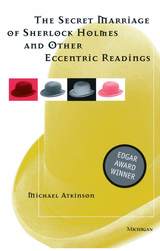 The Secret Marriage of Sherlock Holmes and Other Eccentric Readings
Michael Atkinson
University of Michigan Press, 1998 The Secret Marriage of Sherlock Holmes is about reading, a process that we take for granted. But Sherlock Holmes, the cultural icon to whose exploits Michael Atkinson gives new readings, became famous by taking nothing for granted. Holmes's adventures can be read in new ways, including ways that he himself would have found startling, but which can give contemporary readers satisfaction. In clear, accessible prose that will engage specialists and lay readers alike, Atkinson engages in "a series of flirtations" with nine of Arthur Conan Doyle's favorite detective fictions, using the tools of modern literary theory, from depth psychology to deconstruction. Bluebeard, the kundalini serpent, and Conan Doyle's mother pop up alongside Jung, Nietzsche, and Derrida as guides to new understandings of these classic stories. Just as Holmes uses treatises on tobacco ash and tattoos to give fresh readings to puzzling facts, Atkinson employs widely different critical strategies to unravel the mysteries of reading itself.
"What a delightful book! This is surely the most interesting writing you will ever read about Sherlock Holmes, but it is much more. Michael Atkinson gives us literary criticism at its best: the sheer fun of watching a bold and imaginative reader breathe into well-loved, but well-worn, fictions new and enchanting life. Atkinson's mind races as nimbly as Holmes's own, and he makes the stories our hansom cab through human nature itself. A tour de force!" ---Norman N. Holland, author of Murder in a Dephi Seminar
"A book that speaks directly to readers. . . Atkinson sees far beneath the surface of the Sherlock stories to provide fascinating commentary." ---Cincinnati Post
"Atkinson demonstrates a love and knowledge of the Holmes stories. . . I would recommend The Secret Marriage of Sherlock Holmes enthusiastically to any lover of the Canon who is prepared to have their perceptions widened."
---Mystery Writers of America
Michael Atkinson is Professor of English and Comparative Literature, University of Cincinnati.
The Secret of M. Dulong: A Memoir
Colette Inez
University of Wisconsin Press, 2005 A search for roots and identity has rarely been captured with such irony, unusual insight, and surprising humor as in this memoir of heartbreak and hope. Today a distinguished American poet, Colette Inez first came to the United States when she was eight years old, as an apparent Belgian orphan escorted by two complete strangers. Growing up in post–World War II America, a stranger to her own past, she survived a harrowing adolescence and an increasingly menacing, abusive adoptive family by learning to define her single solace: a developing passion for literature. Facing possible deportation in the 1950s, Inez set out to prove her claim to U.S. citizenship. The result, as she recounts in this eloquent, wrenching memoir, would span two continents, a trail of discovery, and a buried secret: one that ultimately allowed Inez to reconcile her past and present and finally come of age as an artist.
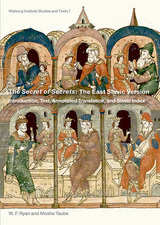 The Secret of Secrets: The East Slavic Version
Edited by W.F. Ryan and Moshe Taube
University of London Press, 2019 The original Arabic Secret of Secrets was probably compiled from multiple sources, and dates from about the tenth century. It purports to be the advice of Aristotle to his pupil Alexander the Great on all the knowledge - political, ethical, military, medical, and occult - needed by a great king. It was translated into Latin, Hebrew, and many European languages. It has been described as one of the most popular books of the Middle Ages. The Hebrew version was translated into a variety of East Slavic, probably in Kiev before 1483. This idiosyncratic version contains major interpolations: a physiognomy by Razes and treatises on poison, sex, and asthma by Maimonides. It is known to have been in the libraries of at least two tsars and two patriarchs in the 16th and 17th centuries. This annotated edition contains a historical introduction, the text, manuscript variants, an analytical glossary, and an English translation.
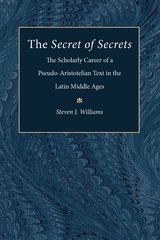 The Secret of Secrets: The Scholarly Career of a Pseudo-Aristotelian Text in the Latin Middle Ages
Steven J. Williams
University of Michigan Press, 2003 The Secret of Secrets. The title alone promises the revelation of the most treasured arcana and piques our interest. Add the names of Aristotle and Alexander the Great, and our curiosity is securely engaged. Readers reacted similarly during the Latin Middle Ages. The work alleges to be an extended letter of advice sent by Aristotle to his former pupil Alexander the Great while the latter was on a campaign in Persia. It stood at the top of the "best-seller" list for hundreds of years and was read by two different audiences: scholars and laypersons. Steven J. Williams focuses his study on its reception by European scholars, starting with its translation into Latin during the High Middle Ages and carrying the story through to the time when scholarly attention waned around 1550.
An important medieval text that also provides a window onto medieval intellectual life, Secret of Secrets played a modest though significant role in medieval scholarly life: "significant" in that it was used in a variety of scholarly contexts, had some part to play in the scholarly controversies of the day, and was so often read that an impressive number of manuscripts are still extant today; "modest" in that it was cited much less frequently than the major works of its day.
Steven J. Williams is Associate Professor in the Department of History, New Mexico Highlands University.
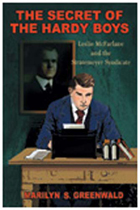 The Secret of the Hardy Boys: Leslie McFarlane and the Stratemeyer Syndicate
Marilyn S. Greenwald
Ohio University Press, 2004 The author of the Hardy Boys Mysteries was, as millions of readers know, Franklin W. Dixon. Except there never was a Franklin W. Dixon. He was the creation of Edward Stratemeyer, the savvy founder of a children's book empire that also published the Tom Swift, Bobbsey Twins, and Nancy Drew series.
The Secret of the Hardy Boys: Leslie McFarlane and the Stratemeyer Syndicate recounts how a newspaper reporter with dreams of becoming a serious novelist first brought to life Joe and Frank Hardy, who became two of the most famous characters in children’s literature.
Embarrassed by his secret identity as the author of the Hardy Boys books, Leslie McFarlane admitted it to no one-his son pried the truth out of him years later. Having signed away all rights to the books, McFarlane never shared in the wild financial success of the series. Far from being bitter, however, late in life McFarlane took satisfaction in having helped introduce millions of children to the joys of reading.
Commenting on the longevity of the Hardy Boys series, the New York Times noted, “Mr. McFarlane breathed originality into the Stratemeyer plots, loading on playful detail.” Author Marilyn Greenwald gives us the story of McFarlane’s life and career, including for the first time a compelling account of his writing life after the Hardy Boys. A talented and versatile writer, McFarlane adapted to sweeping changes in North American markets for writers, as pulp and glossy magazines made way for films, radio, and television. It is a fascinating and inspiring story of the force of talent and personality transcending narrow limits.
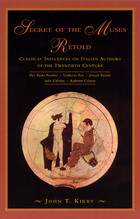 Secret of the Muses Retold: Classical Influences on Italian Authors of the Twentieth Century
John T. Kirby
University of Chicago Press, 2000 Precious repositories of ancient wisdom? Musty relics of outmoded culture? Timeless paragons of artistic achievement? Hegemonic tools of intellectual repression? Just what are the classics, anyway, and why do (or should) we still pay so much attention to them? What is the literary canon? What is myth, and how do we use it?
These are some of the questions that gave rise to John Kirby's Secret of the Muses Retold. This new study of works by five twentieth-century Italian writers investigates the abiding influence of the Greek and Roman classics, and their rich legacy in our own day. The result is not only a splendid introduction to contemporary Italian literature, but also a lucid and stimulating meditation on the insights that writers such as Umberto Eco and Italo Calvino have tapped from the wellspring of ancient tradition.
Kirby's book offers an impassioned plea for the recuperation of the humanities in general, and of classical studies in particular. No expertise in Greek, Latin, Italian, or literary theory is presumed, and both traditional and postmodern perspectives are accommodated.
The Secret of the Three Cities: An Introduction to Hindu Sakta Tantrism
Douglas Renfrew Brooks
University of Chicago Press, 1990 The esoteric Hindu traditions of Tantrism have profoundly influenced the development of Indian thought and civilization. Emerging from elements of yoga and wisdom traditions, shamanism, alchemy, eroticism, and folklore, Tantrism began to affect brahmanical Hinduism in the ninth century. Nevertheless, Tantrism and its key historical figures have been ignored by scholars. This accessible work introduces the concepts and practices of Hindu Sakta Tantrism to all those interested in Hinduism and the comparative study of religion.
 Secret Origins of Modern Microeconomics: Dupuit and the Engineers
Robert B. Ekelund Jr. and Robert F. Hébert
University of Chicago Press, 1999 How did contemporary microeconomic theory emerge? Who were its chief architects? Conventional wisdom points largely to the work of Alfred Marshall (1842-1924) and his colleagues in England in the late nineteenth century. In this highly original and important contribution to the history of economic thought, Robert Ekelund and Robert Hébert convincingly argue that the intellectual tradition of microeconomic inquiry was initiated by members of the Corps des Ingénieurs des Ponts et Chaussées (French corps of state civil engineers), most notably Jules Dupuit (1804-66). Using documents previously unavailable in English, the authors present a cohesive and original picture of French economic thought that solidly documents the contributions of Dupuit and his colleagues. This is a seminal work about the foundations of modern microeconomics.
"A very fine piece of work that provides material I have never seen before, is well written, and has undoubtable merits."—William Baumol, C.V. Starr Center for Applied Economics, New York University
"By bringing to the forefront the achievements of French engineer Jules Dupuit, this work changes our view of the history of microeconomics. Secret Origin of Modern Microeconomics is a commentary on our discipline's mythology of origins: it reminds us that, in the construction and maintenance of canonical authority, the recoginition of founding fathers requires simultaneous, often subtle, gestures of exclusion."—Philippe Fontaine, école Normale Supèrieure de Cachan
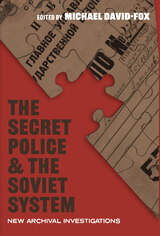 The Secret Police and the Soviet System: New Archival Investigations
Michael David-Fox
University of Pittsburgh Press, 2023 A Penetrating Exploration of the Soviet Secret Police Apparatus
Even more than thirty years after the dissolution of the Soviet Union, the role of the secret police in shaping culture and society in communist USSR has been difficult to study, and defies our complete understanding. In the last decade, the opening of non-Russian KGB archives, notably in Ukraine after 2015, has allowed scholars to explore state security organizations in ways not previously possible. Moving beyond well-known cases of high-profile espionage and repression, this study is the first to showcase research from a wide range of secret police archives in former Soviet republics and the countries of the former Soviet bloc—some of which are rapidly closing or becoming inaccessible once again. Rather than focusing on Soviet leadership, The Secret Police and the Soviet System integrates the secret police into studies of information, technology, economics, art, and ideology. The result is a state-of-the-art portrait of one of the world’s most notorious institutions, the legacies of which are directly relevant for understanding Vladimir Putin’s Russia today.
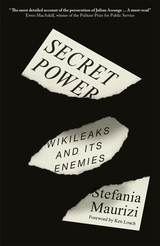 Secret Power: WikiLeaks and Its Enemies
Stefania Maurizi
Pluto Press, 2022 An uncovering of the terrifying depths of authoritarian power that hide behind the infamous story of WikiLeaks
*Winner of the European Award for Investigative And Judicial Journalism 2021*
*Winner of the Premio Alessandro Leogrande Award for Investigative Journalism 2022*
*Winner of the Premio Angelo Vassallo Award 2022*
'I want to live in a society where secret power is accountable to the law and to public opinion for its atrocities, where it is the war criminals who go to jail, not those who have the conscience and courage to expose them.'
It is 2008, and Stefania Maurizi, an investigative journalist with a growing interest in cryptography, starts looking into the little-known organisation WikiLeaks. Through hushed meetings, encrypted files and explosive documents, what she discovers sets her on a life-long journey that takes her deep into the realm of secret power.
Working closely with WikiLeaks' founder Julian Assange and his organisation for her newspaper, Maurizi has spent over a decade investigating state criminality protected by thick layers of secrecy, while also embarking on a solitary trench warfare to unearth the facts underpinning the cruel persecution of Assange and WikiLeaks.
With complex and disturbing insights, Maurizi’s tireless journalism exposes atrocities, the shameful treatment of Chelsea Manning and Edward Snowden, on up to the present persecution of WikiLeaks: a terrifying web of impunity and cover-ups.
At the heart of the book is the brutality of secret power and the unbearable price paid by Julian Assange, WikiLeaks and truthtellers.
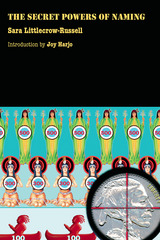 The Secret Powers of Naming
Sara Littlecrow-Russell; Introduction by Joy Harjo
University of Arizona Press, 2006 Sara Littlecrow-Russell’s style emerges from the ancient and sacred tradition of storytelling, where legends were told not just to entertain, but to teach and, if necessary, to discipline. The power of the storyteller is the power of naming, to establish a relationship, a connection, and a sense of meaning. A name is both a bequest and a burden. Each of the poems in this collection is, in essence, a naming ritual. Sharply, energetically, and always provocatively, these poems name uncomfortable moments, complex emotions, and sudden, often wryly humorous realizations.
As Littlecrow-Russell explores how names imposed by outsiders both collide and merge with the identities that Natives create for themselves, these poems decisively counter the images of Indians as colorful dancers, stoic saints, and defeated warriors. These verses are not constructed of beautiful images, nor are they stories of redemption. Instead, Littlecrow-Russell offers stark and honest witness to urban and reservation life at the beginning of the twenty-first century. In short snaps of honed lyric and voice, she tackles topics ranging from family, love, and spirituality, to welfare, addiction, and the thorny politics of tribal identity. Her work displays tremendous bitterness and anger, but there is also dignity, humor, and plenty of irony.
Candid and compelling, this collection brings fluent verse and human face to the commonly misrepresented experiences of Native Americans.
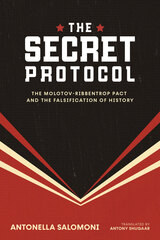 The Secret Protocol: The Molotov-Ribbentrop Pact and the Falsification of History
Antonella Salomoni, Translated by Antony Shugaar
University of Wisconsin Press, 2025 In 1939, the Soviet Union and Germany agreed to a nonaggression treaty named for its signatories, foreign ministers Vyacheslav Molotov and Joachim von Ribbentrop. Kept hidden from the public was an addendum to the Molotov-Ribbentrop Pact, a “secret protocol” whose existence was denied by the Soviet Union until 1992. It defined new borders for German and Soviet spheres of influence, effectively preparing for the partition of Poland, the Baltic states, and Bessarabia. Shortly after signing on August 23, 1939, both the USSR and Nazi Germany invaded Poland. In this volume, Antonella Salomoni scrutinizes this consequential document and its afterlives, focusing predominantly on the discourse that surrounded it.
From the moment of the secret protocol’s inception—and the near-instantaneous rumors of its existence—it generated friction and competing narratives. The document became public during the Nuremberg trials, but the USSR declared it a fabrication evidencing the West’s willingness to falsify history. It continues to be relevant to the reconfiguration of history currently advanced by Vladimir Putin. By centering the rumors, accusations, and propaganda the pact precipitated, Salomoni illuminates how political actors can use and abuse history, how they create and disseminate truths and falsehoods, and how they can blur the boundary between facts and fictions even in the glaring face of black-and-white documentation.
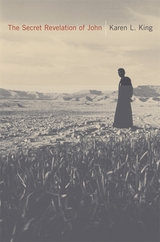 The Secret Revelation of John
Karen L. King
Harvard University Press, 2009 Lost in antiquity, rediscovered in 1896, and only recently accessible for study, The Secret Revelation of John offers a firsthand look into the diversity of Christianity before the establishment of canon and creed. Karen L. King offers an illuminating reading of this ancient text--a narrative of the creation of the universe and humanity and a guide to justice and salvation, said to be Christ's revelation to his disciple John.
Freeing the Revelation from the category of "Gnosticism" to which such accounts were relegated, King shows how the Biblical text could be read by early Christians in radical and revisionary ways. By placing the Revelation in its social and intellectual milieu, she revises our understanding of early Christianity and, more generally, religious thought in the ancient Mediterranean world. Her work helps the modern reader through many intriguing--but confusing--ideas in the text: for example, that the creator god of Genesis, a self-described jealous and exclusive god, is not the true Deity but a kind of fallen angel; or, in an overt critique of patriarchy unique in ancient literature, the declaration that the subordination of woman to man was an ignorant act in direct violation of the "holy height."
In King's analysis, the Revelation becomes not strange but a comprehensible religious vision--and a window on the religious culture of the Roman Empire. A translation of the complete Secret Revelation of John is included.
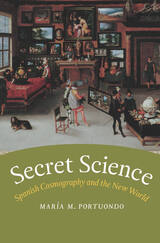 Secret Science: Spanish Cosmography and the New World
María M. Portuondo
University of Chicago Press, 2009 The discovery of the New World raised many questions for early modern scientists: What did these lands contain? Where did they lie in relation to Europe? Who lived there, and what were their inhabitants like? Imperial expansion necessitated changes in the way scientific knowledge was gathered, and Spanish cosmographers in particular were charged with turning their observations of the New World into a body of knowledge that could be used for governing the largest empire the world had ever known. As María M. Portuondo here shows, this cosmographic knowledge had considerable strategic, defensive, and monetary value that royal scientists were charged with safeguarding from foreign and internal enemies. Cosmography was thus a secret science, but despite the limited dissemination of this body of knowledge, royal cosmographers applied alternative epistemologies and new methodologies that changed the discipline, and, in the process, how Europeans understood the natural world.
Secret Service: National Security in an Age of Open Information
Jonathan Evans
Haus Publishing, 2020 In Secret Service, former Director Deneral of the British Security Service Jonathan Evans reveals how he balanced two apparently irreconcilable pressures during his tenure with MI5: state secrecy and public transparency. Despite popular perception, Evans argues, these values need not be at odds. Intelligence and the press share many goals, and partnerships formed on these grounds often prove fruitful. In disclosing his methods, Evans compares his approach with other agencies, especially in the United States, and speculates on the UK’s post-Brexit collaborations with European security services. In short, Secret Service presents an on-the-ground picture of life in British intelligence, one that calls us to care for the moral health of both the institution and its operatives.
 Secret Sharers in Italian Comedy: From Machiavelli to Goldoni
Jackson I. Cope
Duke University Press, 1996 Modern vernacular comedy took shape in early sixteenth-century Italy with the many plays adapted from and modeled on Plautine New Comedy. As Jackson I. Cope demonstrates in this study, some Italian dramatists reacted to the widespread success of this genre with a counterparadigm, a comedy that exploits secrecy as form. In both historically and critically engaging fashion, Cope identifies and examines this major development in Italian theater.
Though outwardly similar to New Comedy with its characteristically harmonious closure, this essentially anti-Plautine form employs a secret—known by the audience but unequally shared among the players—to introduce a radical discrepancy between simultaneous stories unfolding in a single action doubly understood. The result is a plot that is misleading at the surface, contingent and unfinished at its end. The audience, in a position of enforced collusion with regard to the secret, becomes a formal ingredient in the production. The play, more cynical than carnivalesque, opens onto vistas of disruption and deception rather than closing on a note of renewed social harmony.
Cope’s close and original readings of both classic and lesser-known plays by Machiavelli, Ruzante, Cecchi, Grazzini, Fagiuoli, Maggi, and others follow this peculiarly Italian, anti-Plautine paradigm through variations across three centuries to its masterful and complex culmination in Carlo Goldoni’s villeggiatura trilogy. Establishing a new comedic canon that demands a revision of Italian dramatic history and the history of European dramatic theory, Secret Sharers in Italian Comedy makes an important contribution to Italian studies and will also attract readers among theater scholars in English, comparative literature, and drama.
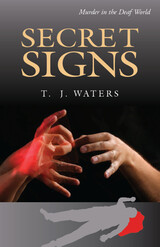 Secret Signs
T. J. Waters
Gallaudet University Press, 2010
Former golf pro Amy Kellen, recently widowed and the mother of a three-year-old daughter, hoped that her new job as a video relay service interpreter for deaf clients would bring stability into her life. She also wished to stay close to the Deaf community that meant so much to her late husband, who was deaf. Little did she know, however, that her new profession would cause her to witness the vicious killing of a deaf client during a video call. In this way author T. J. Waters thrusts Amy into a murder mystery that catches her up in intersecting worlds of intrigue—Internet scams, burglaries, and presidential politics—all connected through the rich Deaf community in Washington, DC.
During the investigation, Amy meets local detective Mike Seer and Secret Service agent Heath Rasco. Despite Seer’s insistence, she refuses to violate her professional ethics and discuss the content of the fatal call. Agent Rasco, who is hard of hearing, admires her commitment to her deaf clients. Amy admits her own attraction to the agent, but her first concern is to learn more about how her client, a respected deaf political strategist, was killed. Her pursuit causes her to witness two more murders and discover a third. She also finds herself and her daughter the targets of assassins. Secret Signs brings these extraordinary elements together in an electrifying combination that promises to surprise and satisfy.
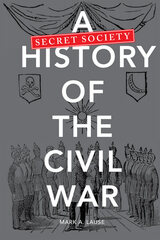 A Secret Society History of the Civil War
Mark A. Lause
University of Illinois Press, 2014 This unique history of the Civil War considers the impact of nineteenth-century American secret societies on the path to as well as the course of the war. Beginning with the European secret societies that laid the groundwork for Freemasonry in the United States, Mark A. Lause analyzes how the Old World's traditions influenced various underground groups and movements in America, particularly George Lippard's Brotherhood of the Union, an American attempt to replicate the political secret societies that influenced the European revolutions of 1848. Lause traces the Brotherhood's various manifestations, the most conspicuous being the Knights of the Golden Circle (out of which developed the Ku Klux Klan), and the Confederate secret groups through which John Wilkes Booth and others attempted to undermine the Union. Lause profiles the key leaders of these organizations, with special focus on George Lippard, Hugh Forbes, and George Washington Lafayette Bickley. Antebellum secret societies ranged politically from those with progressive or even revolutionary agendas to those that pursued conservative or oppressive goals. This book shows how, in the years leading up to the Civil War, these clandestine organizations exacerbated existing sectional tensions in the United States. Lause's research indicates that the pervasive influence of secret societies may have played a part in key events such as the Freesoil movement, the beginning of the Republican party, John Brown's raid on Harpers Ferry, Lincoln's election, and the Southern secession process of 1860-1861. This exceptional study encompasses both white and African American secret society involvement, revealing the black fraternal experience in antebellum America as well as the clandestine operations that provided assistance to escaped slaves via the Underground Railroad. Unraveling these pervasive and extensive networks of power and influence, A Secret Society History of the Civil War demonstrates that antebellum secret societies played a greater role in affecting Civil War-era politics than has been previously acknowledged.
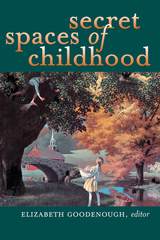 Secret Spaces of Childhood
Elizabeth Goodenough, Editor
University of Michigan Press, 2003 Whether it's real or imaginary, every child has a secret space, and this remarkable book explores them all. For some it's a treehouse or a hidden spot beneath a bush; for others it's a private psychic refuge--a favorite book, or a dollhouse that becomes a stage for a young imagination. As the more than four dozen pieces collected here reveal, such spaces play a key role in a child's development and retain a symbolic power that resonates throughout our adult lives. No reader will put this book down without experiencing a rush of familiar memories and new insights into that bygone world.
Poet Diane Ackerman evokes that "parallel universe behind the eyes / which no one shared, or dare discover"; Paul Brodeur recalls the "fort" where he and his brother defended Cape Cod against invaders in World War II; Nobelist Wole Soyinka offers a poignant verse portrait of Africa's lost children; and Paul West remembers youthful encounters with his eccentric neighbors Edith and Osbert Sitwell. Elsewhere, Robert Coles summons up memories of his first years as a doctor and a wise young patient who taught him a lesson he has never forgotten, and Mary Galbraith shows how childhood loss is transformed into art in Ludwig Bemelmans's classic Madeline. And these are just a few of the gems in a treasury that includes Anne Frank, the controversial photographs of Sally Mann and the crudely eloquent drawings of young South African refugees, clinical case studies and profoundly personal imagery.
A perceptive, thought-provoking work for general readers, Secret Spaces of Childhood opens a wonderful window on the world of the young.
Elizabeth Goodenough is Lecturer in Comparative Literature, the Residential College, University of Michigan.
 The Secret Speeches of Chairman Mao: From the Hundred Flowers to the Great Leap Forward
Roderick MacFarquhar
Harvard University Press, 1989 In 1957 and 1958, Chairman Mao Zedong led China into two major experiments: the Hundred Flowers policy of encouraging literary and political free expression and the economic Great Leap Forward. Each was a disaster. Repression followed the first when it became clear that intellectuals would criticize the Communist Party itself; famine followed the second.
During two crucial years when the movements were being initiated, however, Mao addressed various Party groups behind closed doors to explain the new policies and exhort compliance. Recorded at the time and collected for limited circulation in the 1960s by his admirers among the Red Guards, the speeches, question-and-answer sessions, and letters here translated have never before been published in China or the West. These new, candid materials revise our understanding of how the policies developed and reveal not only the extent of Mao’s power but the startling flights his untethered thought could take.
Introductory essays by Roderick MacFarquhar, Benjamin Schwartz, Eugene Wu, Merle Goldman, and Timothy Cheek provide a context for evaluating and interpreting the nineteen texts translated in this volume.
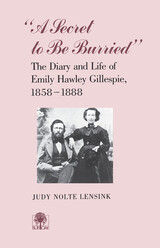 A Secret To Be Burried: Diary Emily Hawley Gillespie
Judy Nolte Lensink
University of Iowa Press, 1989 The sound of nineteenth-century women, once thought lost to us, is alive because ordinary women like Emily Hawley Gillespie gave voice to their thoughts in diaries. This condensed version of the 2,500-page journals of Emily Gillespie, faithfully written from 1858 to 1888, is a detailed account of rural Iowa life. More than this, it contains the reflections of a woman who dreamed of being a painter and writer and instead became a wife and a mother, a woman whose radical convictions were recorded in her diary, while publicly she conformed to the prescribed life of a Victorian pioneer woman. Through Emily's journals, readers are offered immediate and unmodified contact with settlers in Iowa one hundred years ago. A wealth of facts are included—what produce she harvested and preserved from her garden, how her husband tended his fields and what he raised, the challenges and rewards of family life. Judy Lensink's skillful analysis shows the larger patterns in Emily Gillespie's life and provides keys that unlock the diary's secrets. Emily's life is revealed as a youth full of promise fading into middle and declining years of lost dreams and eventual tragedy, which caused her to write, "I have written many things in my journal, but the worst is a secret to be burried when I shall cease to be."
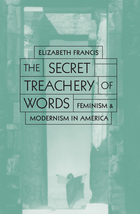 Secret Treachery Of Words: Feminism And Modernism In America
Elizabeth Francis
University of Minnesota Press, 2002 Untangles the intertwined relationship between feminism and modernism through a look at four major figures of the era.
In the early decades of the twentieth century, women's pursuit of freedom and independence earned both the adulation and the scorn of American modernists. Elizabeth Francis traces this unexpected, complex strain in cultural history through the stories of four legendary American figures--Isadora Duncan, Margaret Anderson, Floyd Dell, and Josephine Herbst.
The Secret Treachery of Words begins in the early 1910s, when feminism was an essential part of "the shock of the new" that modernist art and thought introduced to American culture. Francis follows an arc of treacherous repression into the 1920s and 1930s, as feminists broke out of the mold of Victorian culture only to find themselves bound by the historical representation so central to modernism.
Francis's four portraits vividly reveal the dynamic tensions in feminist modernism: in Duncan's performances of the female body, Anderson's manifestos of self-expression and cultural outlawry, Dell's advocacy of the revolutionary potential of sex, and Herbst's insights into cultural and political marginality. Part of a new appreciation of the diversity of American modernism, The Secret Treachery of Words discloses both the centrality and the critical impasses of feminist and modernist engagements with modern culture.
Elizabeth Francis teaches American history at the University of Rhode Island.
The Secret Trust of Aspasia Cruvellier Mirault: The Life and Trials of a Free Woman of Color in Antebellum Georgia
Janice L. Sumler-Edmond
University of Arkansas Press, 2008 In this fascinating biography set in nineteenth-century Savannah, Georgia, Janice L. Sumler-Edmond resurrects the life and times of Aspasia Cruvellier Mirault, a free woman of color whose story was until now lost to historical memory. It’s a story that informs our understanding of the antebellum South as we watch this widowed matriarch navigate the social, economic, and political complexities to create a legacy for her family.
Secret Understandings: A Novel
Morris Philipson
University of Chicago Press, 2000 Secret Understandings is a vibrant and richly textured portrait of Shelagh Jackman, a book illustrator who learns to cultivate the loving and complex relationships in her life while struggling to be true to her own best self, even when calamity puts her to the ultimate test-and triumph.
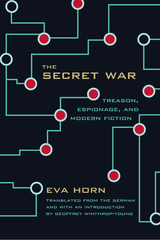 The Secret War: Treason, Espionage, and Modern Fiction
Eva Horn
Northwestern University Press, 2013 The Secret War marks a new direction in the cultural history and theory of intelligence gathering and state secrecy in the twentieth and early twenty-first centuries. While historical truth remains hidden from the public, Eva Horn finds in political fiction, which serves as both an indicator and a tool, a means to analyze political secrets. Starting with a general theory of treason and military intelligence as a specific type of political knowledge, the book charts the history of intelligence gathering from 1900 to 9/11. The Secret War analyzes literary and cinematic depictions of espionage from Rudyard Kipling and T. E. Lawrence to John Le Carré and Steven Spielberg. Horn considers these fictional accounts against the historical development of Western secret services from their inception in World War I to their struggle against current terrorist networks. The Secret War shows the crucial part fictions play in shaping conflicts, constructing “the enemy,” and deciding political strategies.
 Secret Weapons: Defenses of Insects, Spiders, Scorpions, and Other Many-Legged Creatures
Thomas Eisner, Maria Eisner, and Melody Siegler
Harvard University Press, 2005 Mostly tiny, infinitely delicate, and short-lived, insects and their relatives--arthropods--nonetheless outnumber all their fellow creatures on earth. How lowly arthropods achieved this unlikely preeminence is a story deftly and colorfully told in this follow-up to the award-winning For Love of Insects. Part handbook, part field guide, part photo album, Secret Weapons chronicles the diverse and often astonishing defensive strategies that have allowed insects, spiders, scorpions, and other many-legged creatures not just to survive, but to thrive.
In sixty-nine chapters, each brilliantly illustrated with photographs culled from Thomas Eisner's legendary collection, we meet a largely North American cast of arthropods--as well as a few of their kin from Australia, Europe, and Asia--and observe at firsthand the nature and extent of the defenses that lie at the root of their evolutionary success. Here are the cockroaches and termites, the carpenter ants and honeybees, and all the miniature creatures in between, deploying their sprays and venom, froth and feces, camouflage and sticky coatings. And along with a marvelous bug's-eye view of how these secret weapons actually work, here is a close-up look at the science behind them, from taxonomy to chemical formulas, as well as an appendix with instructions for studying chemical defenses at home. Whether dipped into here and there or read cover to cover, Secret Weapons will prove invaluable to hands-on researchers and amateur naturalists alike, and will captivate any reader for whom nature is a source of wonder.
The Secret Window: Ideal Worlds in Tanizaki’s Fiction
Anthony Chambers
Harvard University Press, 1994 At the time of his death in 1965, at the age of 79, Tanizaki Jun’ichiro had been writing fiction, plays, essays, poems, and translations almost without interruption for more than fifty-five years. In this series of meditations on seven of Tanizaki’s novels and novellas, the renowned translator Anthony Chambers focuses on the thread of fantasy that Tanizaki weaves throughout his work. He examines Tanizaki’s subtle use of storytelling devices to evoke his characters’ alternate sense of reality and to encourage the reader’s participation in their fantasies. Employing his intimate knowledge of Tanizaki’s works, Chambers superbly evokes the beauty and truth Tanizaki’s characters find in their ideal worlds.
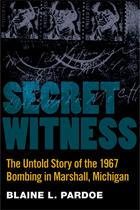 Secret Witness: The Untold Story of the 1967 Bombing in Marshall, Michigan
Blaine Pardoe
University of Michigan Press, 2012 Every small town has a moment when the real world abruptly intrudes, shattering the town's notions of itself and its people. For citizens of Marshall, Michigan, that moment came August 18, 1967. Nola Puyear was working downtown at the Tasty Cafe that morning when she received a package. She opened it and was instantly killed in a fiery explosion. In the months that followed, law enforcement and prosecutors wrestled with a crime that to all appearances was senseless. Evidence recovered from the blown-up restaurant, including a bottle of pills that had been tainted with lye, suggested a concerted plot to murder Mrs. Puyear. But why had someone wanted to kill the well-liked woman, by all accounts a pillar of her close-knit community? For that matter, was Marshall really the quaint paradise it seemed to be? Secret Witness brings to light startling new evidence and freshly uncovered facts to address these and other questions that, to this day, surround one of Michigan's most brutal murders. Based on extensive interviews with surviving prosecutors, police, and witnesses, Blaine Pardoe re-creates the investigation that pried into Marshall's dark underbelly and uncovered the seamy private lives led by some of the town's citizenry but led to only tenuous theories about the bombing. The book also examines the pivotal role played by the Secret Witness program, an initiative by the Detroit News that offered rewards for anonymous tips related to violent crimes. What's ultimately revealed is the true depth of evil that occurred in Marshall that day. Every small town has dirty little secrets. This time, they were deadly.
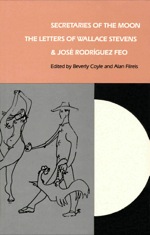 Secretaries of the Moon: The Letters of Wallace Stevens and José Rodriguez Feo
Beverly Coyle and Alan Filreis, eds.
Duke University Press, 1986 The letter from Jose Rodriguez Feo that prompted Stevens's poem was the third in a ten-year correspondence (1944-54) between the poet and the young Cuban, who quickly became Stevens's "most exciting correspondent." The two shared a Harvard education, both were anxious to see Stevens translated for a Cuban audience, and each had an enduring admiration for Santayana, whose awareness of the cultural tensions between the Northern and Southern hemispheres formed a basis for the protracted argument between Stevens as the practical, Protestant father and the passionate Rodriguez Feo. The Cuban's descriptions of his life at the Villa Olga, of his black-and-white cow Lucera and his mule Pompilio, delighted Stevens, as did his wide-ranging questions and pronouncements of literary matters. Unaware of the well-known Stevens reticence, Rodriguz Feo elicited a more informal, playful response than Stevens's other correspondents. Formal salutations soon gave way to "Dear Antillean," "Dear Wallachio." Coyle and Filreis present the entire extant correspondence between the two men. The fifty-one Rodriguez Feo letters and ten of the numerous Stevens letters are printed here for the first time, and the exchange between the two is unusually complete. The work includes a critical introduction and complete annotation of the letters.
Secretly Inside: A Novel
Hans Warren; Translated by S. J. Leinbach
University of Wisconsin Press, 2006 In the Dutch countryside the war seems far away. For most people, at least. But not for Ed, a Jew in Nazi-occupied Holland trying to find some safe sanctuary. Compelled to go into hiding in the rural province of Zeeland, he is taken in by a seemingly benevolent family of farmers. But, as Ed comes to realize, the Van 't Westeindes are not what they seem. Camiel, the son of the house, is still in mourning for his best friend, a German soldier who committed suicide the year before. And Camiel's fiery, unstable sister Mariete begins to nurse a growing unrequited passion for their young guest, just as Ed realizes his own attraction to Camiel. As time goes by, Ed is drawn into the domestic intrigues around him, and the farmhouse that had begun as his refuge slowly becomes his prison.
 Secrets and Rivals: Wartime Letters and the Parents I Never Knew
R. Bruce Larson
University of Missouri Press, 2015 Ruth Larson saved nearly 700 letters she and her husband Bob exchanged during World War II. Opening the box while his mother lay dying, her son Bruce expected to find commonplace details of his parents’ early life together. He instead discovered a story of deception, obsession, and betrayal.
Reading through the letters, he is drawn into his parents’ courtship amid the hardships of separation and war. Beyond the tumultuous romance, Larson finds that he barely recognizes his father, whom he knew only as distant and impassive. He uncovers shocking truths about his mother, Ruth, whom family lore had pigeonholed as sweetly pious.
At the time of the letters, Bob is a young Coast Guard clerk fighting off depression with thoughts of his dream girl back home. Back in Minnesota, Ruth passes the days adrift in romantic fantasies and liaisons with local admirers. Bob’s suspicions about Ruth and his obsession with her from afar threaten the young man’s fragile hold on his sanity, but he will not give her up. Decades later, their son comes to feel a tenderness for both his parents and to understand how their losses, fears, and reluctance can transform and refashion family bonds.
 Secrets and Truths: Ethnography in the Archive of Romania's Secret Police
Katherine Verdery
Central European University Press, 2014 Nothing in Soviet-style communism was as shrouded in mystery as its secret police. Its paid employees were known to few and their actual numbers remain uncertain. Its informers and collaborators operated clandestinely under pseudonyms and met their officers in secret locations. Its files were inaccessible, even to most party members. The people the secret police recruited or interrogated were threatened so effectively that some never told even their spouses, and many have held their tongues to this day, long after the regimes fell.With the end of communism, many of the newly established governments—among them Romania's—opened their secret police archives. From those files, as well as her personal memories, the author has carried out historical ethnography of the Romanian Securitate. Secrets and Truths is not only of historical interest but has implications for understanding the rapidly developing "security state" of the neoliberal present.
Secrets from the Center of the World
Joy Harjo and Stephen E. Strom
University of Arizona Press, 1989 "My house is the red earth; it could be the center of the world."
This is Navajo country, a land of mysterious and delicate beauty. "Stephen Strom's photographs lead you to that place," writes Joy Harjo. "The camera eye becomes a space you can move through into the powerful landscapes that he photographs. The horizon may shift and change all around you, but underneath it is the heart with which we move." Harjo's prose poems accompany these images, interpreting each photograph as a story that evokes the spirit of the Earth. Images and words harmonize to evoke the mysteries of what the Navajo call the center of the world.
 Secrets I Won't Take with Me: Home, War, and the Struggle for Peace in Israel
Yossi Beilin
University of Alabama Press, 2025 An Israeli political leader’s riveting first-hand account of pivotal moments from recent Israeli history, including the Oslo Peace Accords, the founding of the Birthright Initiative, the assassination of Yitzhak Rabin, the rise of the Israeli far right, and more In Secrets I Won't Take with Me, Yossi Beilin, a key Israeli political and ministerial leader, offers an intimate and candid memoir that chronicles pivotal events in the nation’s recent history. From the crucible of its founding to the complexities of the modern era, Beilin reveals an insider’s perspective and previously undocumented insights about the events that have and continue to shape Israel. Beginning his career as an academic and a journalist, Beilin became the spokesperson of the Labor Party in 1977. Among his many career highlights include the chairmanship of the Meretz-Yachad Party, Minister of Justice, Minister of Religious Affairs, and Deputy Finance Minister, and perhaps most significantly, as Deputy Foreign Minister during the Israel-PLO Oslo Peace Accords. As a key architect of the Oslo Peace Accords, he shares unprecedented details of the negotiations that defined an era. Beyond diplomacy, Beilin illuminates his role in shaping Israel’s identity, from steering Israel away from its alliance with apartheid South Africa to the foundation of the influential Birthright program. With unflinching honesty, Beilin navigates the triumphs and tragedies of a nation, from the euphoria of the Six-Day War to the heartbreak of Yitzhak Rabin’s assassination. A deeply personal memoir of one man’s life interwoven with a nation’s, Beilin’s stunning account of his career serves as a masterful tour d’horizon of Israel’s recent past and evolving future.
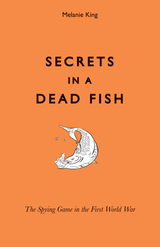 Secrets in a Dead Fish: The Spying Game in the First World War
Melanie King
Bodleian Library Publishing, 2014 How did German intelligence agents use a dead fish to convey critical information to their operatives? What did an advertisement for a dog in the Times have to do with the movement of British troops into Egypt? And why did British officers suddenly become suspicious of the trousers hanging on a Belgian woman’s washing line?
Throughout World War I, spymasters and their networks of secret agents developed many clever—and sometimes comical—methods of covert communication. Stacks of bread in a bakery window, puffs of smoke from a chimney, and even woolen pullovers were all used to pass on secret messages that were decipherable only to the well-trained eye. Drawing on the memoirs of eight spies, Melanie King divulges these and other tricks of the trade while sharing details from their astonishing stories. Among her informants are British intelligence officers working undercover in Germany and France, including a former Metropolitan police officer who once hunted Jack the Ripper; a German secret service officer codenamed “Agricola;” an American newspaperman; and an Austrian agent who disguised himself during his career as everything from a Jewish peddler to a Russian officer.
A fascinating compendium of clever and long-forgotten ruses—interspersed with the stories of the spies themselves—Secrets in a Dead Fish sheds new light on the shadowy world of Great War espionage.
 Secrets Need Words: Indonesian Poetry, 1966–1998
Harry Aveling
Ohio University Press, 2001 Short listed for the 2007 New South Wales Premier's Translation Prize The period from 1966 to 1999 represents a distinct era in Indonesian history. Throughout the “New Order” regime of President Suharto, the policies of economic development and political stability were dominant. However, the public opinion of personal expression was consistently under suspicion, and indeed dissent was severely punished.
Secrets Need Words traces the development of Indonesian poetry throughout this entire period. Texts are presented both in the original Indonesian and in careful, stylistically sensitive English translations.
In this anthology of contemporary work by Indonesian poets, the renowned translator and editor Harry Aveling presents a series of ongoing analyses detailing the political and social shifts that have influenced the work of particular poets.
Professor Aveling's analyses, along with the poems themselves, demonstrate how the poets responded to the power of the state in a variety of ways ranging from direct confrontation to withdrawal into personal and private realms characterized by fantasy and the use of heavily rhythmic language.
Secrets Need Words will be of interest to scholars of Indonesia and comparative literature, and will be for many years to come a basic text for scholarship and teaching. But it also offers all readers of poetry an opportunity to explore a new, complex, and exciting body of literature from one of the world's largest nations.
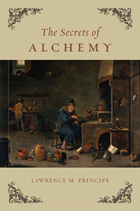 The Secrets of Alchemy
Lawrence M. Principe
University of Chicago Press, 2012 In The Secrets of Alchemy, Lawrence M. Principe, one of the world’s leading authorities on the subject, brings alchemy out of the shadows and restores it to its important place in human history and culture. By surveying what alchemy was and how it began, developed, and overlapped with a range of ideas and pursuits, Principe illuminates the practice. He vividly depicts the place of alchemy during its heyday in early modern Europe, and then explores how alchemy has fit into wider views of the cosmos and humanity, touching on its enduring place in literature, fine art, theater, and religion as well as its recent acceptance as a serious subject of study for historians of science. In addition, he introduces the reader to some of the most fascinating alchemists, such as Zosimos and Basil Valentine, whose lives dot alchemy’s long reign from the third century and to the present day. Through his exploration of alchemists and their times, Principe pieces together closely guarded clues from obscure and fragmented texts to reveal alchemy’s secrets, and—most exciting for budding alchemists—uses them to recreate many of the most famous recipes in his lab, including those for the “glass of antimony” and “philosophers’ tree.” This unique approach brings the reader closer to the actual work of alchemy than any other book.
 Secrets of Diamond Head: A History and Trail Guide
Denby Fawcett
University of Hawaii Press, 2014 Many people know about Hawai‘i’s volcanic crater, Diamond Head, but very few are aware of the crater’s colorful past. After Diamond Head burst from the shore of O‘ahu in a series of steam explosions, the crater sat silent for hundreds of thousands of years, before becoming a backdrop to some of the most famous moments in Hawai‘i’s history. Author Denby Fawcett’s definitive book breathes life into the iconic but silent landmark, which some geologists consider the most perfect example of a volcanic tuff cone in the world. Secrets of Diamond Head traces the life of the crater from its birth to its use by hikers and the military today.
The book includes a complete trail guide as well as information on the ancient Hawaiians who erected five religious temples on the slopes of the crater known as Lē‘ahi. The modern history of the volcanic cone is just as fascinating, featuring everything from rock concerts to an on-going battle between community activists fighting to preserve the crater’s wild beauty and developers wanting to commercialize its open spaces. After reading Secrets of Diamond Head, you will never look at this geologic wonder in the same way.
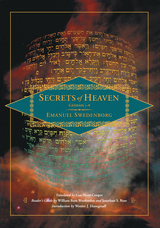 Secrets of Heaven Volume 1: The Deluxe New Century Edition
Emanuel Swedenborg
Swedenborg Foundation Publishers, 2008 The first major theological work of the Swedish scientist-turned-seer Emanuel Swedenborg, Secrets of Heaven is in one sense a traveler's account. It reveals the unseen realms that await beyond death--the light, the warmth, and harmony of the angelic heavens and the varied darkness of the multitudinous hells. But in addition, the work offers a detailed examination of Genesis and Exodus, providing a model for a new way to understand the entire Bible. Prized for both the simplicity of its explanation and the breadth and depth of its vision, Swedenborg's reading of Scripture discloses layer upon layer of inner meaning, all without undermining the power and import of the literal word.
This first of the multivolume work contains an introduction by Wouter J. Hanegraaff, professor of History of Hermetic Philosophy and Related Currents at the University of Amsterdam, and a reader's guide by Swedenborgian scholar William Ross Woofenden and New Century Edition Series Editor Jonathan S. Rose.
The New Century Edition of the Works of Emanuel Swedenborg is a modern-language, scholarly translation of Swedenborg’s theological works. The series’ easy-to-read style retains the dignity, variety, clarity, and gender-inclusive language of Swedenborg’s original Latin, bringing his thought to life. Introductions and annotations by eminent, international scholars place Swedenborg’s writings in their historical context and illuminate obscure references within the text, enabling readers to understand and trace Swedenborg’s influence as never before.
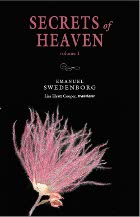 Secrets of Heaven Volume 1: The Portable New Century Edition
Emanuel Swedenborg
Swedenborg Foundation Publishers, 2010 The first major theological work of the Swedish scientist-turned-seer Emanuel Swedenborg, Secrets of Heaven is in one sense a traveler's account. It reveals the unseen realms that await beyond death--the light, the warmth, and harmony of the angelic heavens and the varied darkness of the multitudinous hells. But in addition, the work offers a detailed examination of Genesis and Exodus, providing a model for a new way to understand the entire Bible. Prized for both the simplicity of its explanation and the breadth and depth of its vision, Swedenborg's reading of Scripture discloses layer upon layer of inner meaning, all without undermining the power and import of the literal word.
The New Century Edition of the Works of Emanuel Swedenborg is a modern-language, scholarly translation of Swedenborg’s theological works. The series’ easy-to-read style retains the dignity, variety, clarity, and gender-inclusive language of Swedenborg’s original Latin, bringing his thought to life.
This portable edition of Secrets of Heaven vol. 1 includes the text of the New Century Edition without the introduction, annotations, and other supplementary of the deluxe hardcover and paperback editions.
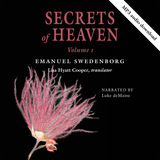 Secrets of Heaven Volume 1: The Portable New Century Edition
Emanuel Swedenborg
Swedenborg Foundation Publishers, 2023 The first major theological work of the Swedish scientist-turned-seer Emanuel Swedenborg, Secrets of Heaven is in one sense a traveler's account. It reveals the unseen realms that await beyond death--the light, the warmth, and harmony of the angelic heavens and the varied darkness of the multitudinous hells. But in addition, the work offers a detailed examination of Genesis and Exodus, providing a model for a new way to understand the entire Bible. Prized for both the simplicity of its explanation and the breadth and depth of its vision, Swedenborg's reading of Scripture discloses layer upon layer of inner meaning, all without undermining the power and import of the literal word.
The New Century Edition of the Works of Emanuel Swedenborg is a modern-language, scholarly translation of Swedenborg’s theological works. The series’ easy-to-read style retains the dignity, variety, clarity, and gender-inclusive language of Swedenborg’s original Latin, bringing his thought to life.
This portable edition of Secrets of Heaven vol. 1 includes the text of the New Century Edition without the introduction, annotations, and other supplementary of the deluxe hardcover and paperback editions.
 Secrets of Heaven Volume 10: The Portable New Century Edition
Emanuel Swedenborg
Swedenborg Foundation Publishers, 2025 In Secrets of Heaven, Volume 10, the eighteenth century Christian mystic Emanuel Swedenborg presents the meaning behind the words of Exodus chapters 1–8, decoding the spiritual significance of key events—including the oppression of the Israelites, the birth and calling of Moses, and the first plagues upon Egypt. Using what he calls “correspondences,” Swedenborg connects these stories to the struggles of the human soul, the process of spiritual rebirth, and the challenges of embracing divine truth. For example, when Moses is placed in a basket and hidden among the reeds of the Nile (Exodus 2), Swedenborg unpacks this iconic moment as a metaphor for divine truth being born within us—but initially concealed. The river represents worldly falsities and confusion, while the basket covered in tar and pitch reflects how, early in our spiritual awakening, truth is wrapped in external, imperfect layers. Yet, like Moses, this truth is protected by divine care until it grows strong enough to emerge. For Swedenborg, this story becomes a tender image of how our spiritual understanding often begins quietly, even hidden, before it transforms us. Presented in a clear, modern translation, this Portable New Century Edition offers an accessible entry point to Swedenborg’s visionary theology. Since its original publication in Neo-Latin as Arcana Coelestia in the mid-1700s, Swedenborg’s Secrets of Heaven series has been providing a compelling perspective on the hidden wisdom within scripture to biblical scholars, spiritual seekers, and individuals exploring the deeper layers of faith.
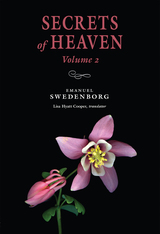 Secrets of Heaven Volume 2: The Portable New Century Edition
Emanuel Swedenborg
Swedenborg Foundation Publishers, 2012 Secrets of Heaven is Emanuel Swedenborg’s magnum opus, a fifteen-volume work that delves into the inner, spiritual meaning of the Bible. Starting from the first verse, Swedenborg goes through Genesis and Exodus verse by verse, sometimes word by word, uncovering the fascinating teachings behind the literal account. By doing careful comparison of passages and tracing individual images and motifs through the Bible, he demonstrates that it contains a profound, coherent, and unified inner meaning.
The second volume covers Genesis 9–15, beginning with God’s covenant with Noah following the Flood and then following the familiar story of the patriarch Abraham. In the process, Swedenborg discusses the concept of regeneration, or spiritual rebirth, and describes the way the people act before and after rebirth. He also talks about an epoch of human history that he calls the ancient church and the spiritual state of the people in that church. Interspersed with the biblical commentary are chapters on related topics such as the lives of angels in heaven, how distance and time work in the spiritual world, and the nature of hell. Secrets of Heaven provides essential insight into Swedenborg’s theology and lays the groundwork for the rest of his writings. This new translation, part of the New Century Edition series, makes his insights into Scripture and his accounts of his spiritual experiences more accessible than ever before.
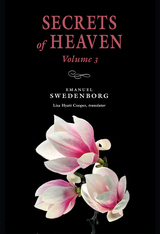 Secrets of Heaven Volume 3: The Portable New Century Edition
Emanuel Swedenborg
Swedenborg Foundation Publishers, 2022 Secrets of Heaven is Emanuel Swedenborg’s magnum opus, a fifteen-volume work that delves into the inner, spiritual meaning of the Bible. Starting from the first verse, Swedenborg goes through Genesis and Exodus verse by verse, sometimes word by word, uncovering the fascinating teachings behind the literal account. By doing careful comparison of passages and tracing individual images and motifs through the Bible, he demonstrates that it contains a profound, coherent, and unified inner meaning.
This third volume covers the inner meaning of Genesis 16–21, giving an account of the early stages of Jesus’ inward development, including the interactions of his human side and his divine side. It additionally addresses other topics, and in particular the true nature of the Last Judgment.
This new translation, part of the New Century Edition series, makes Swedenborg’s insights into Scripture and his accounts of his spiritual experiences more accessible than ever before.
|
|
